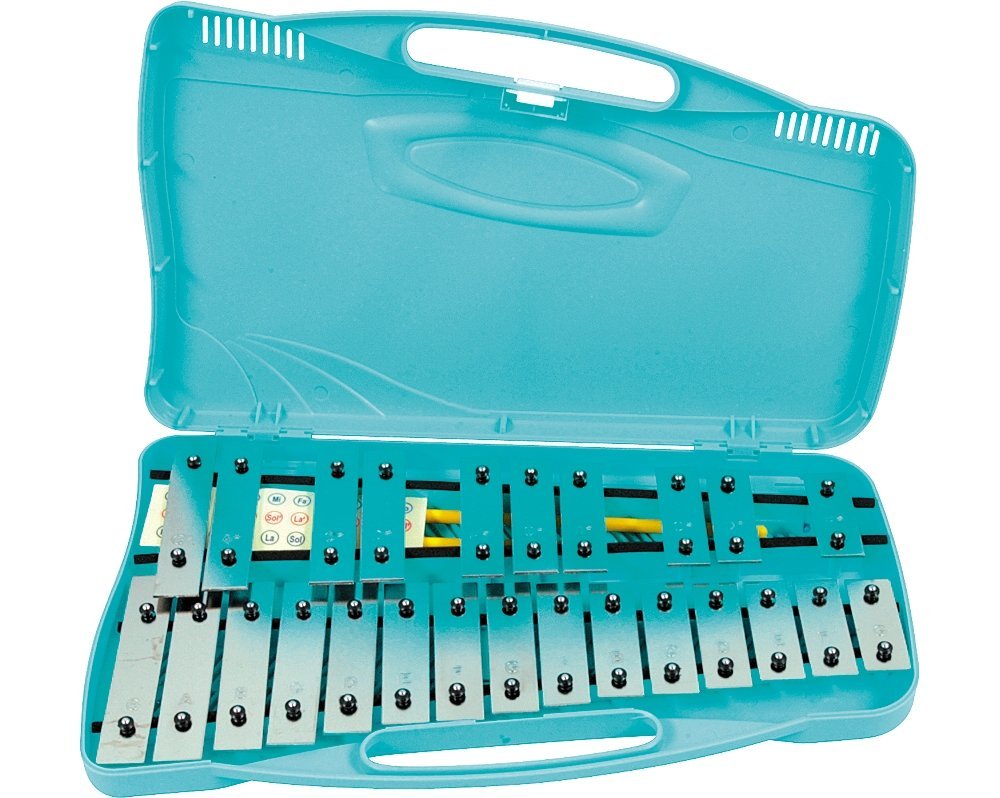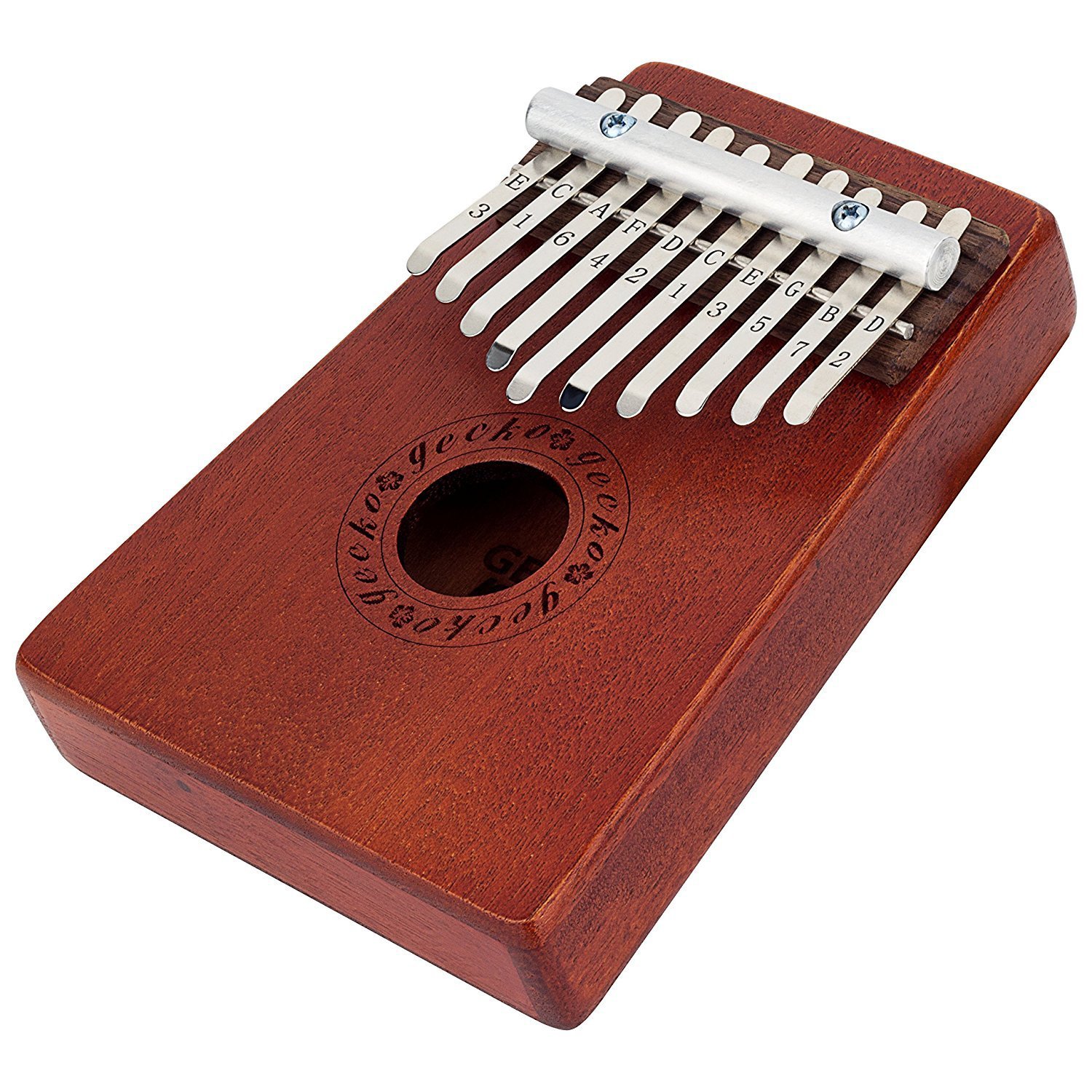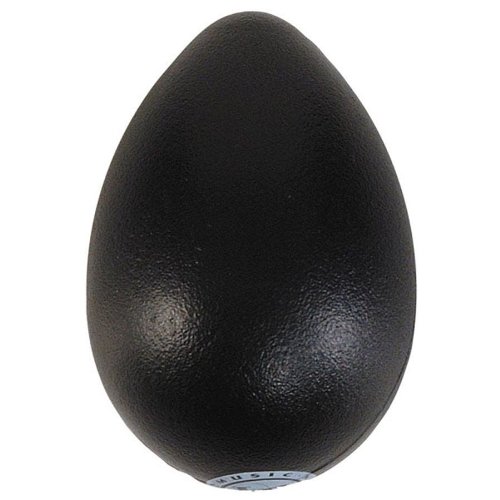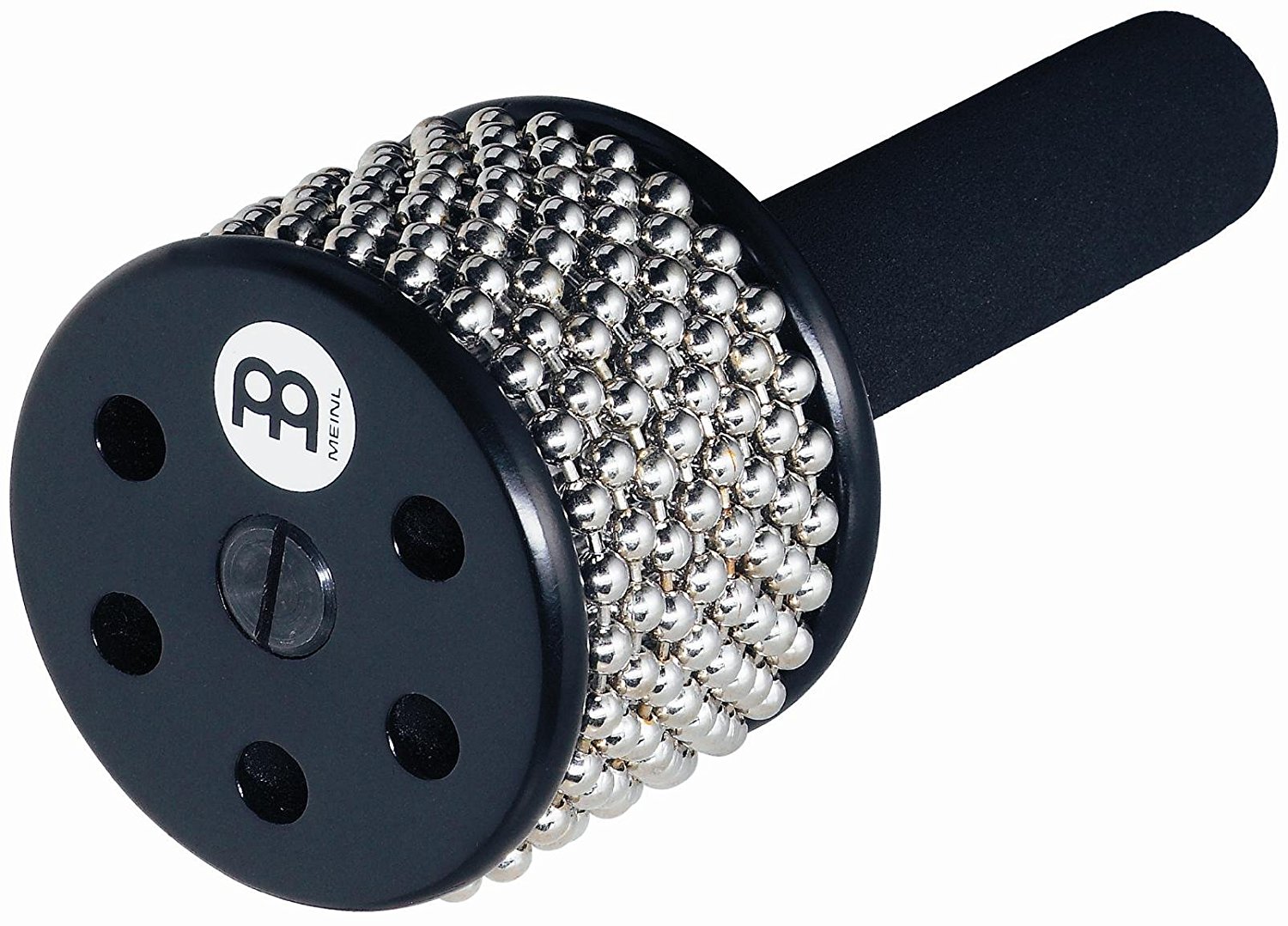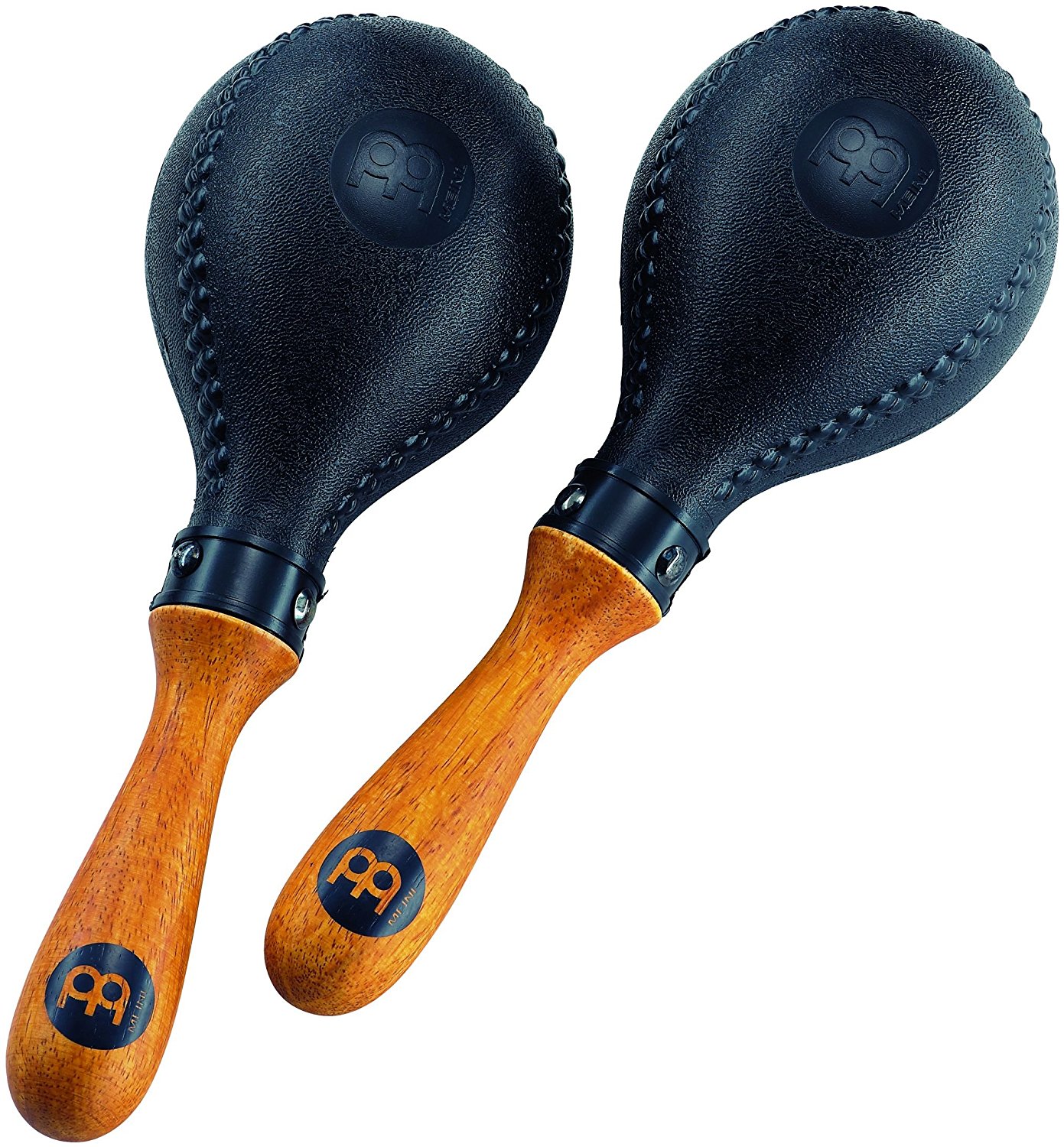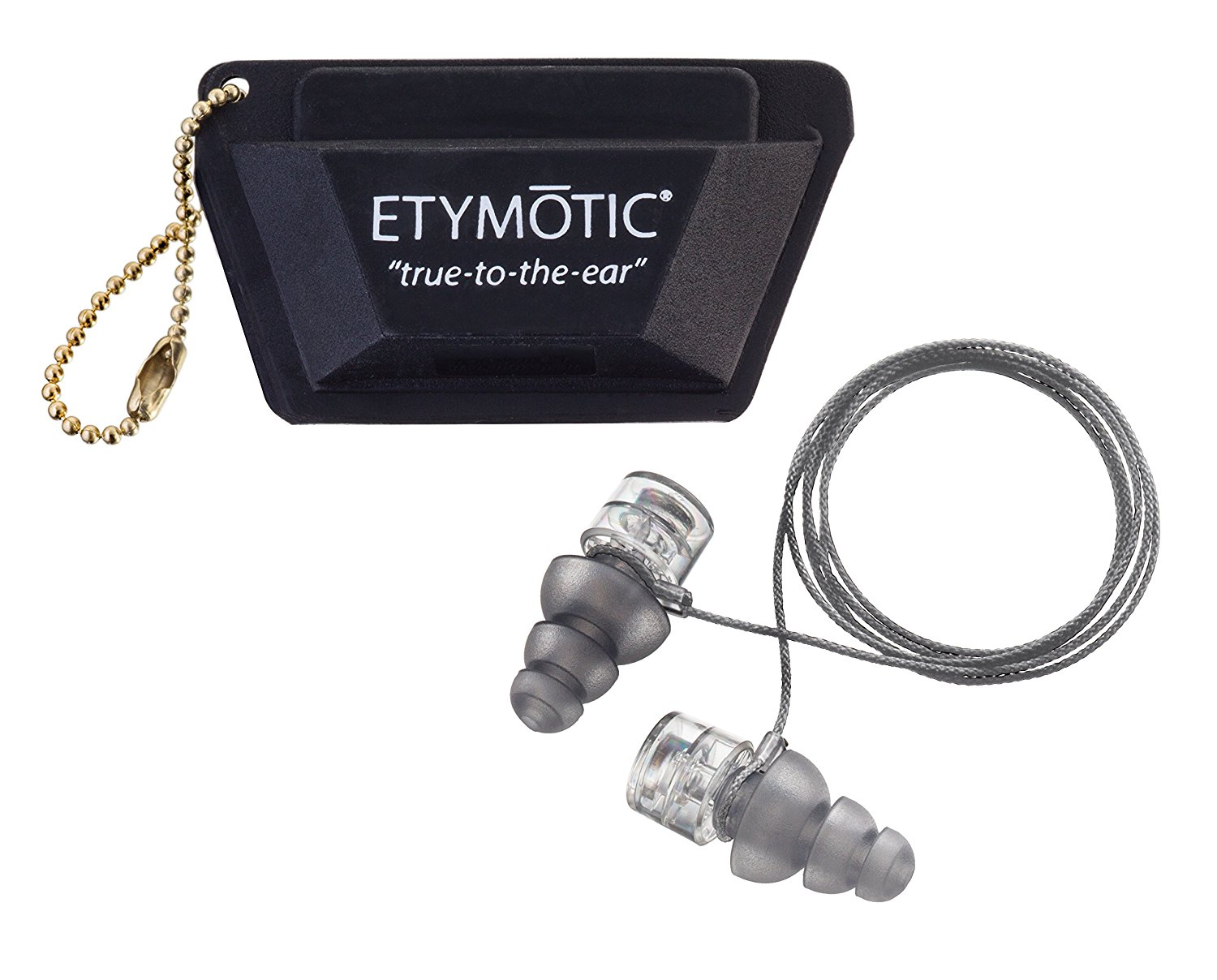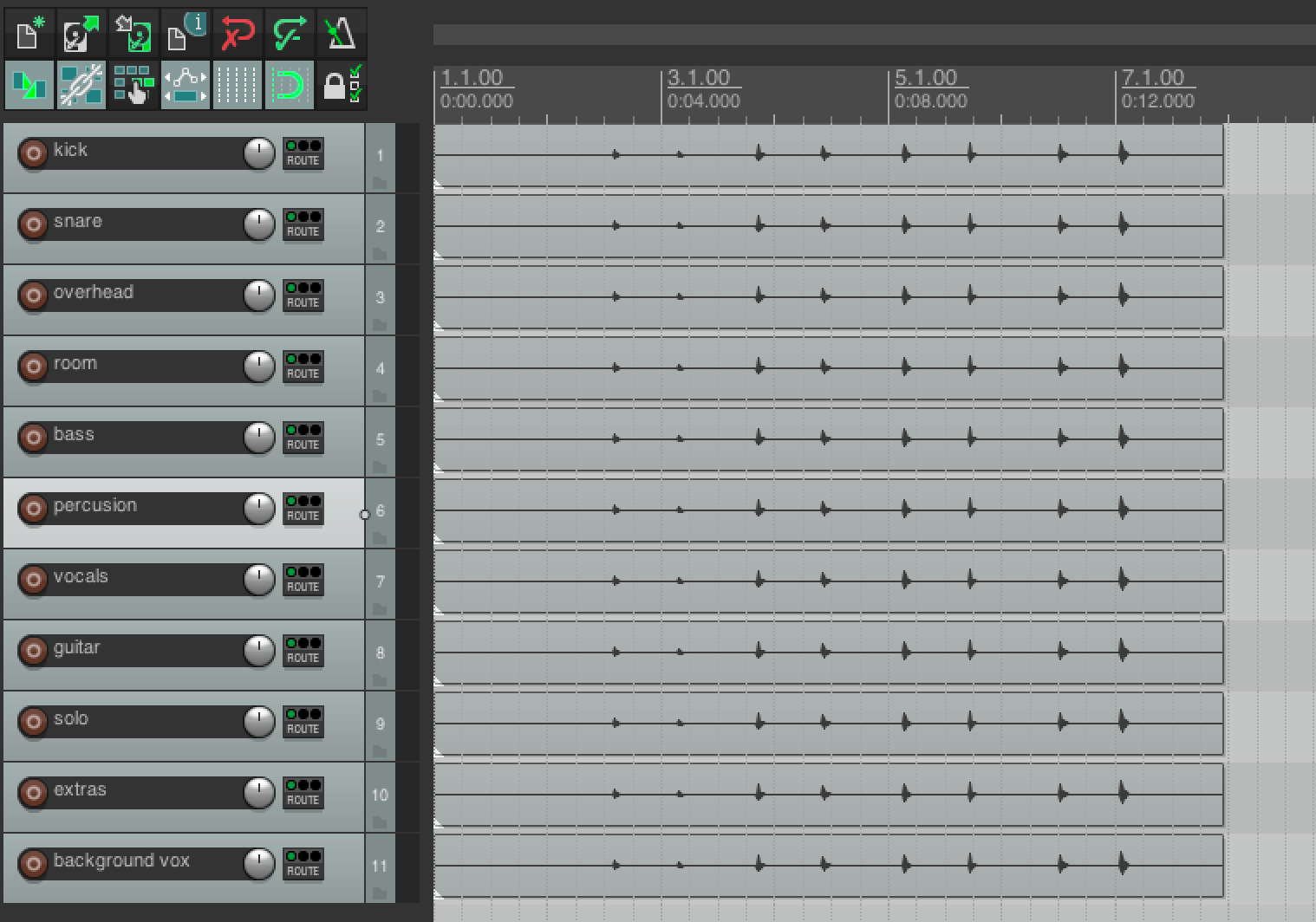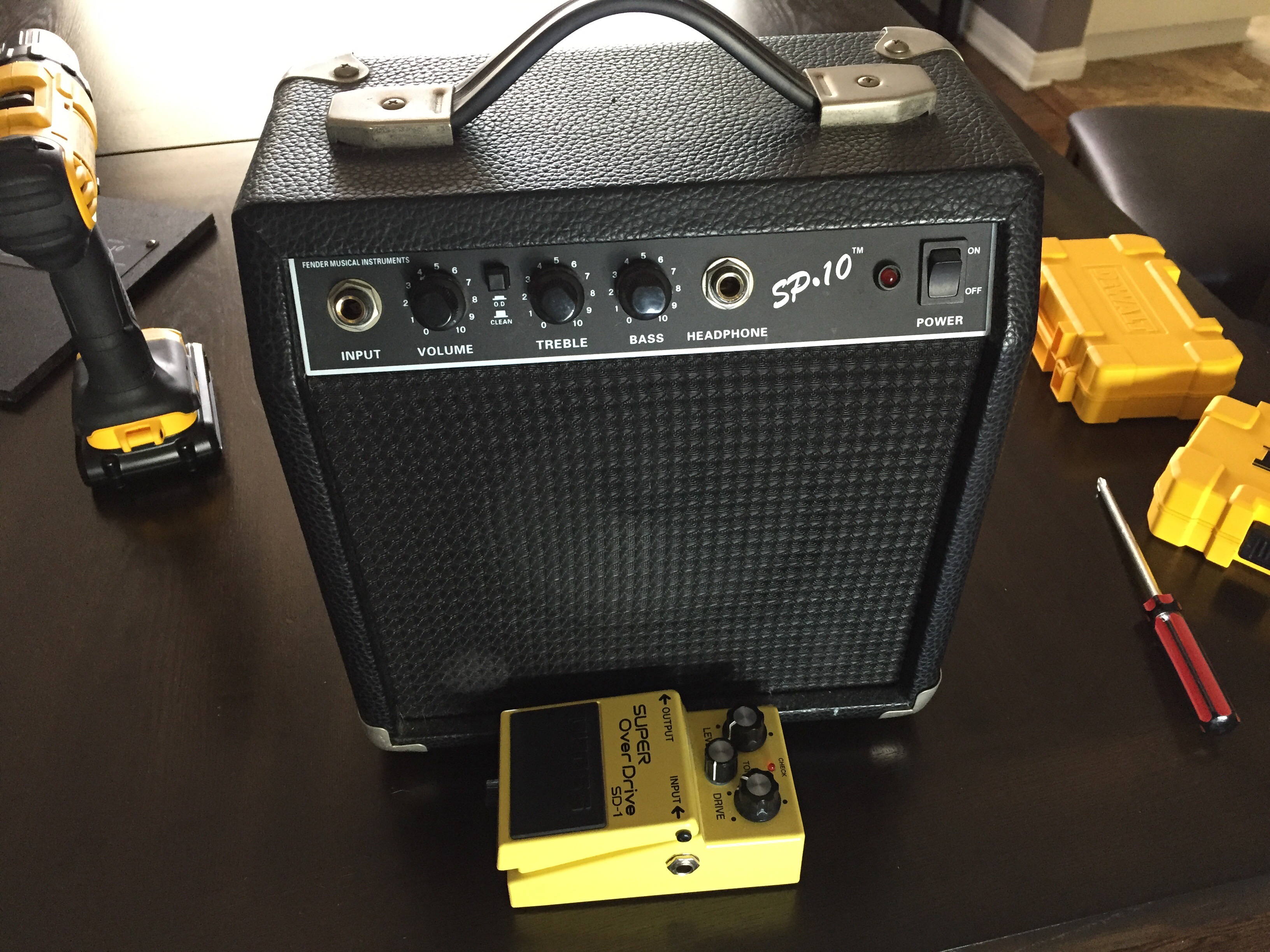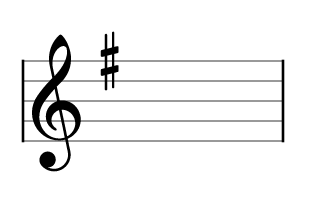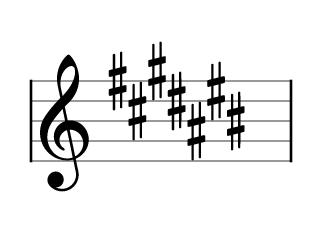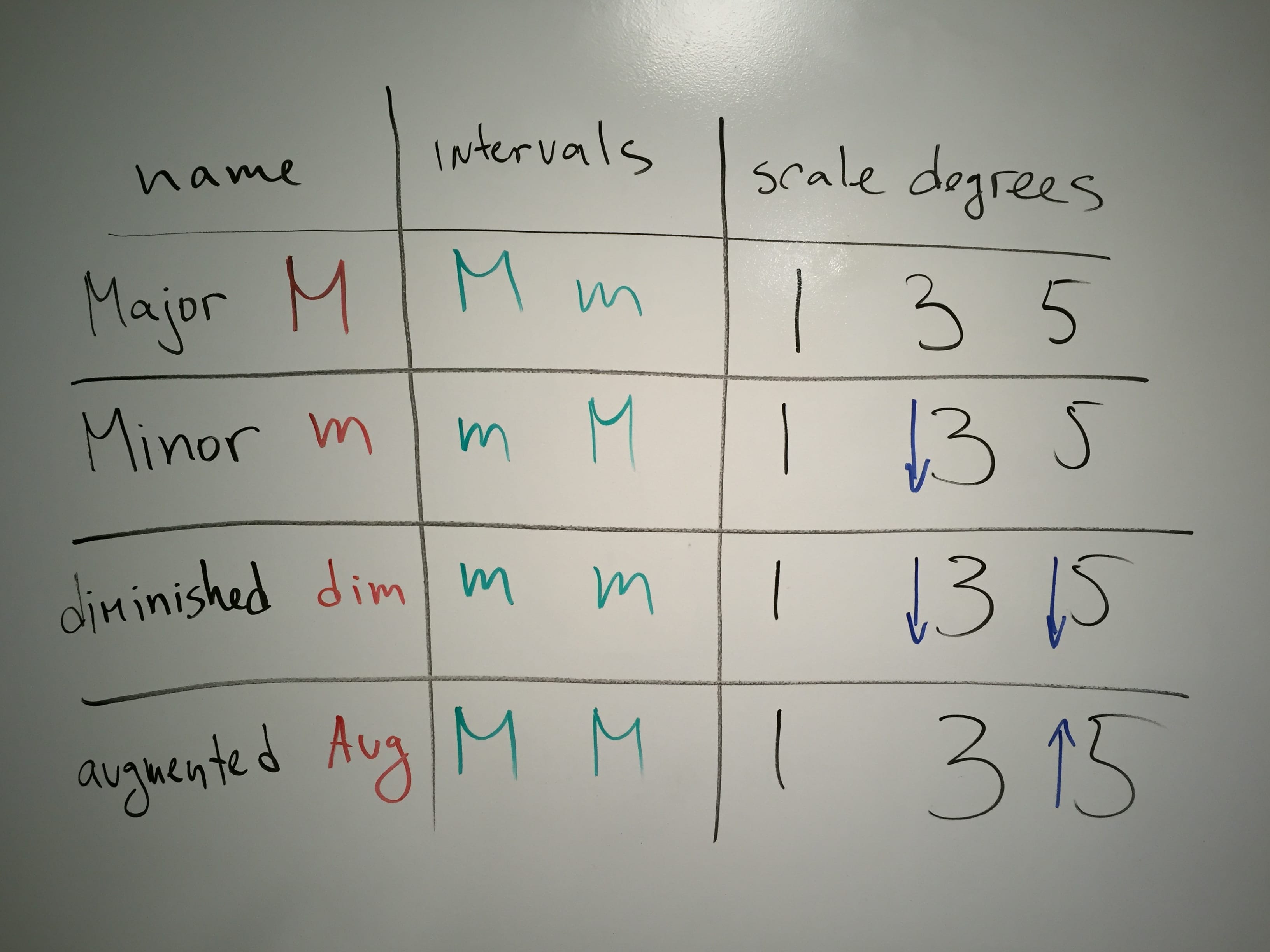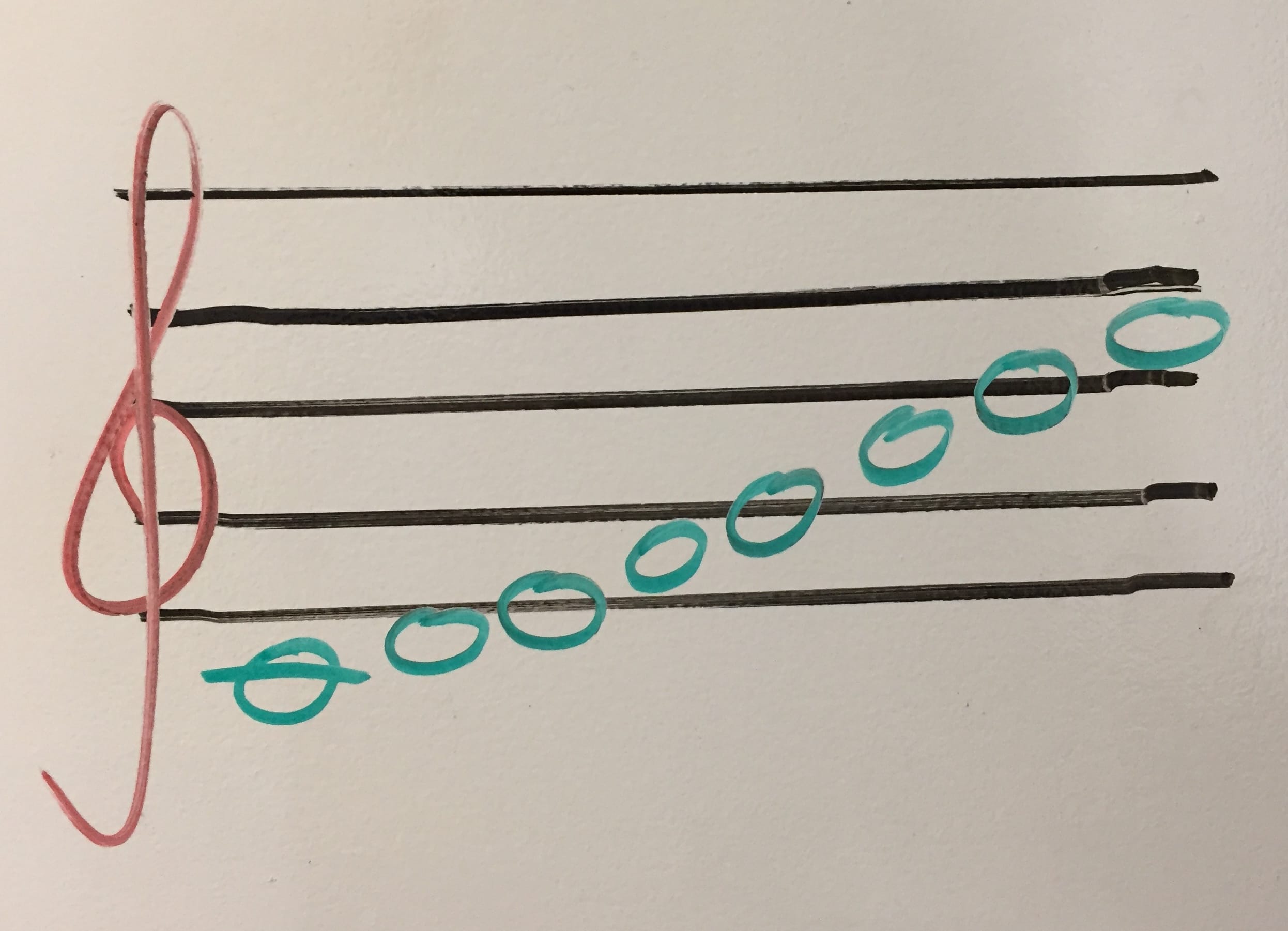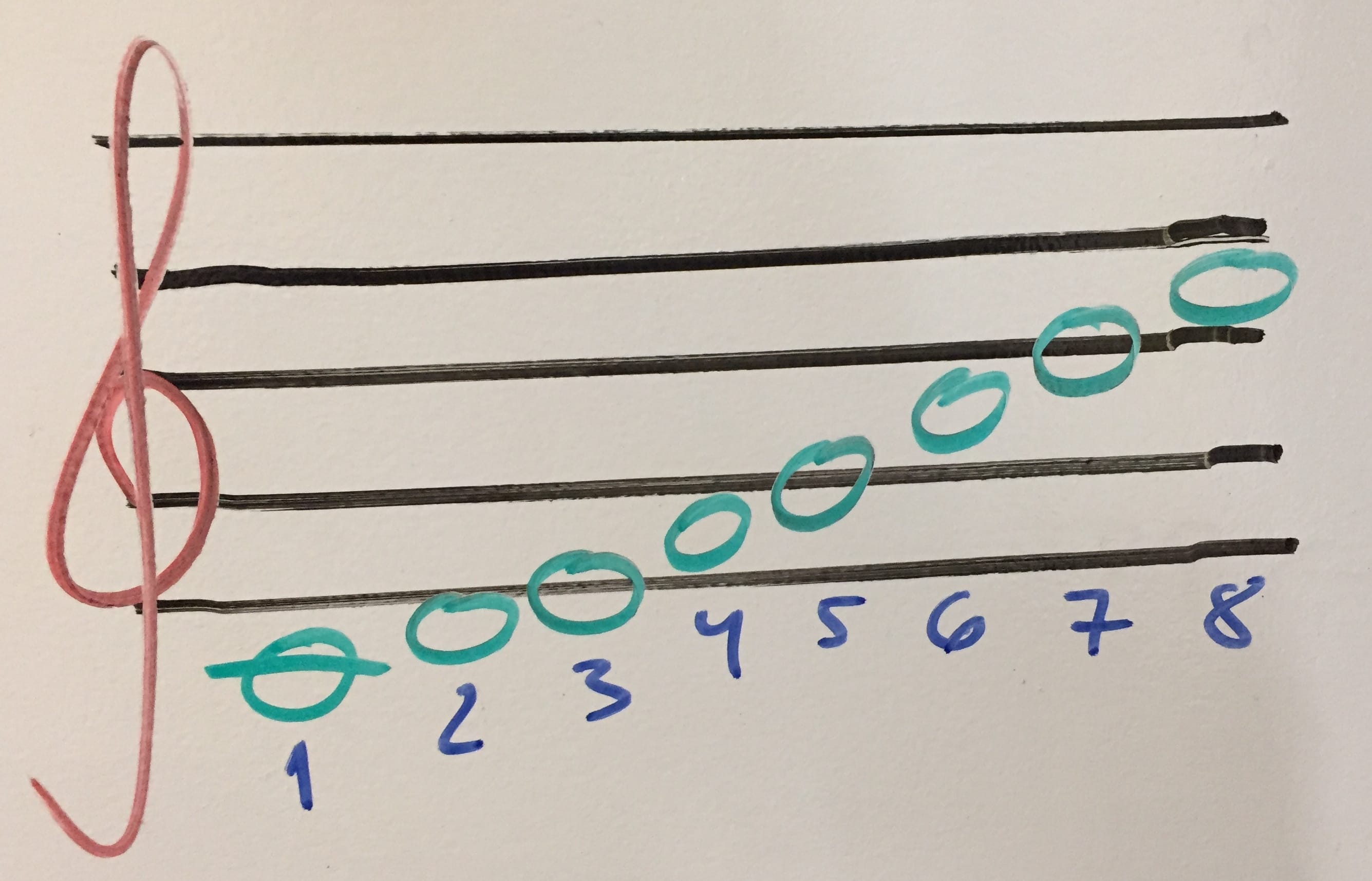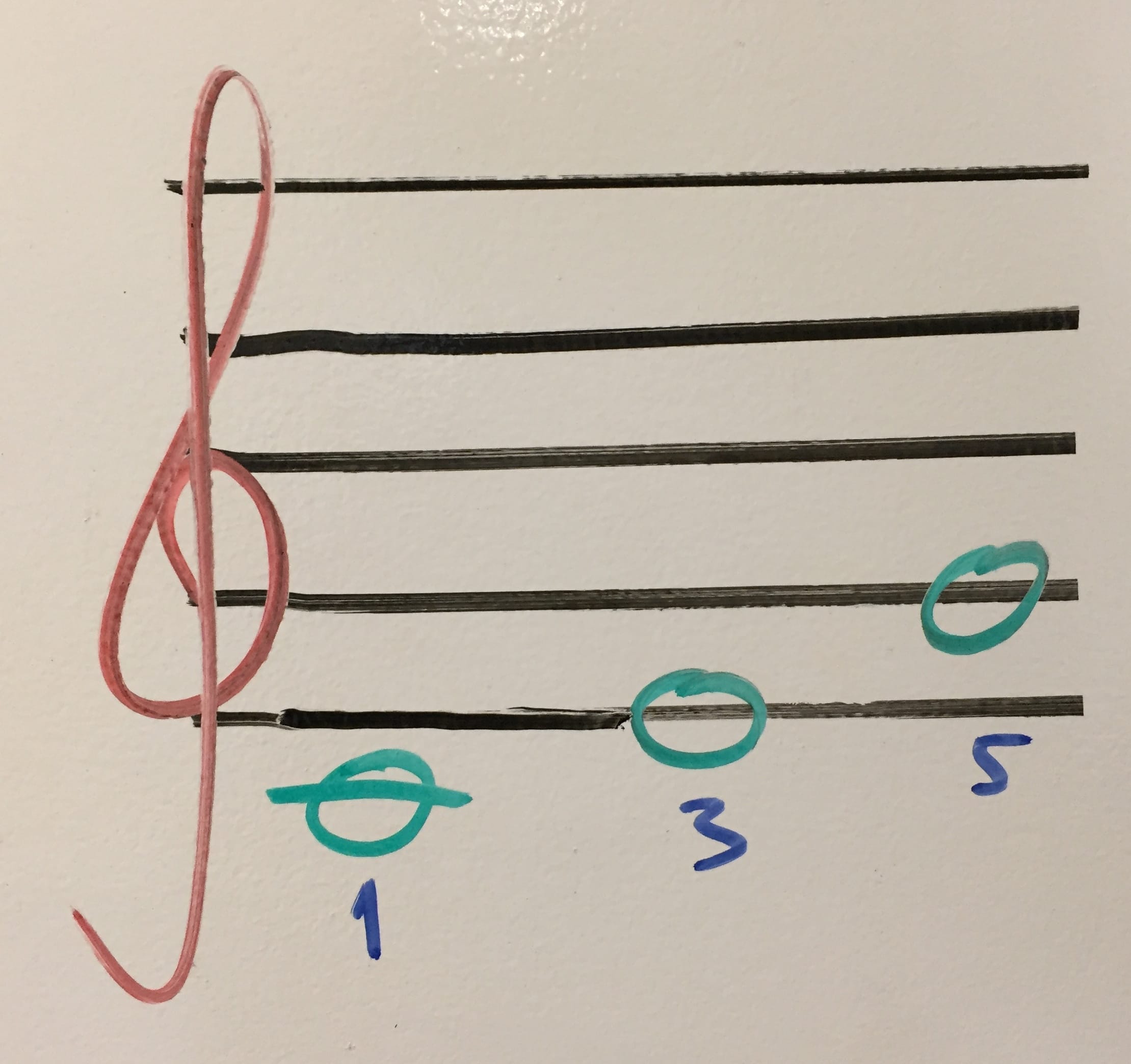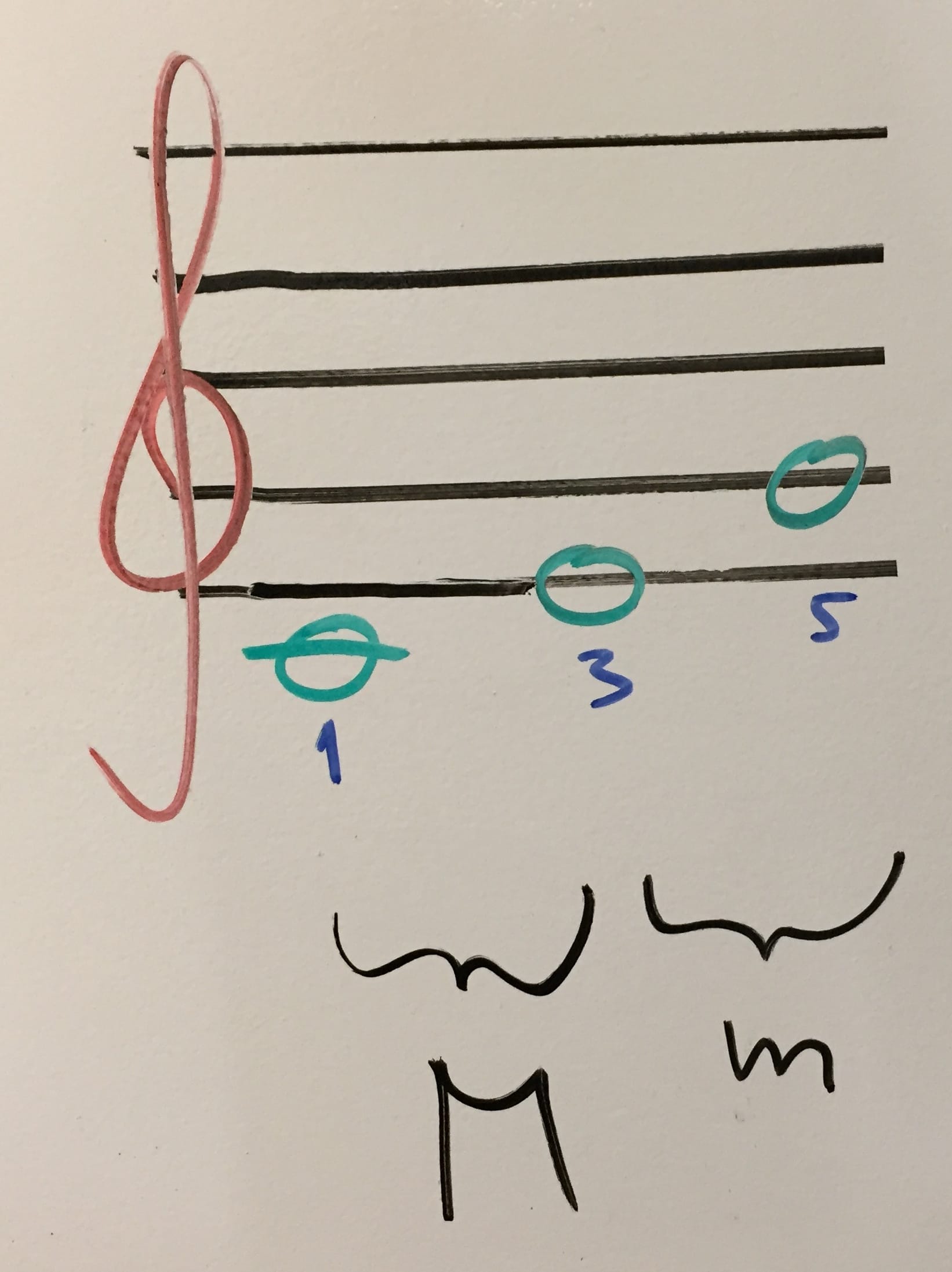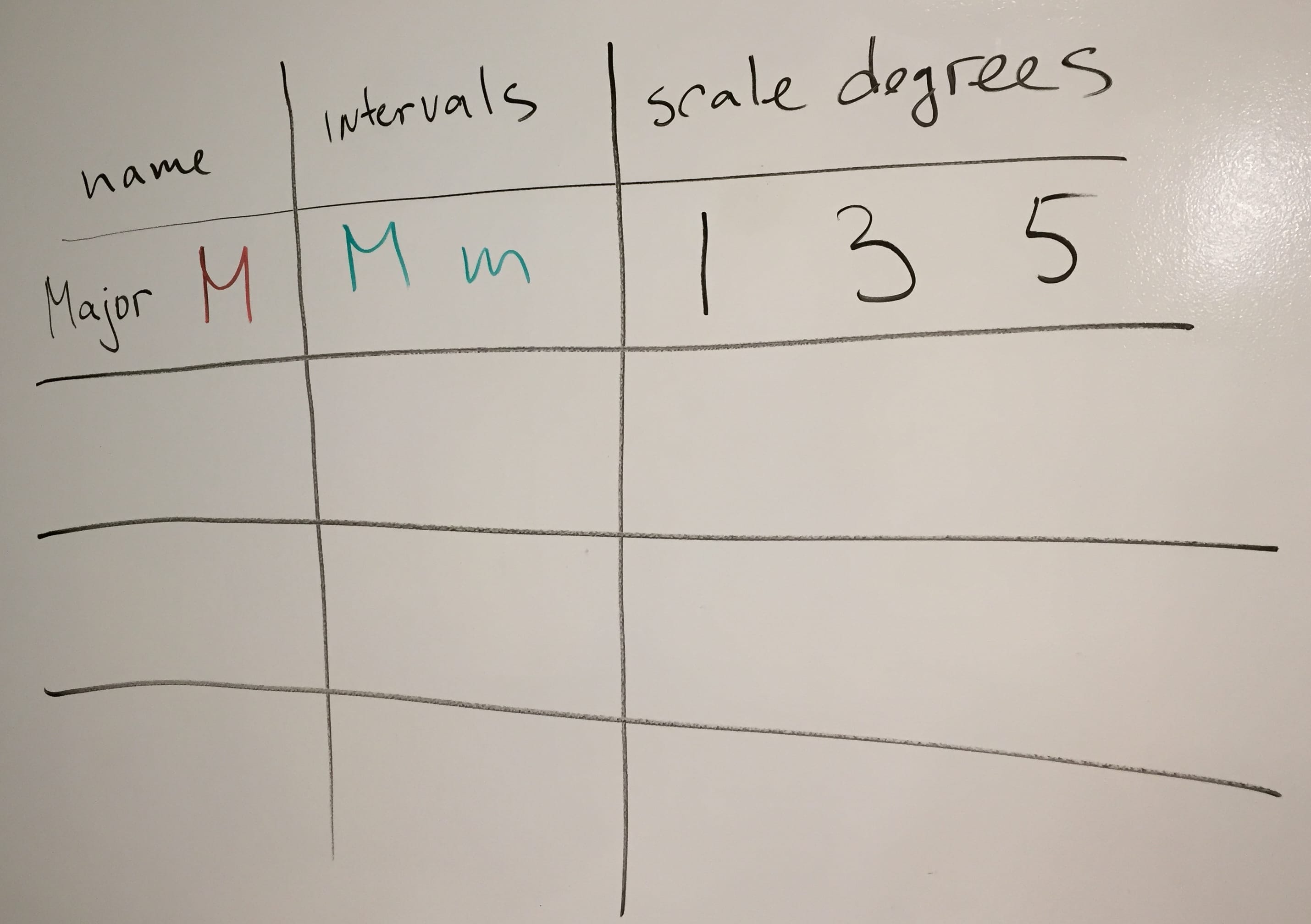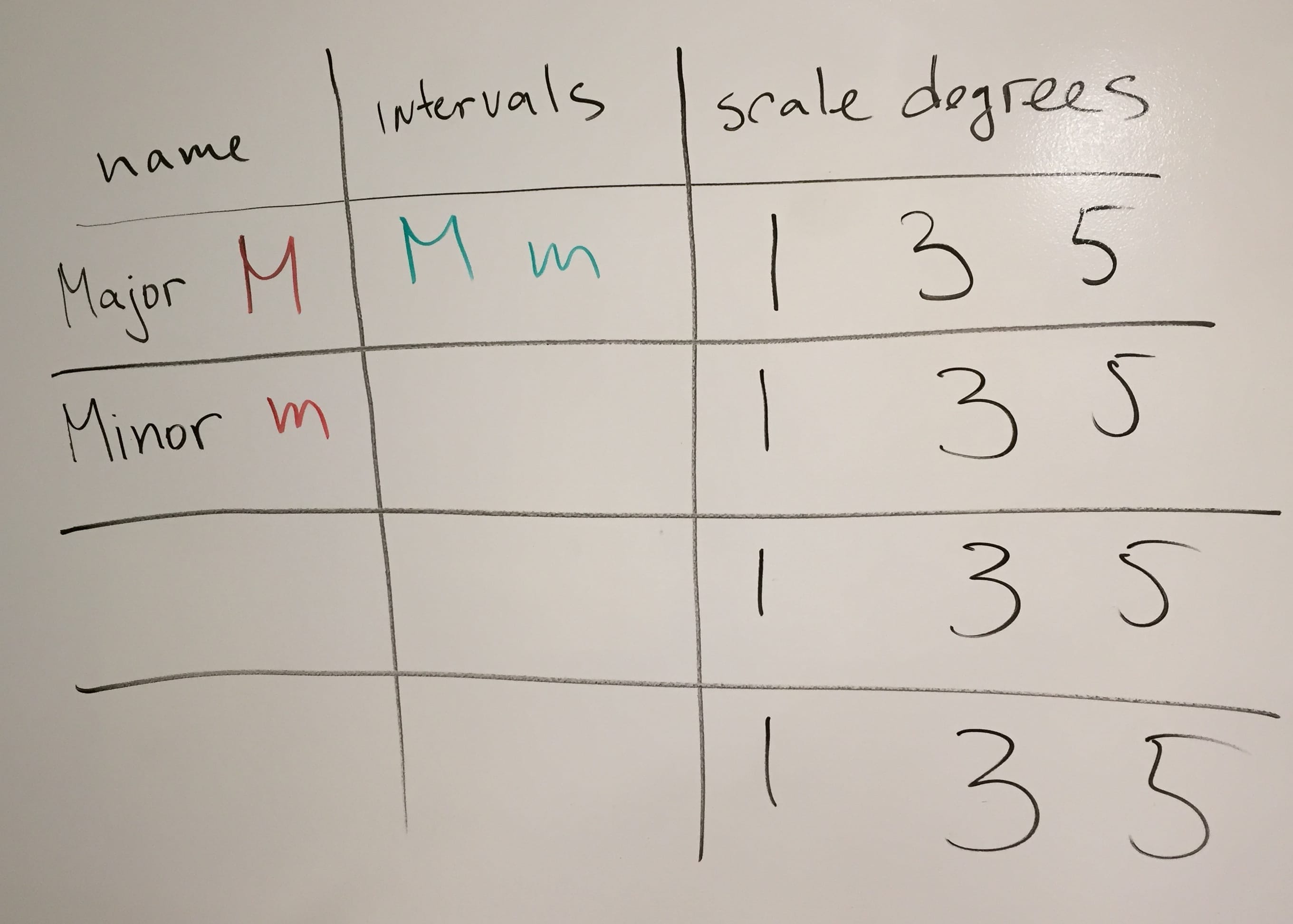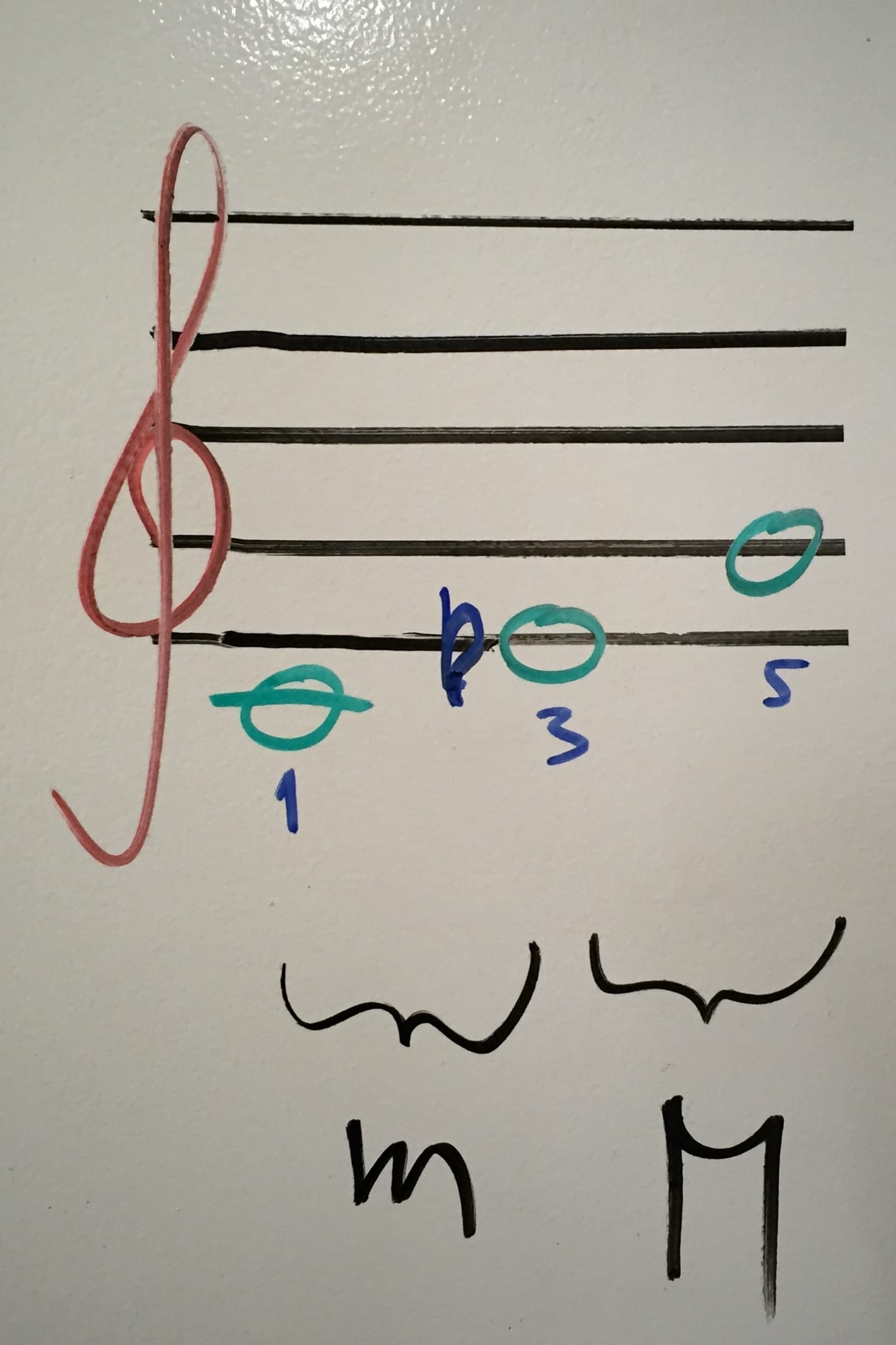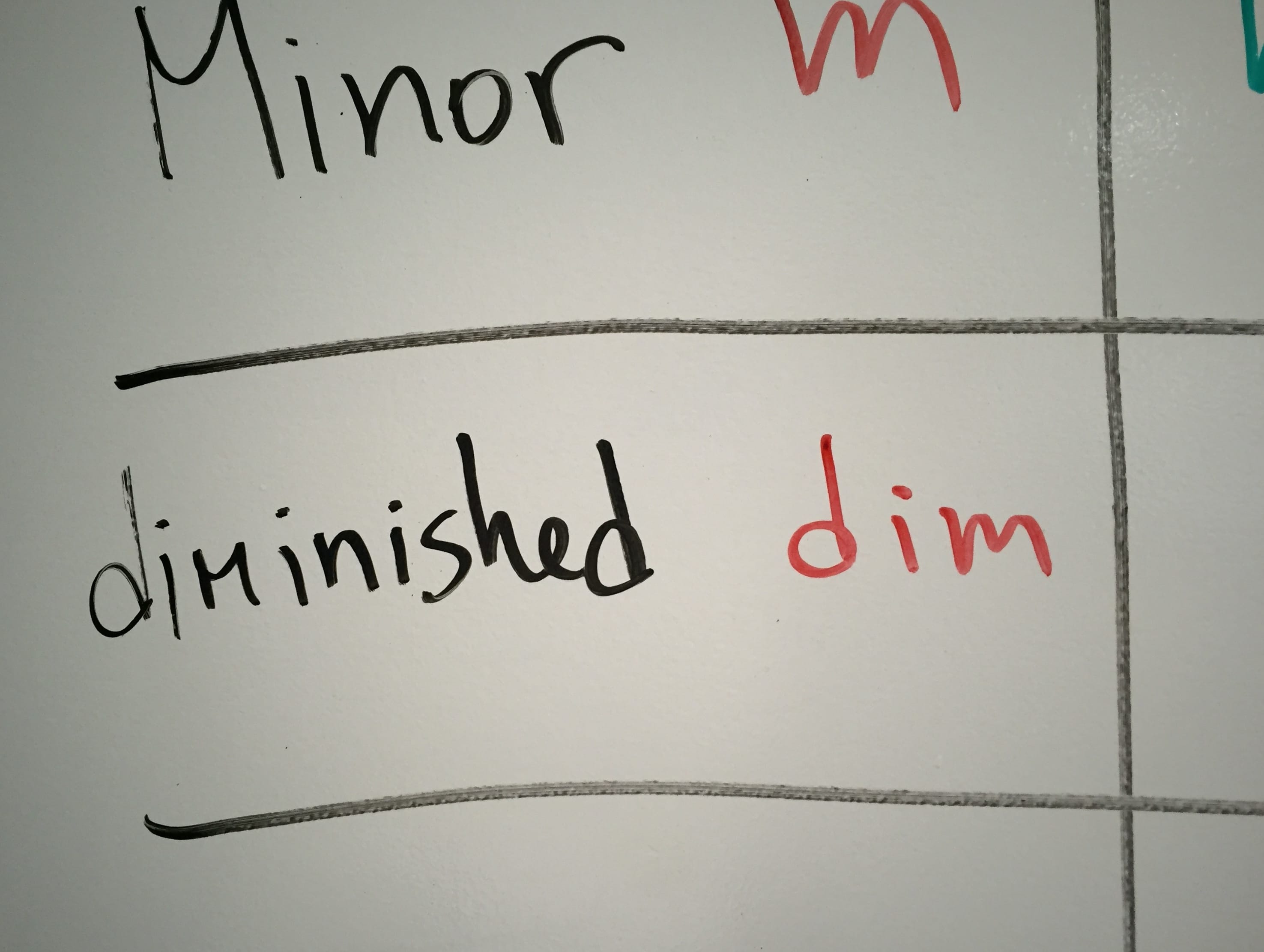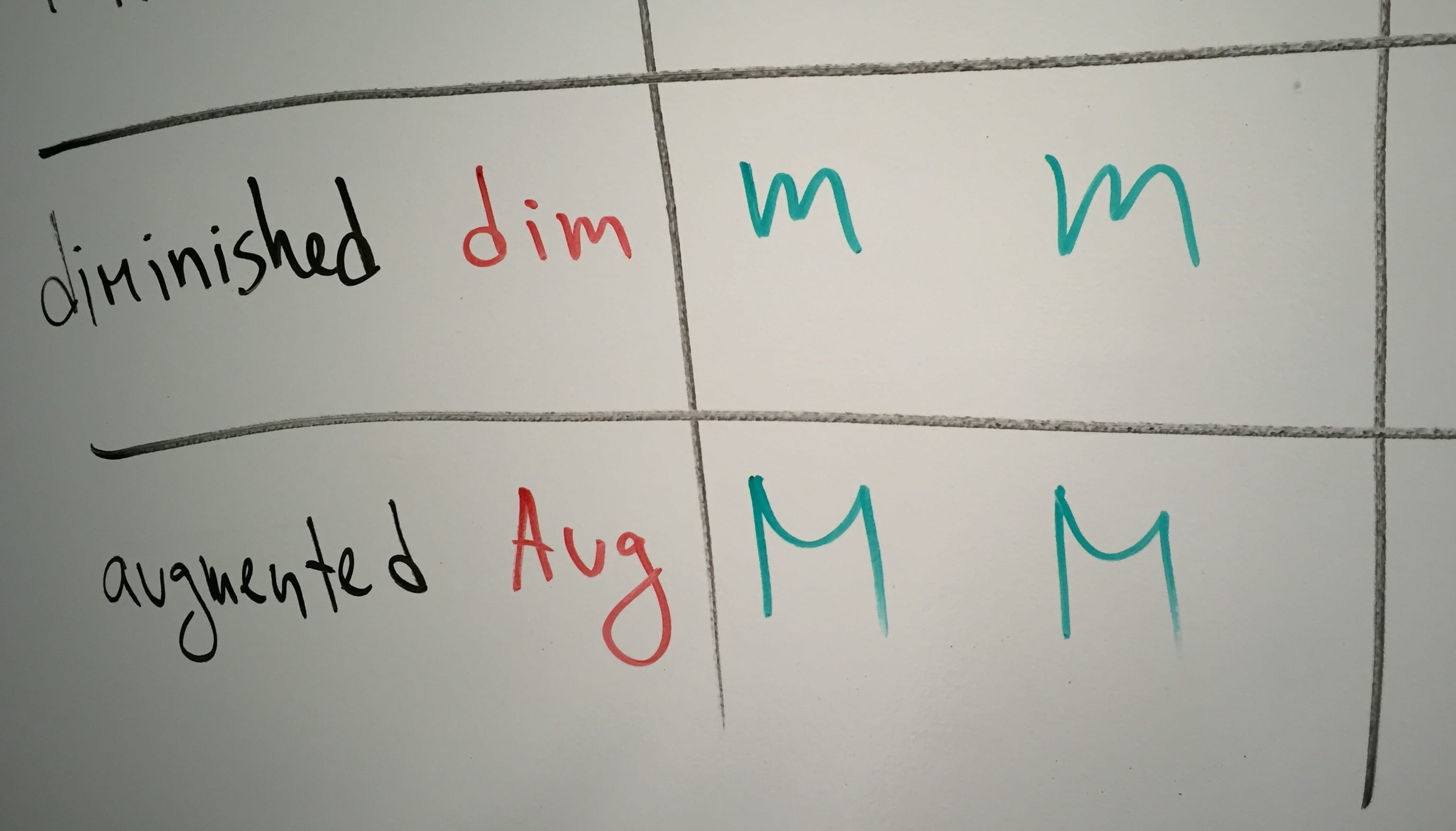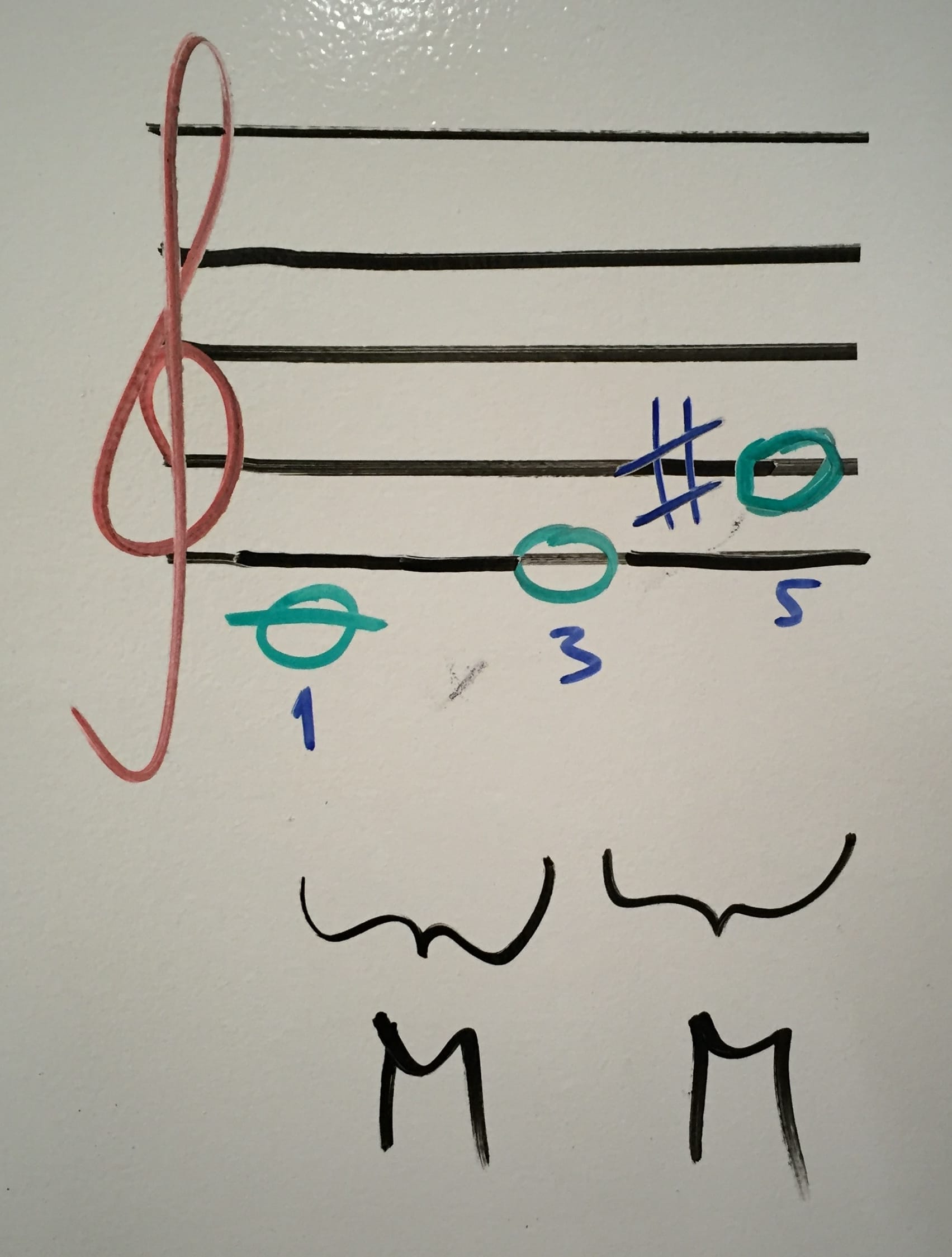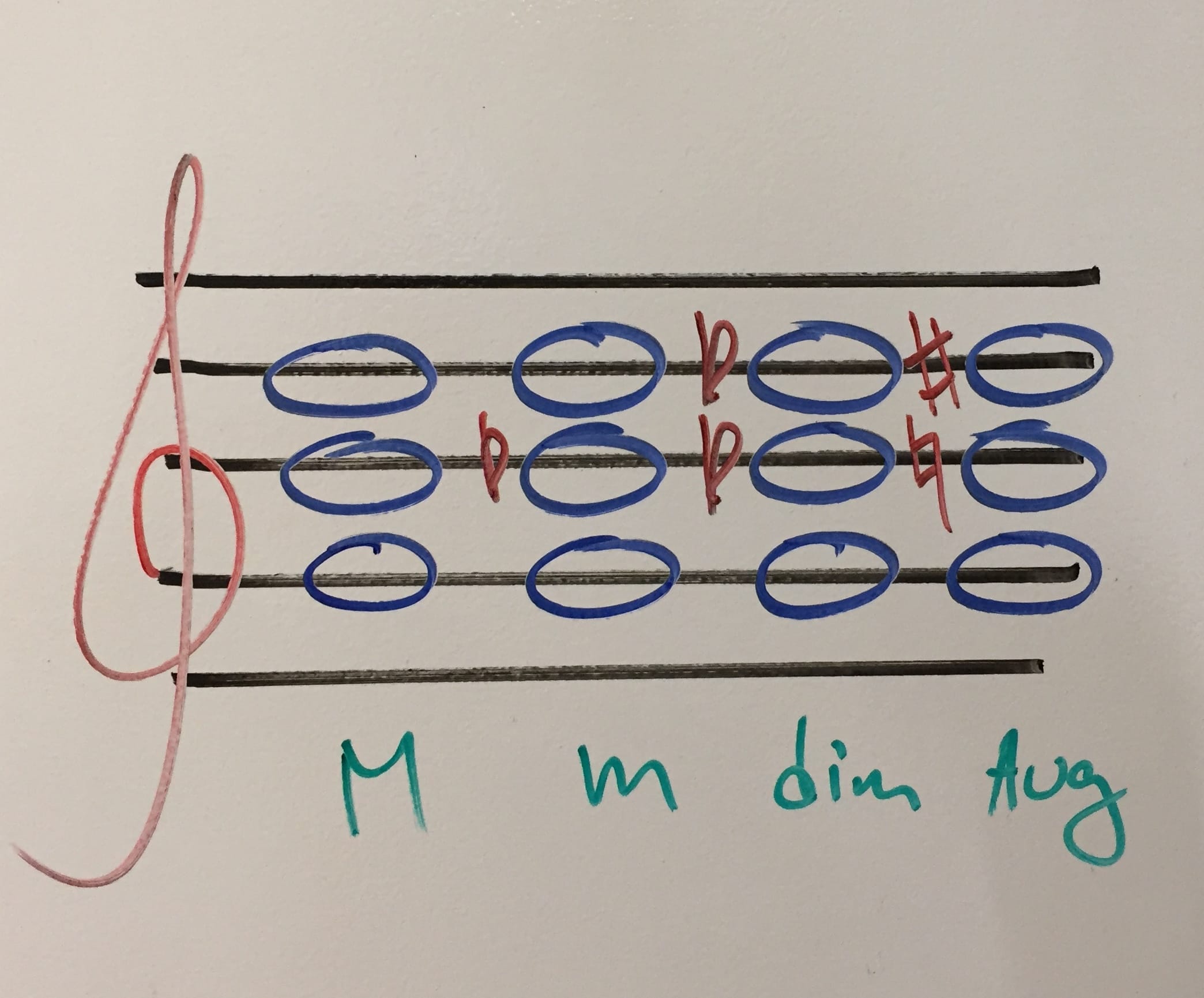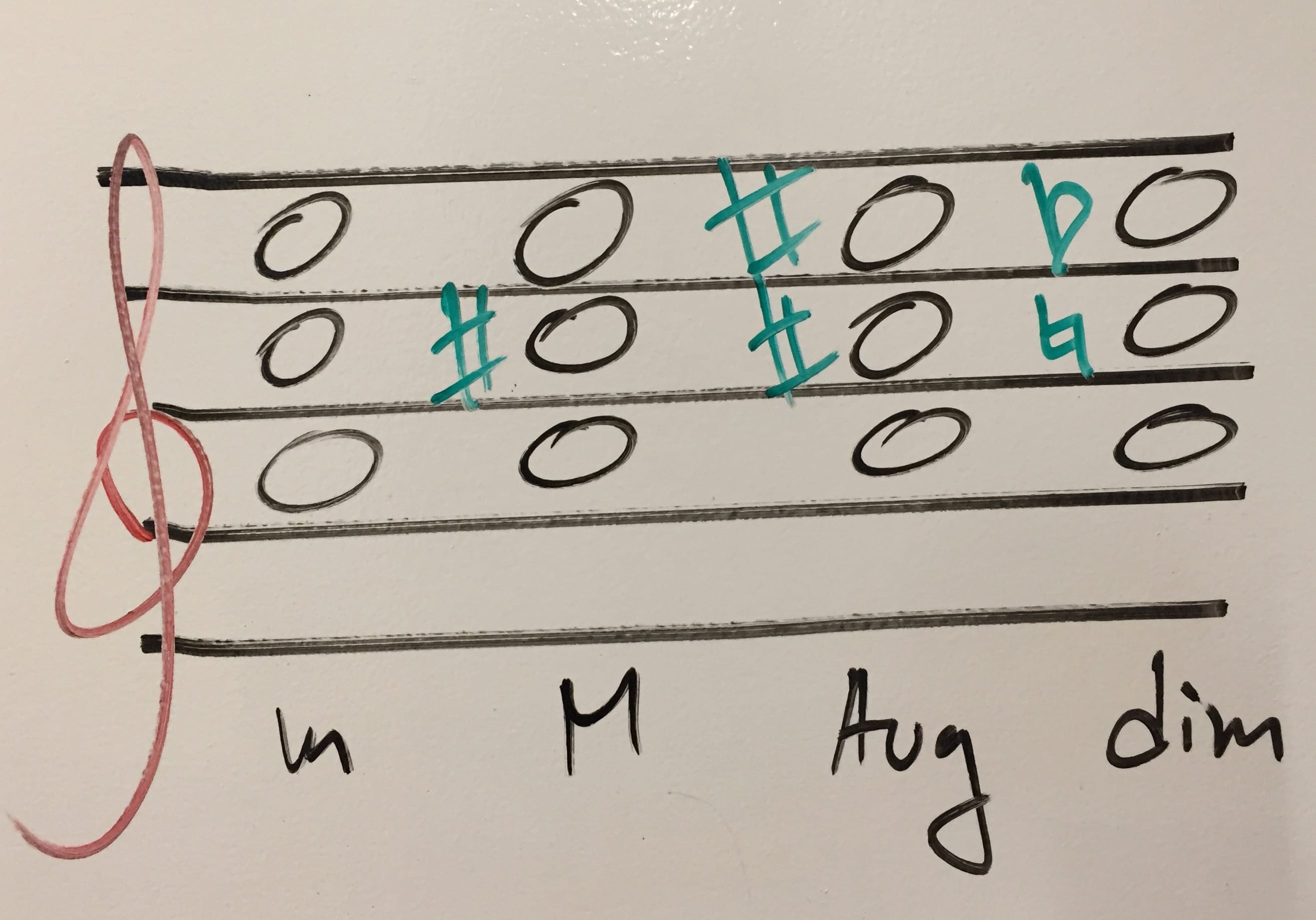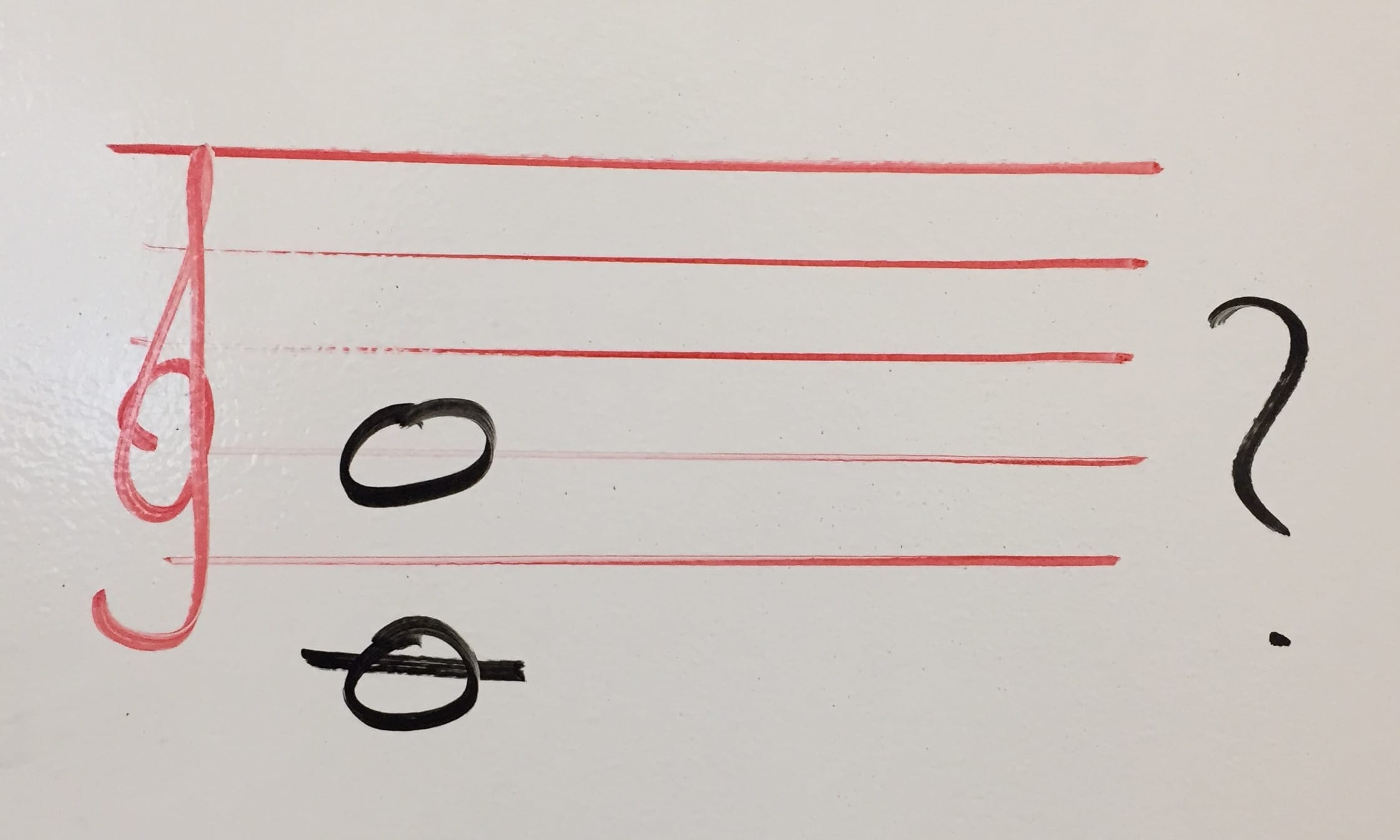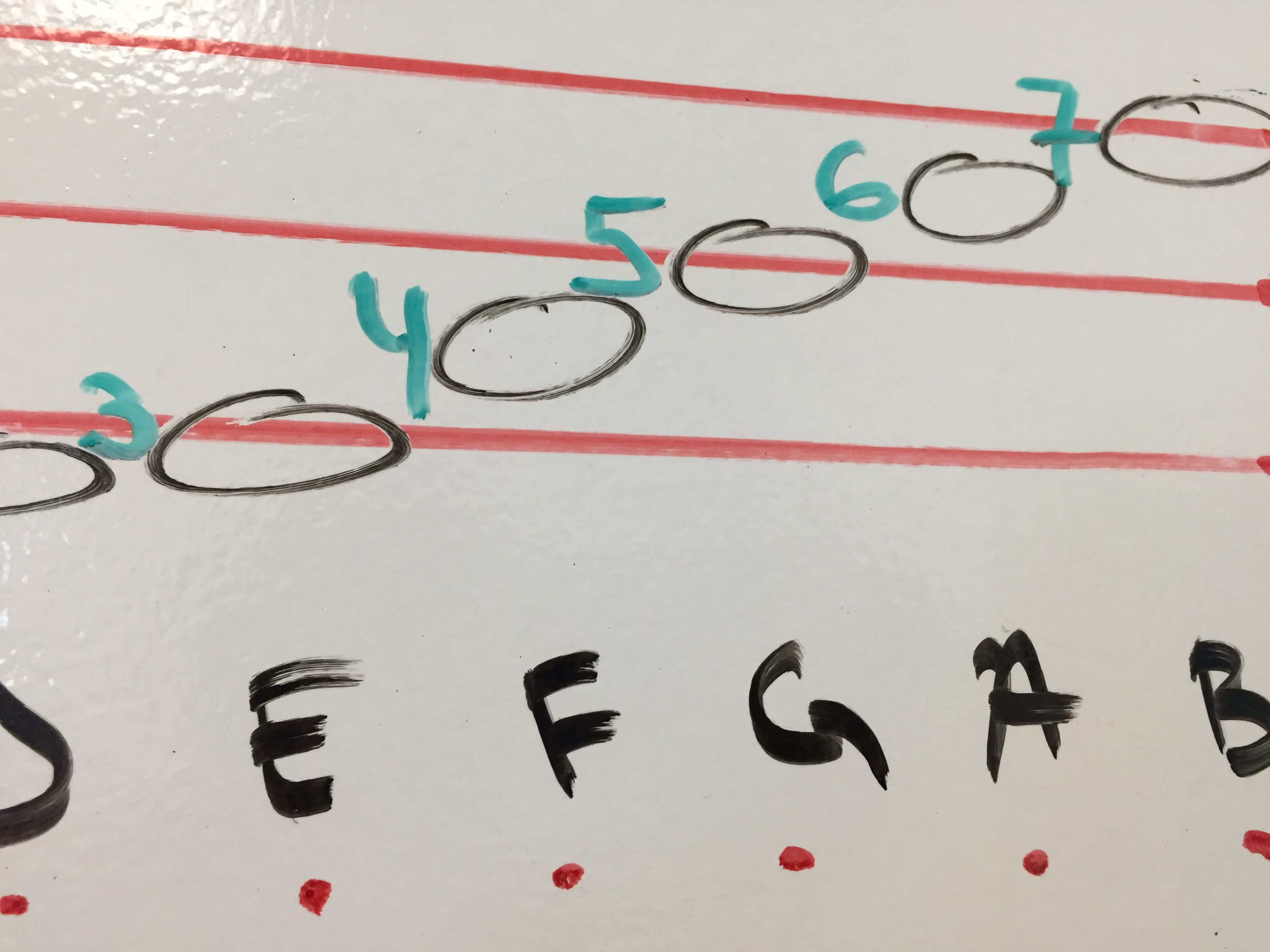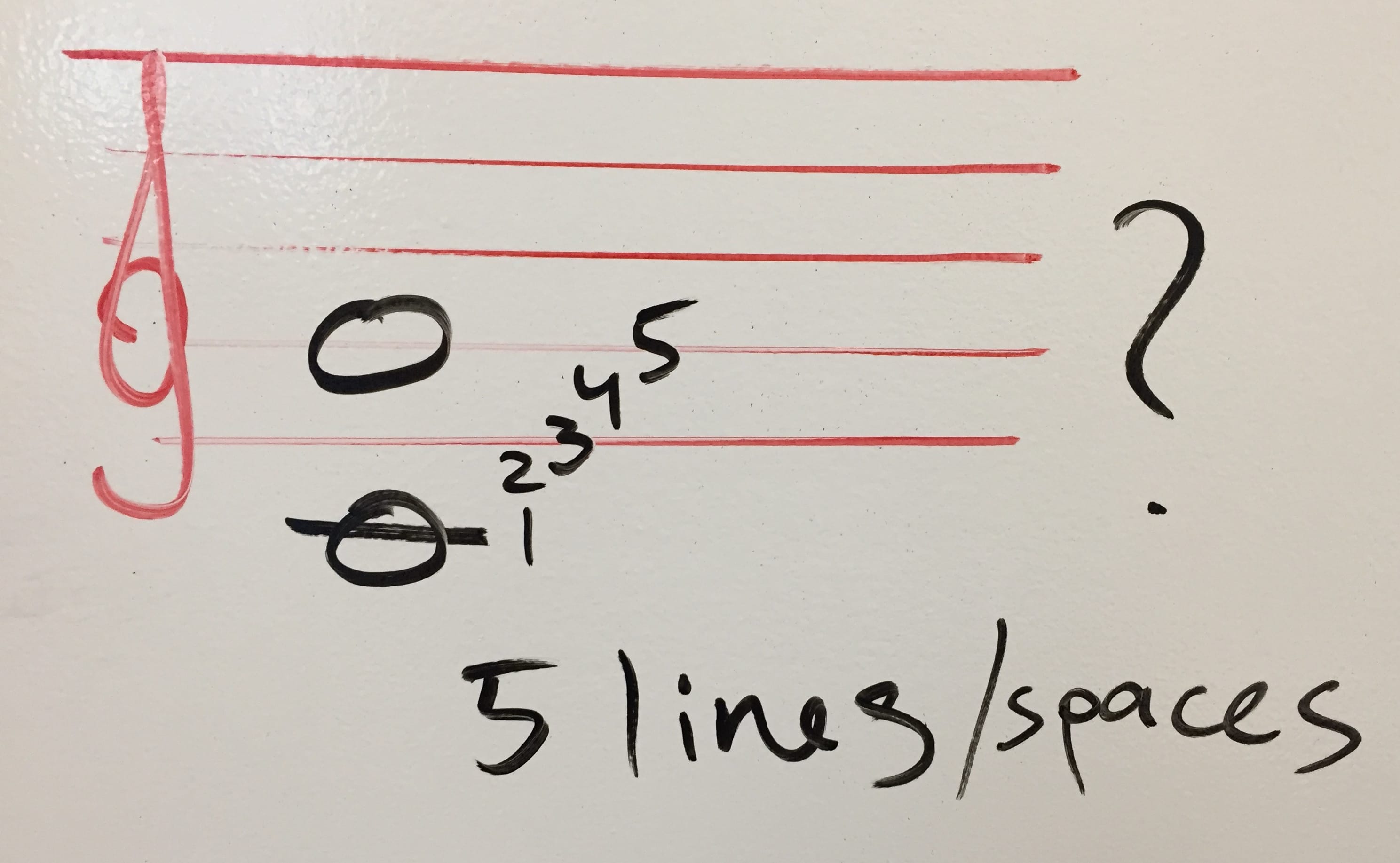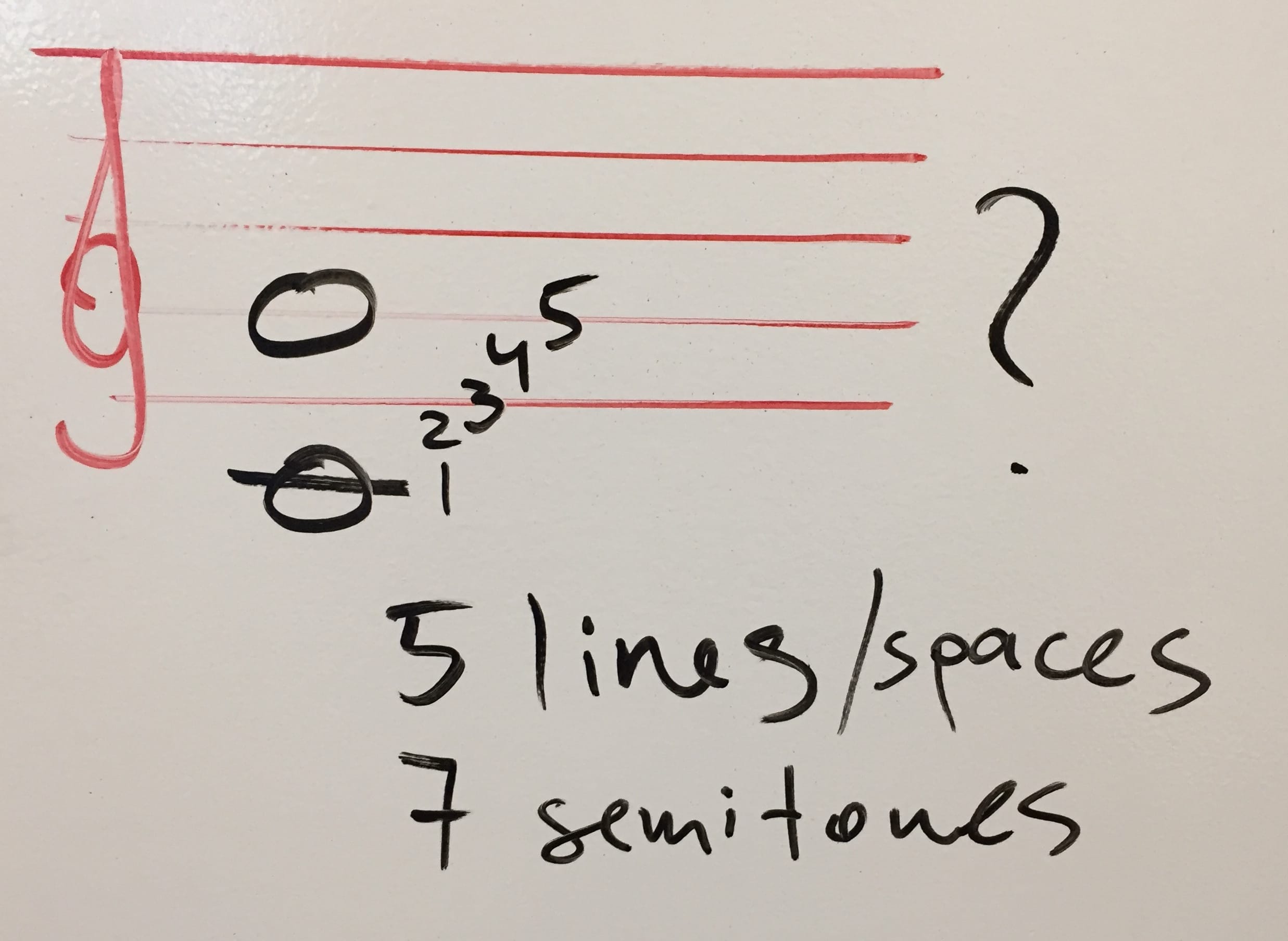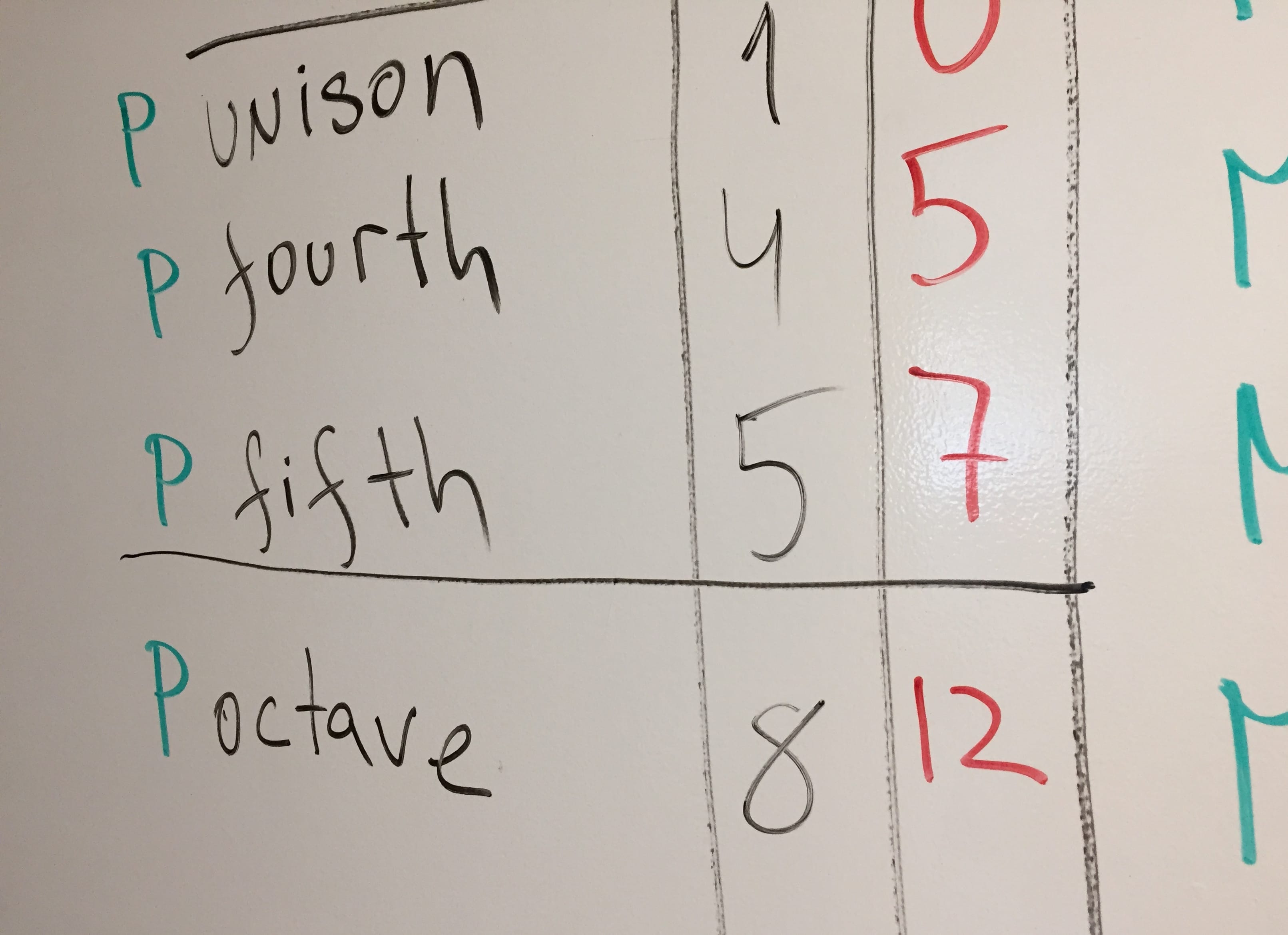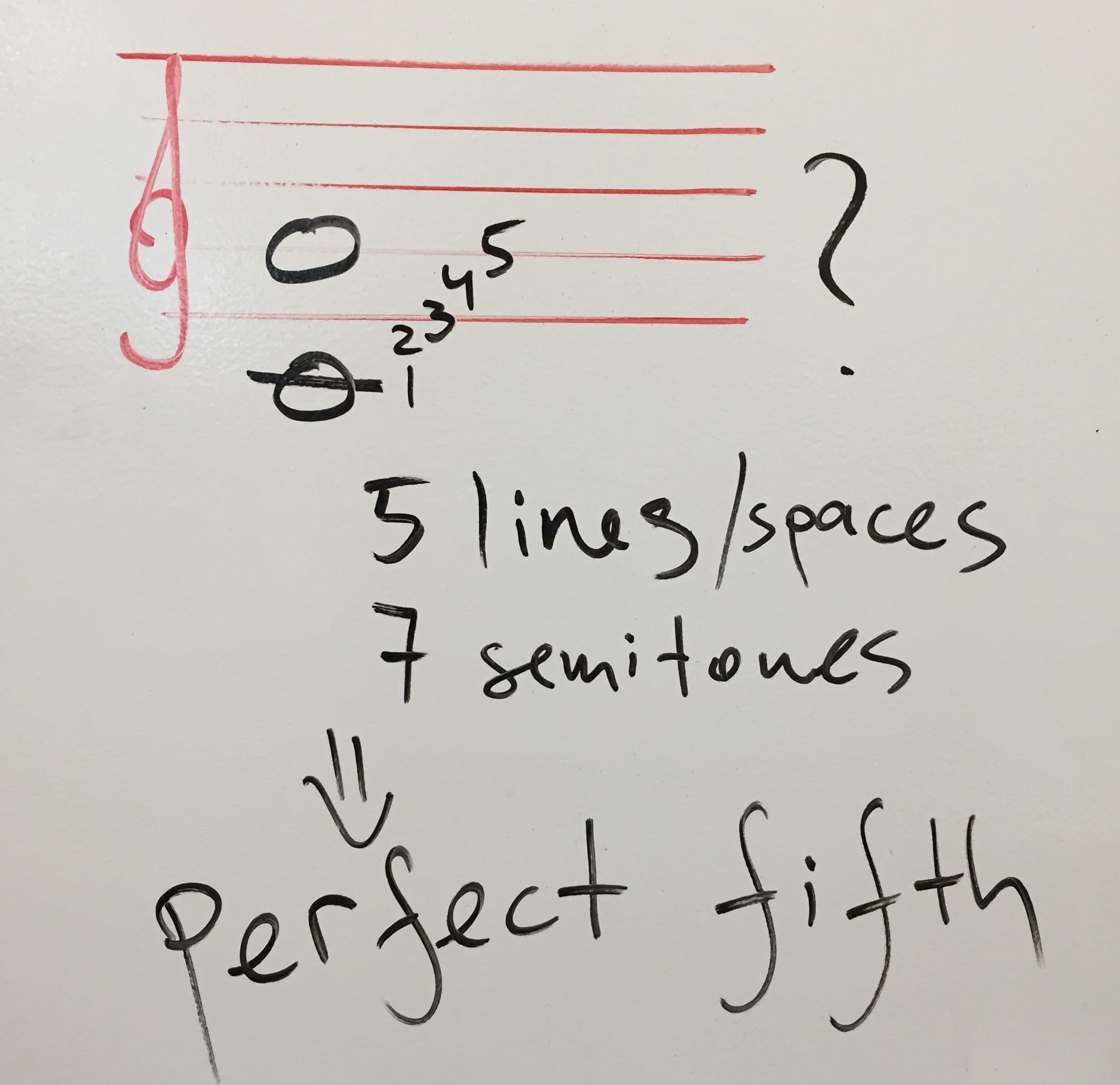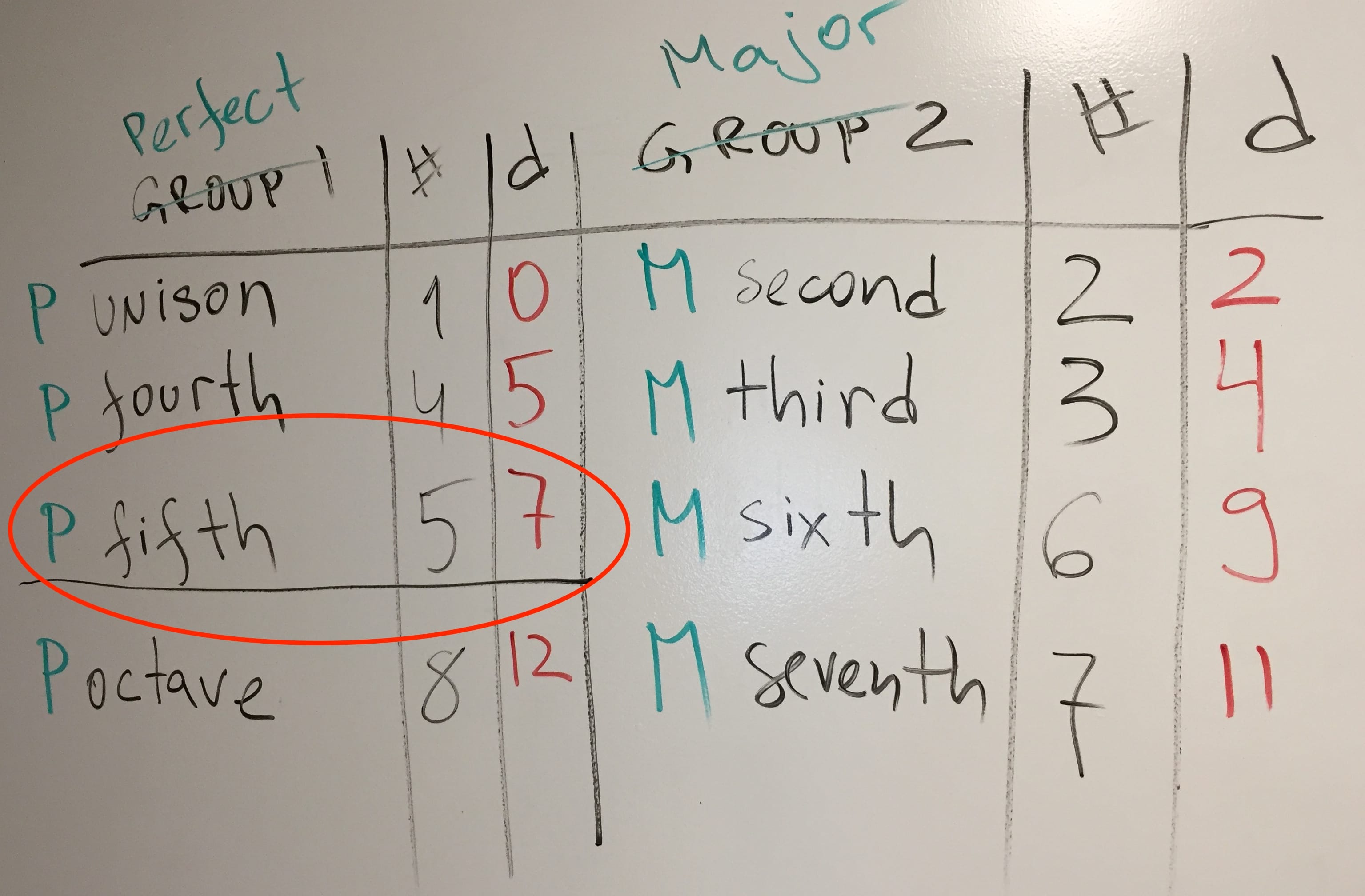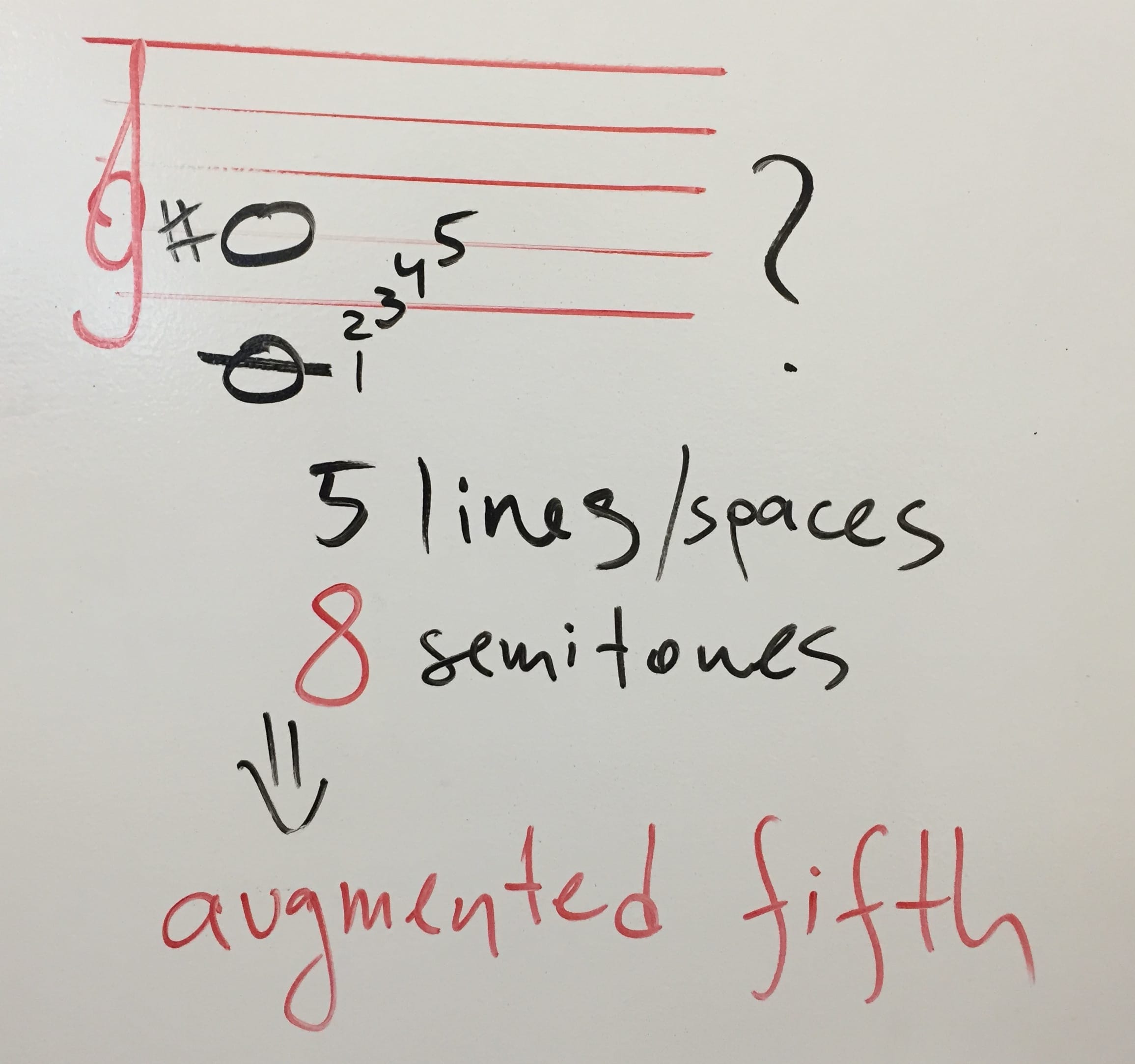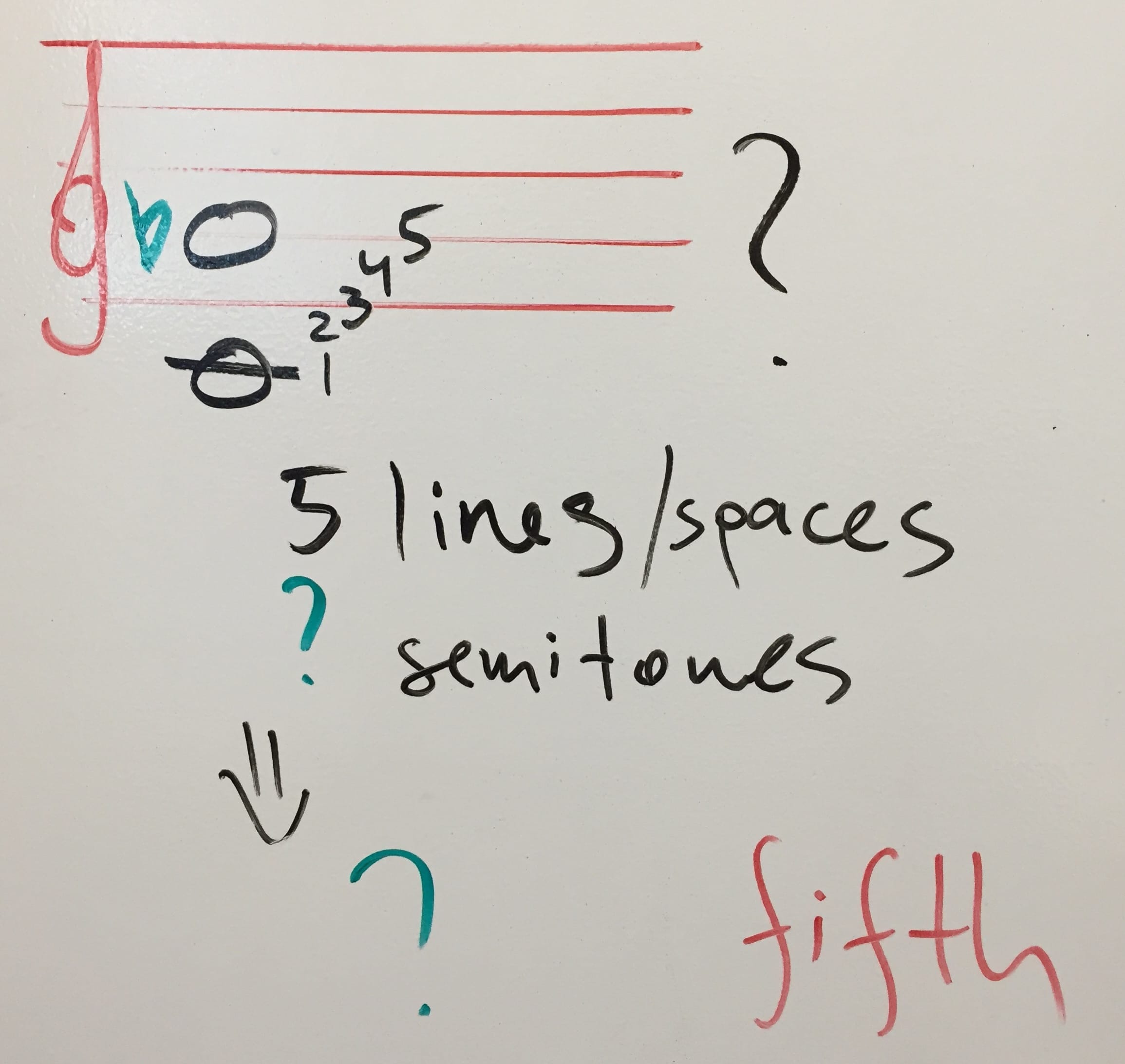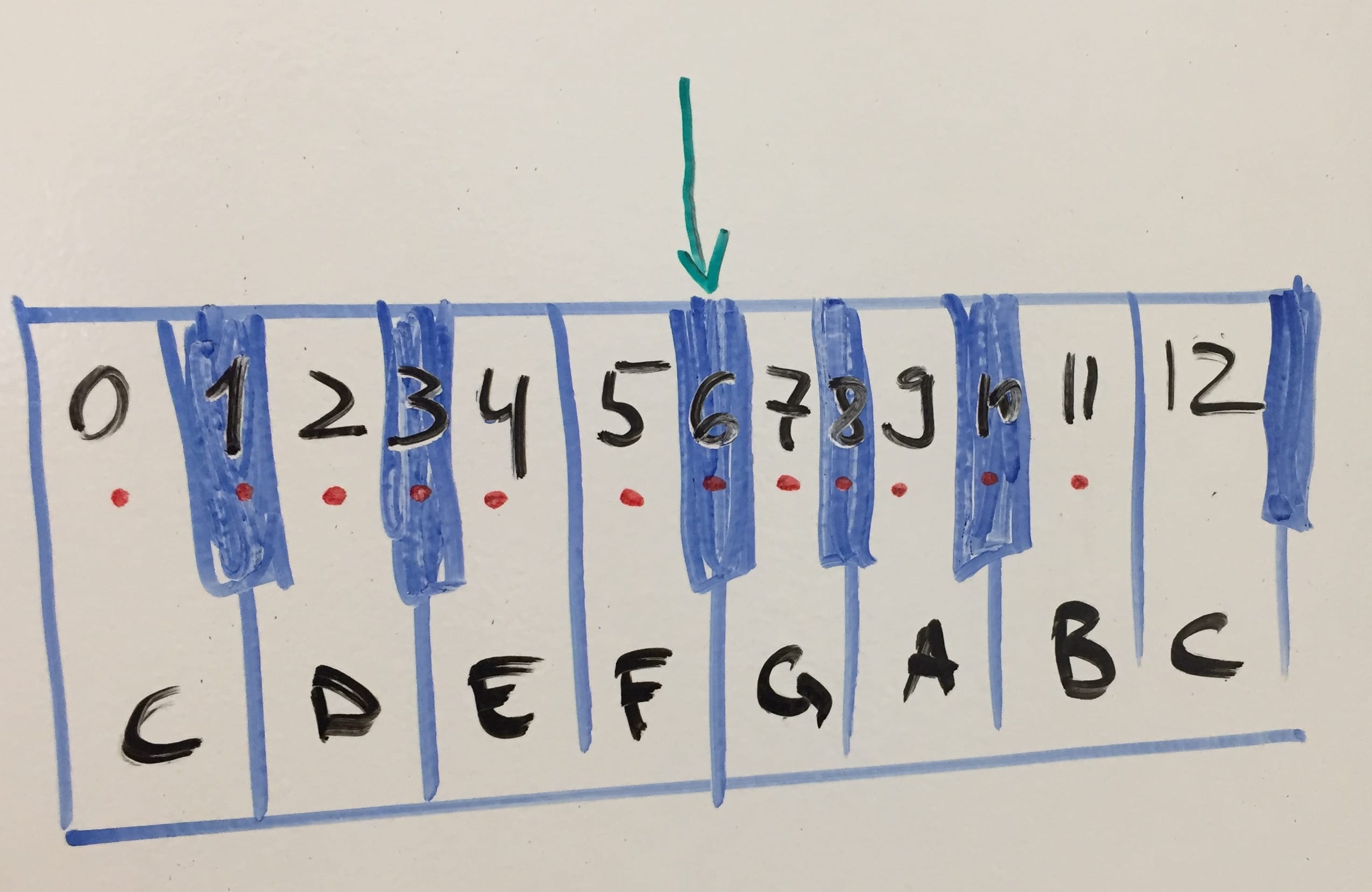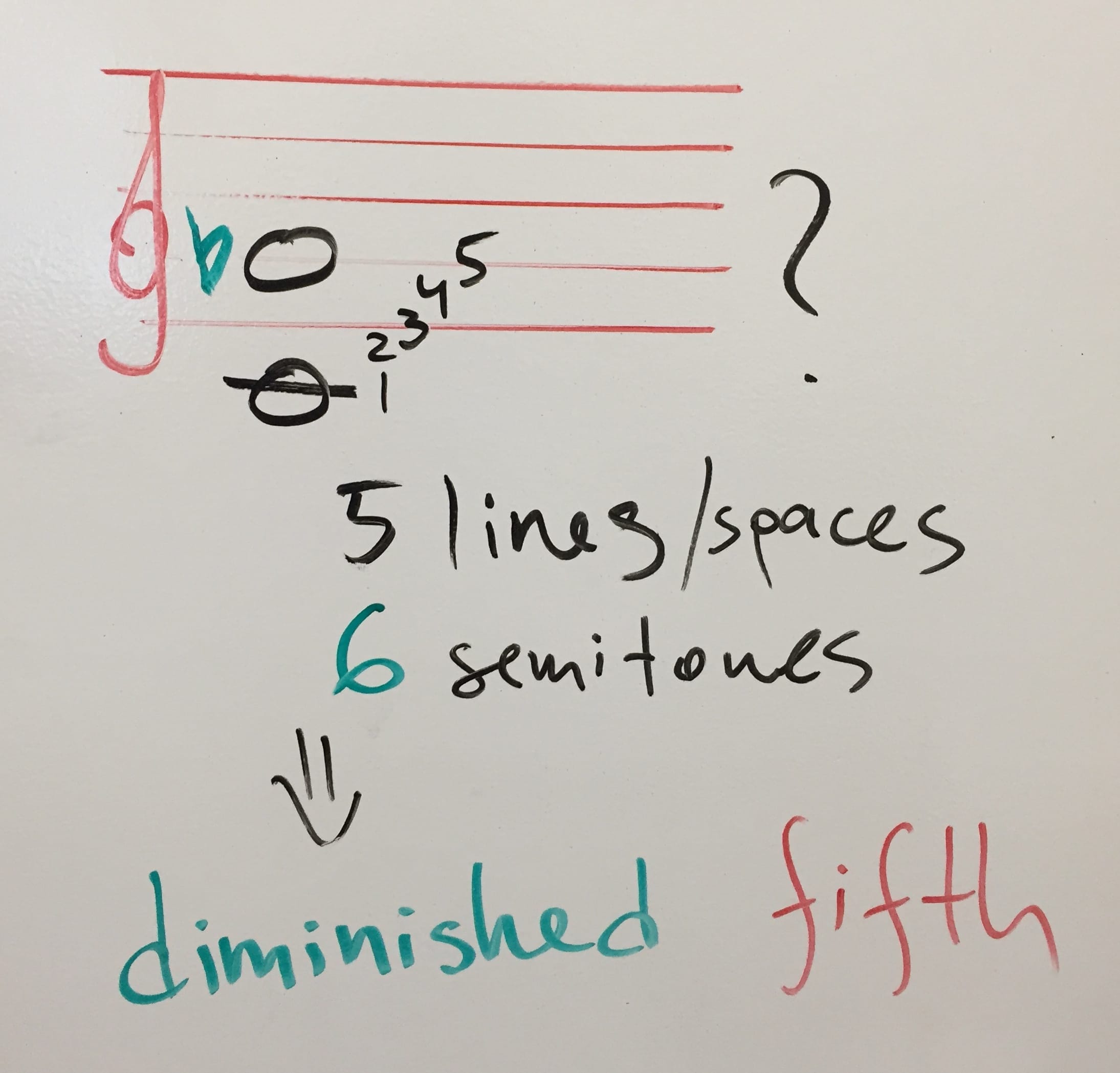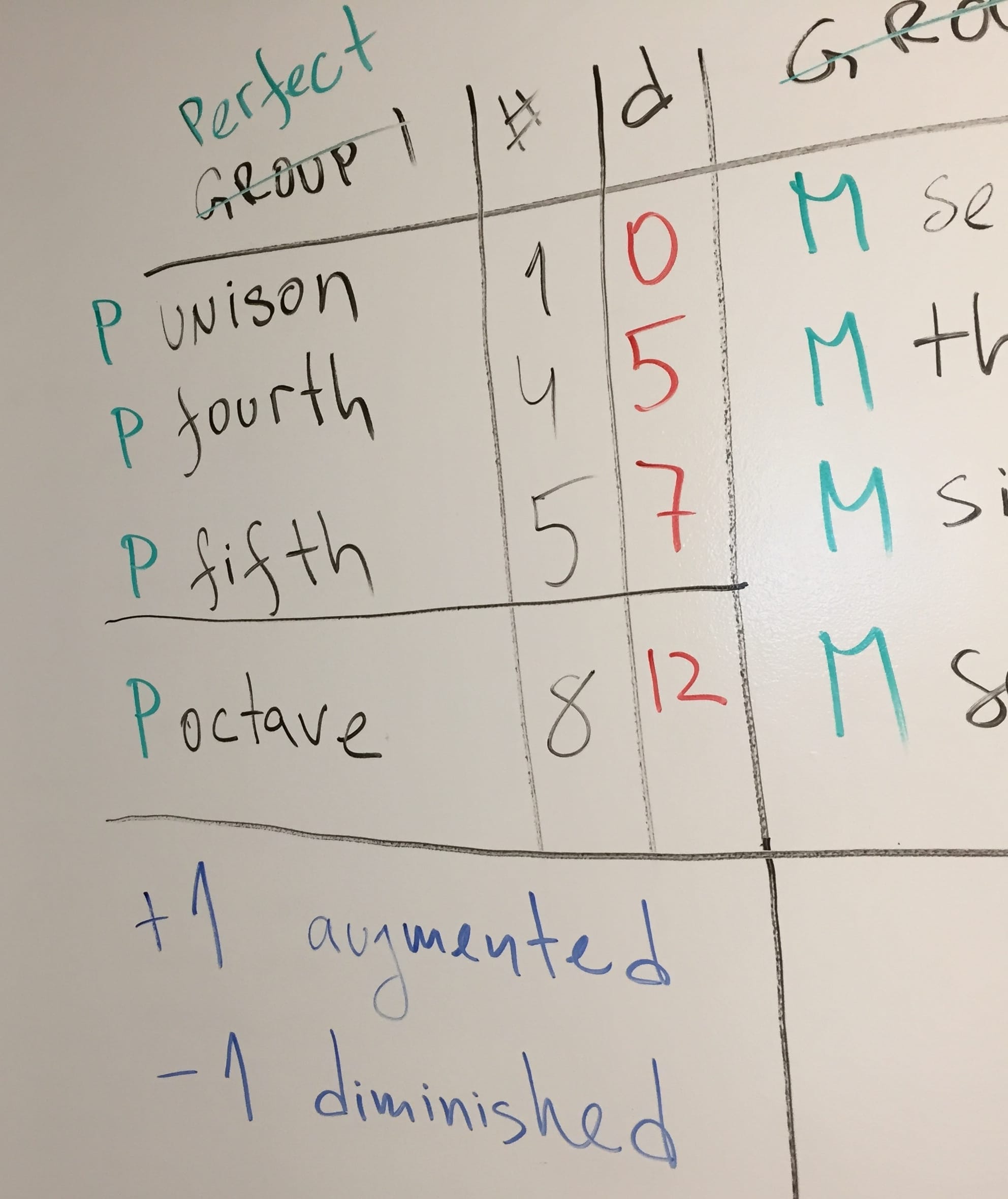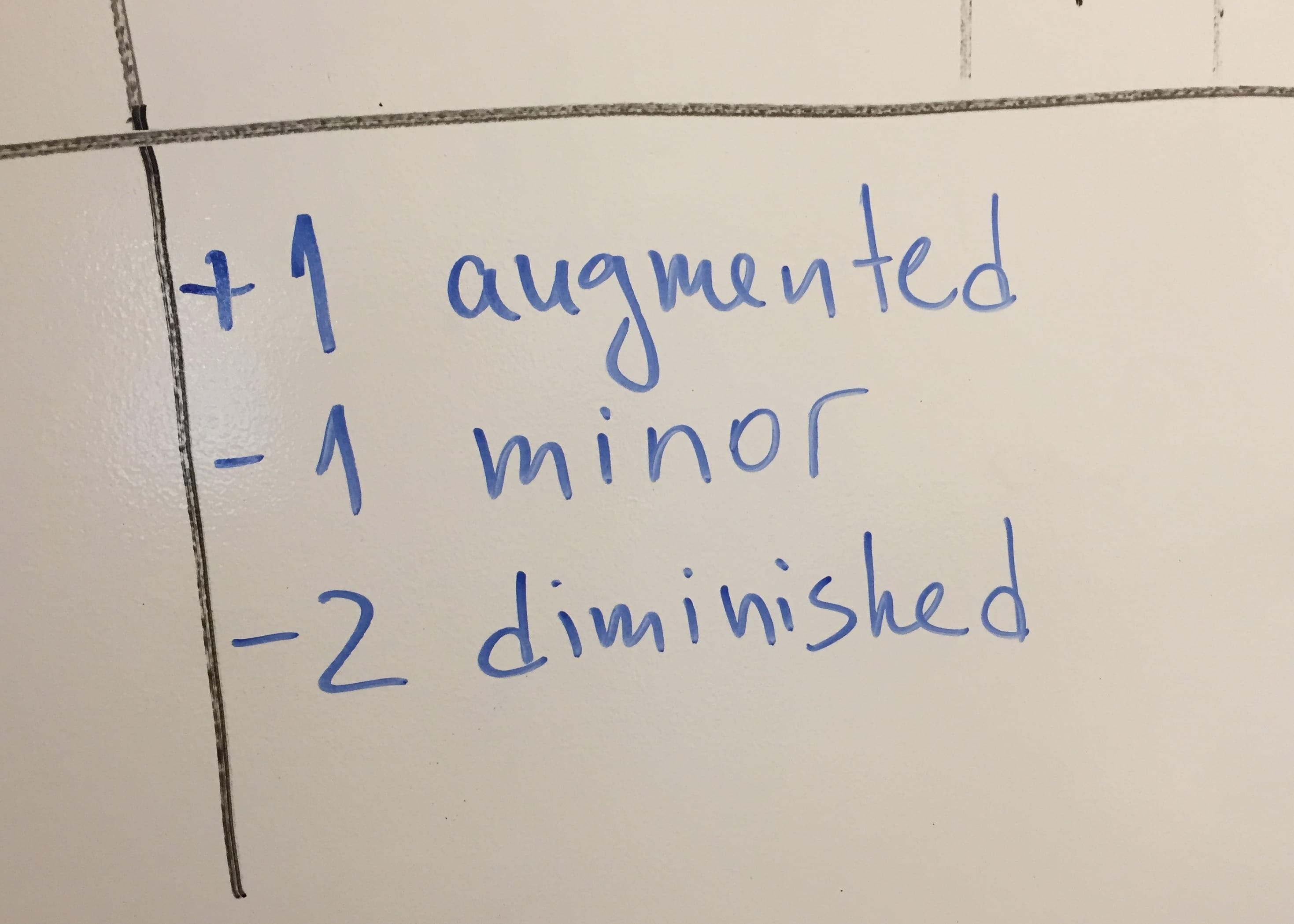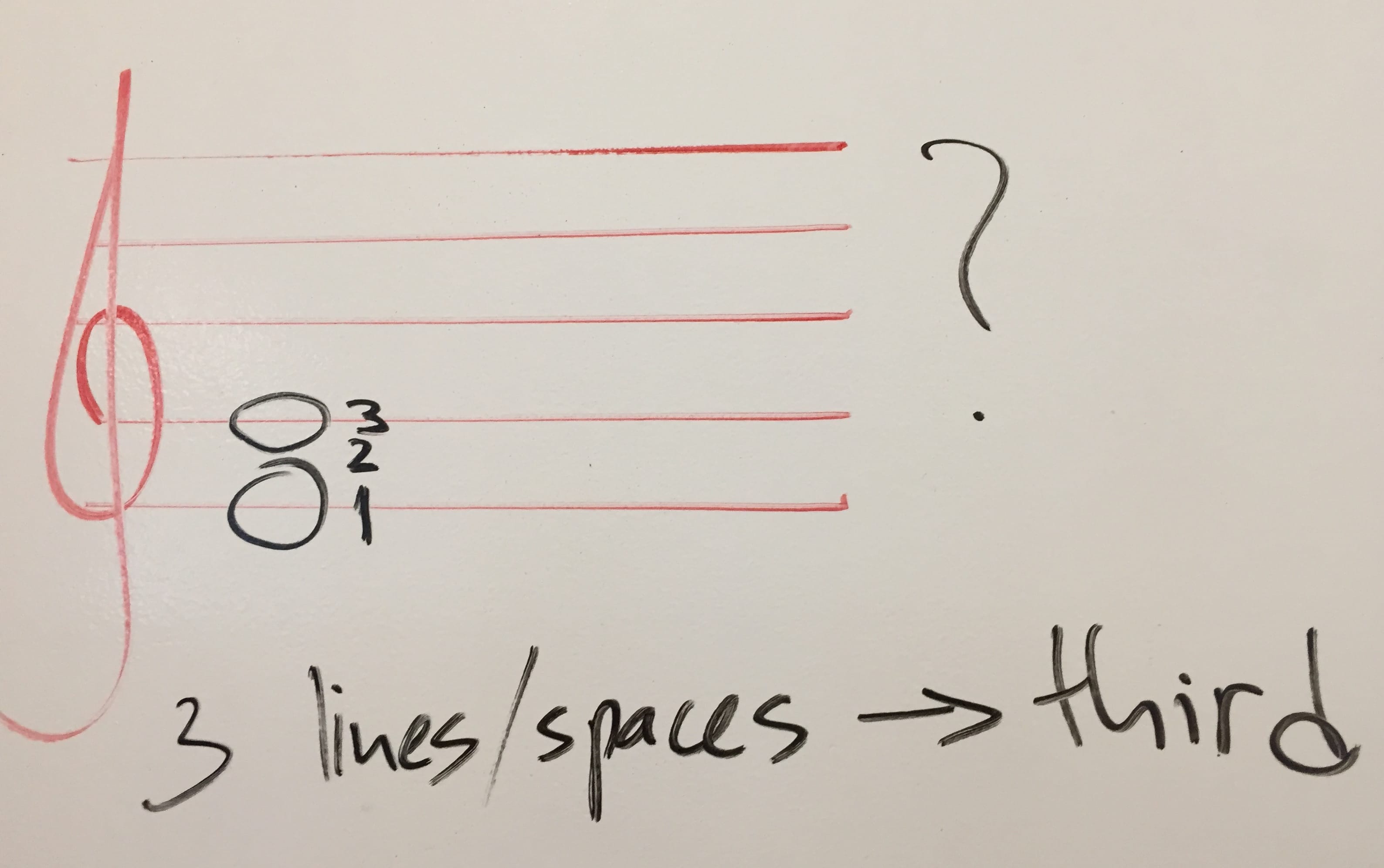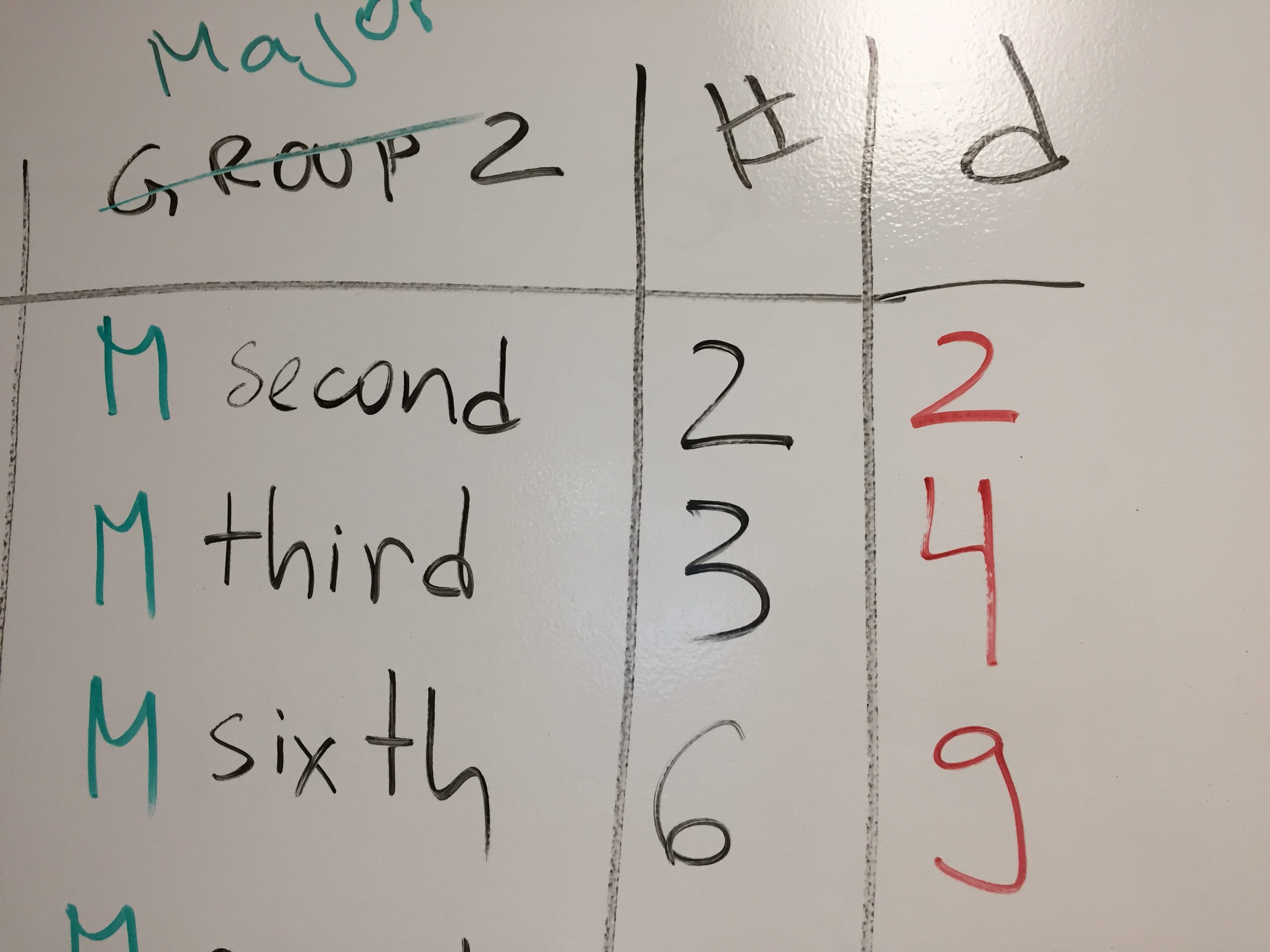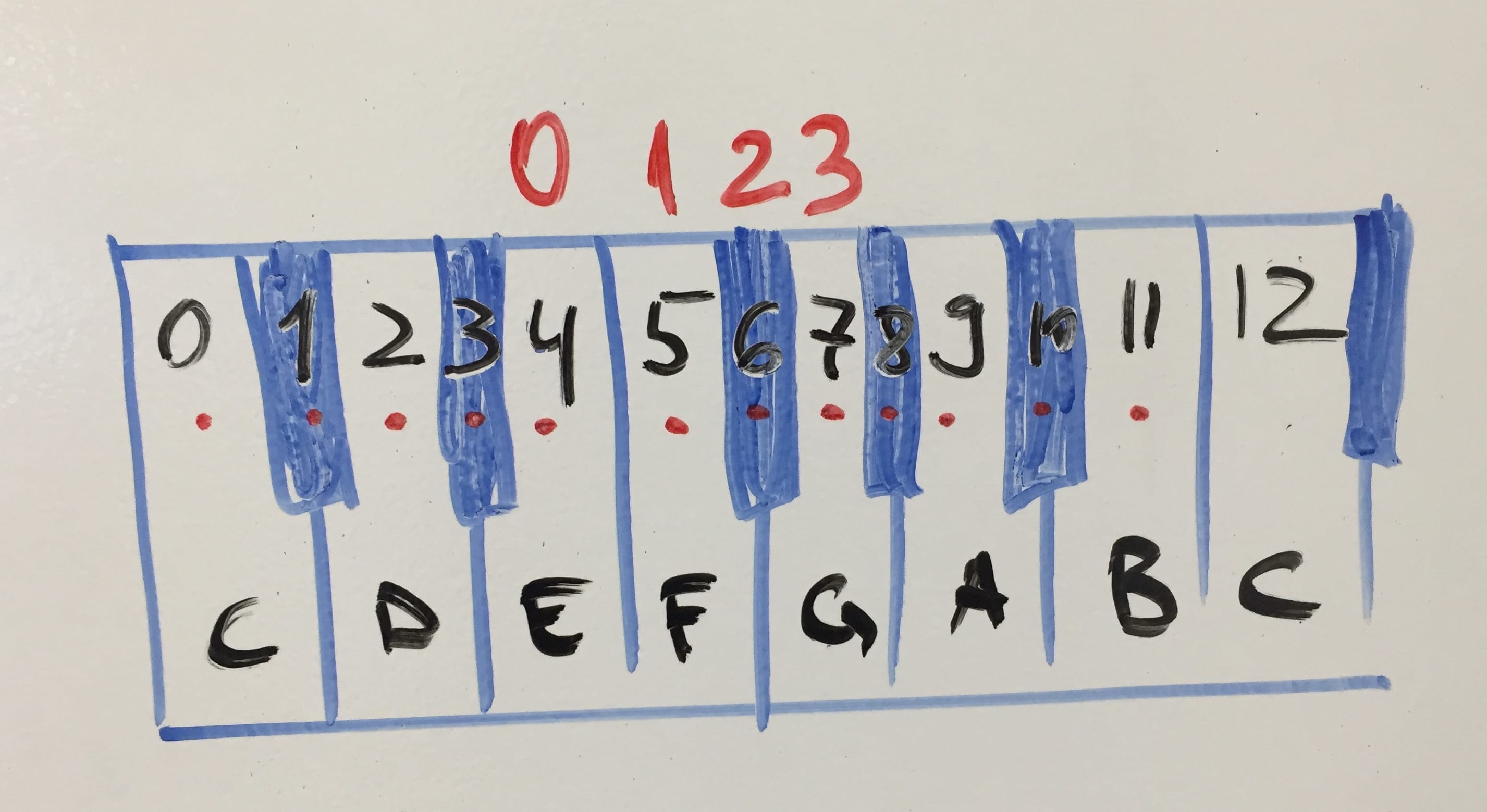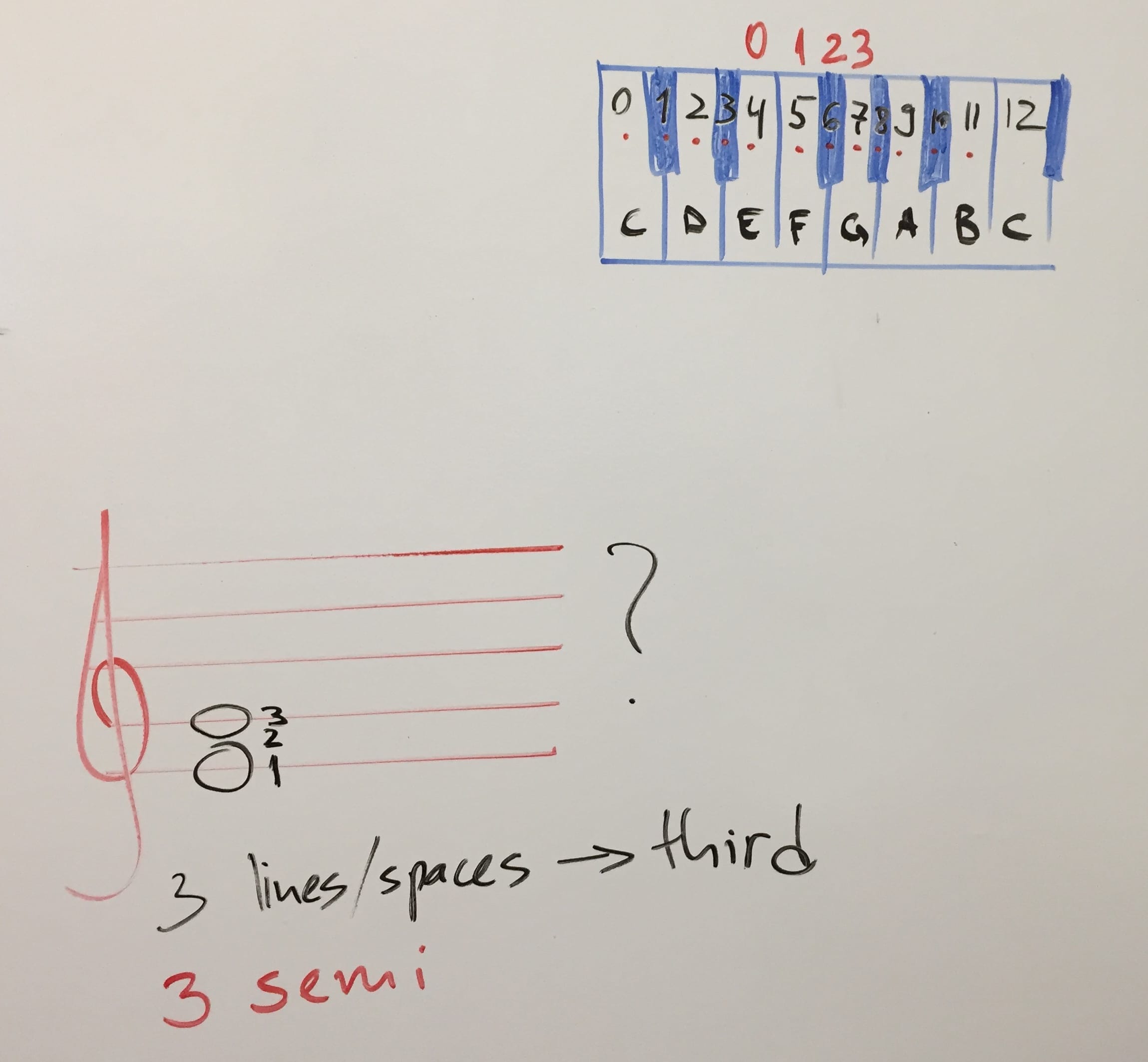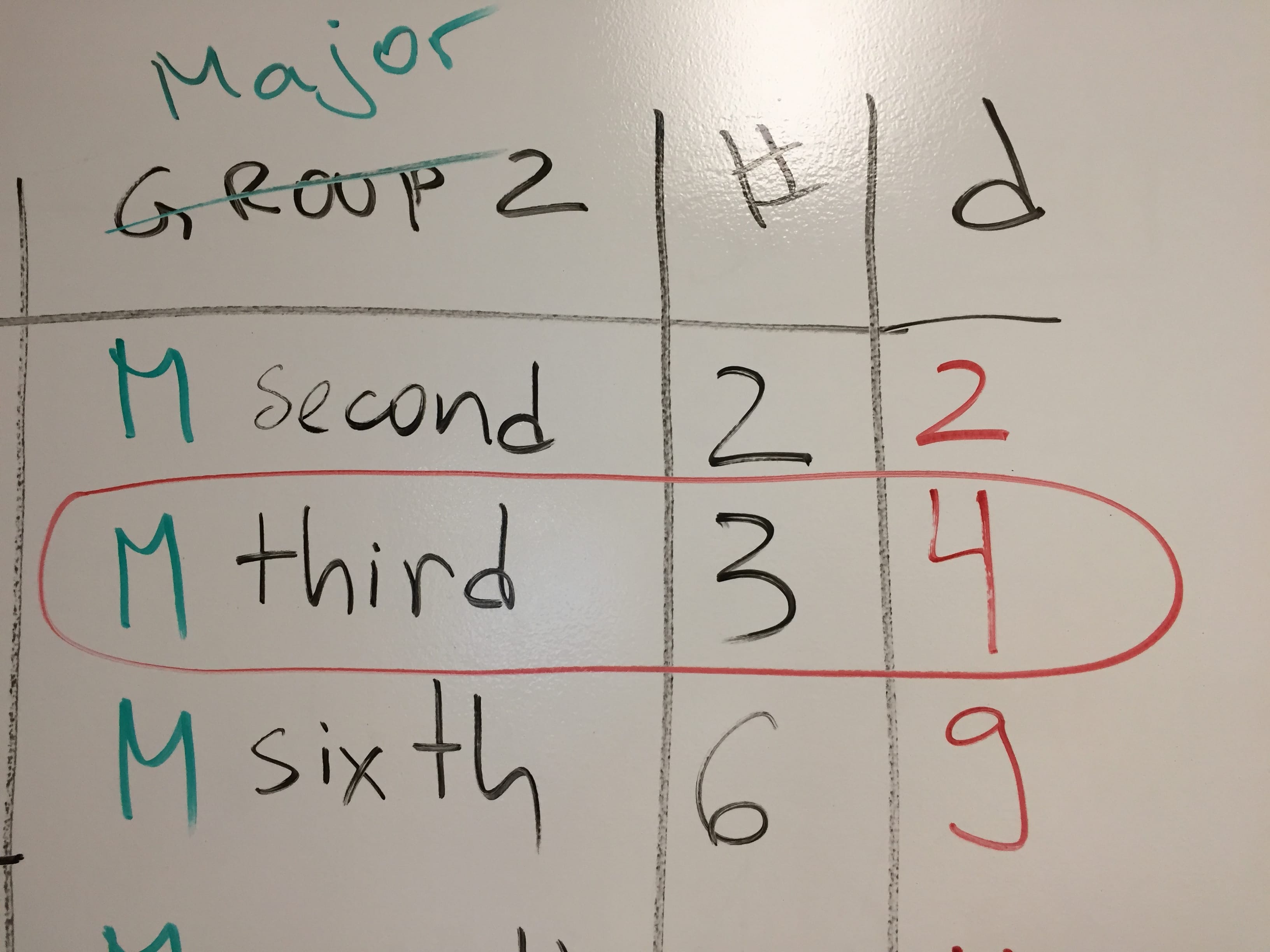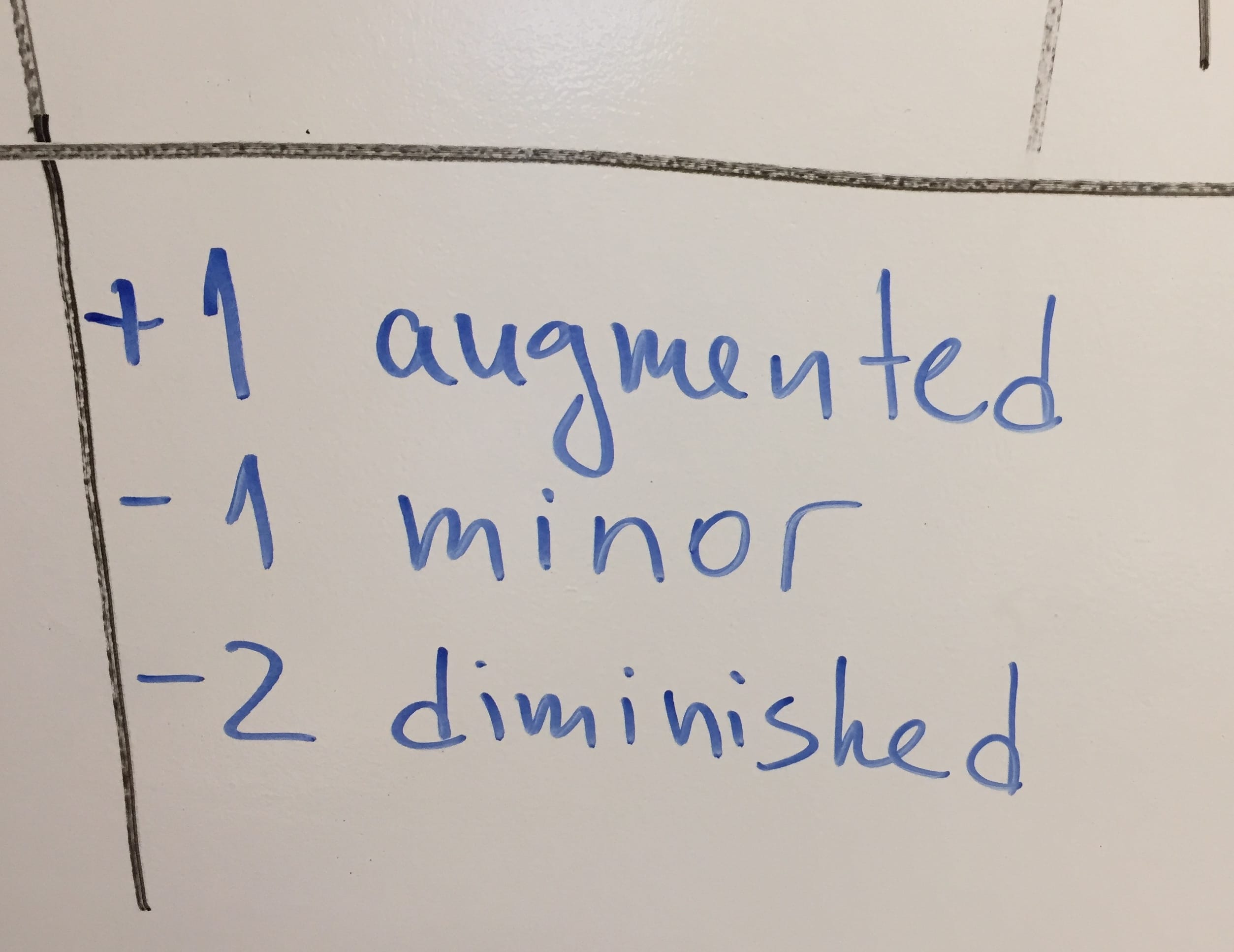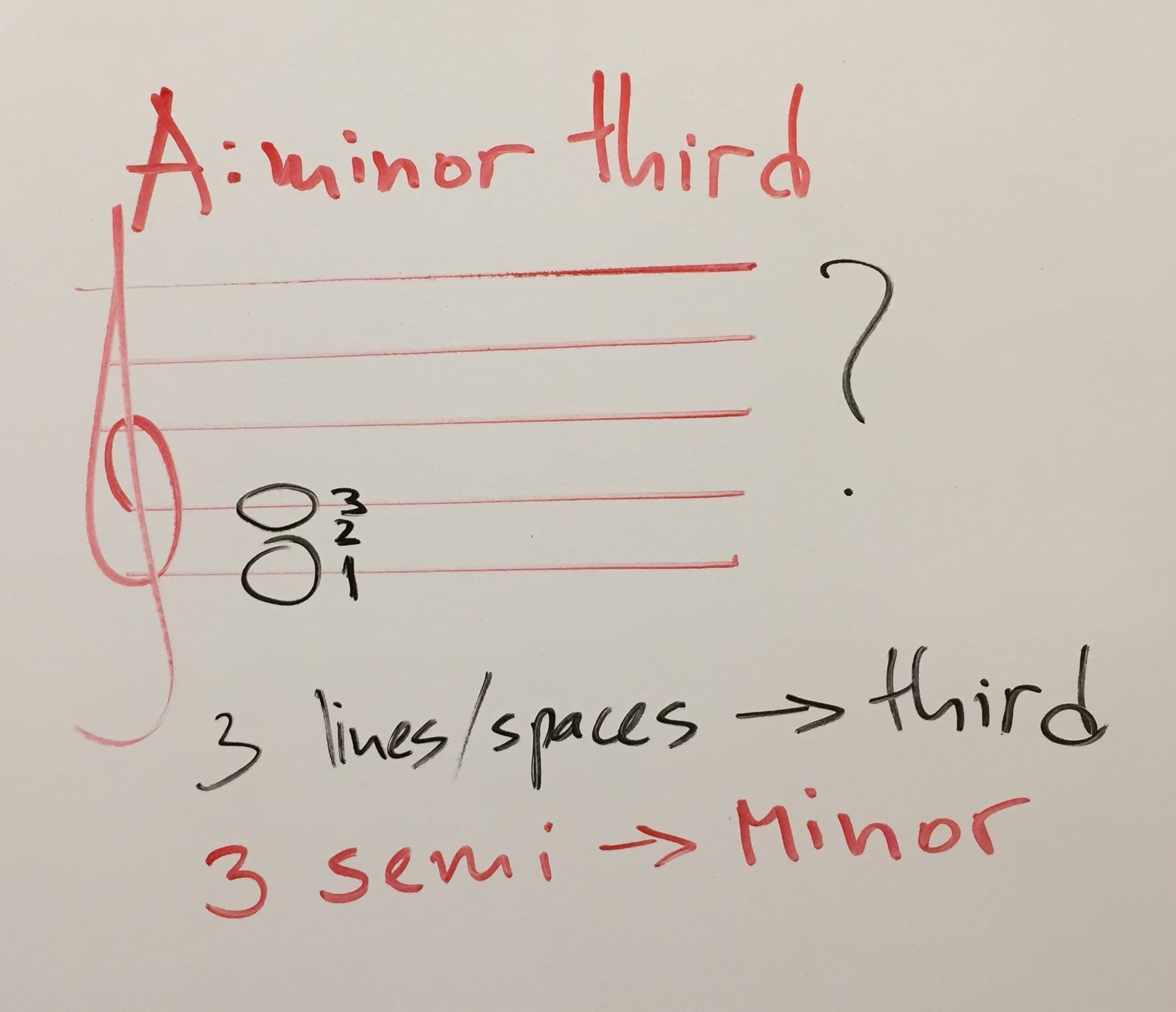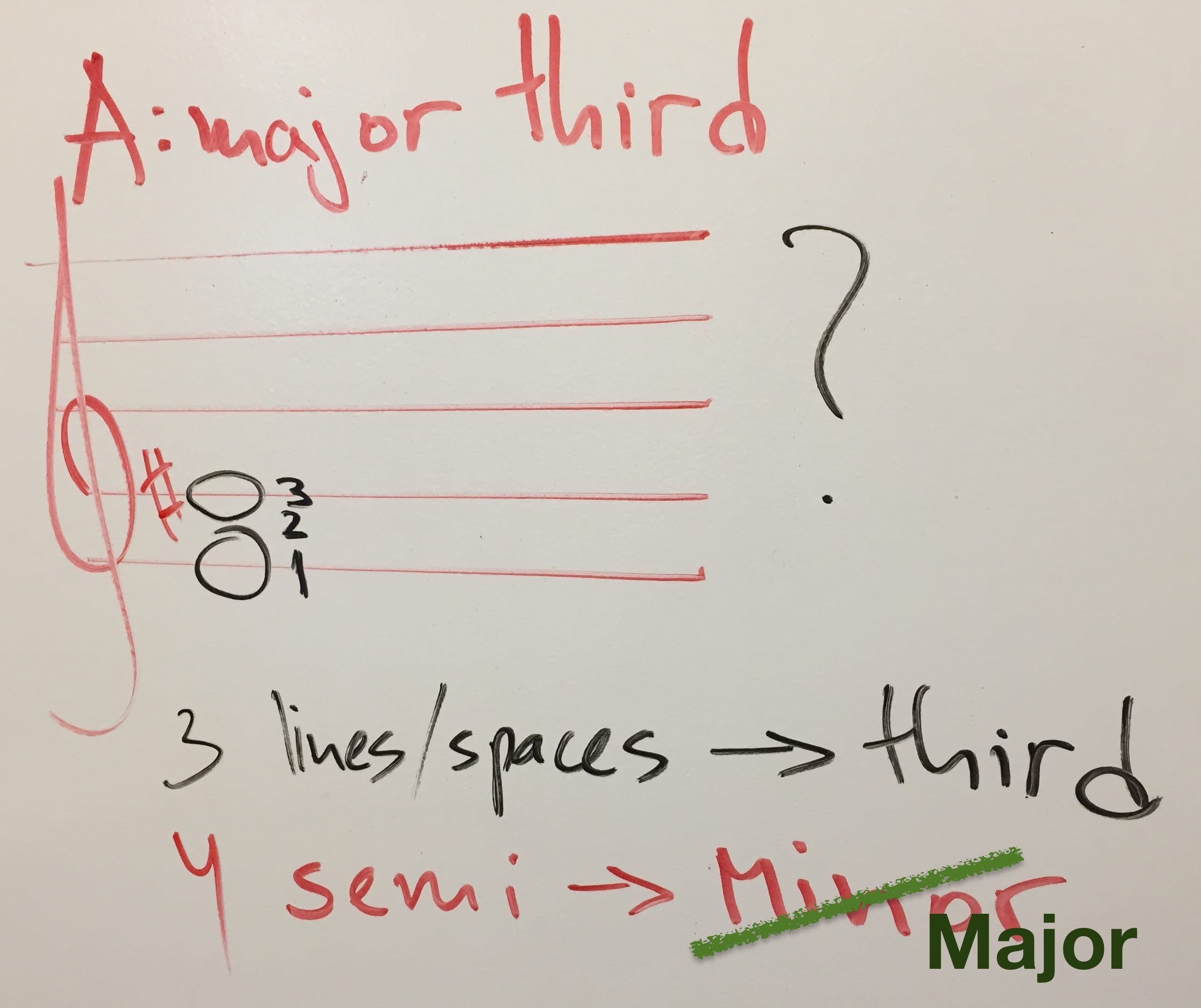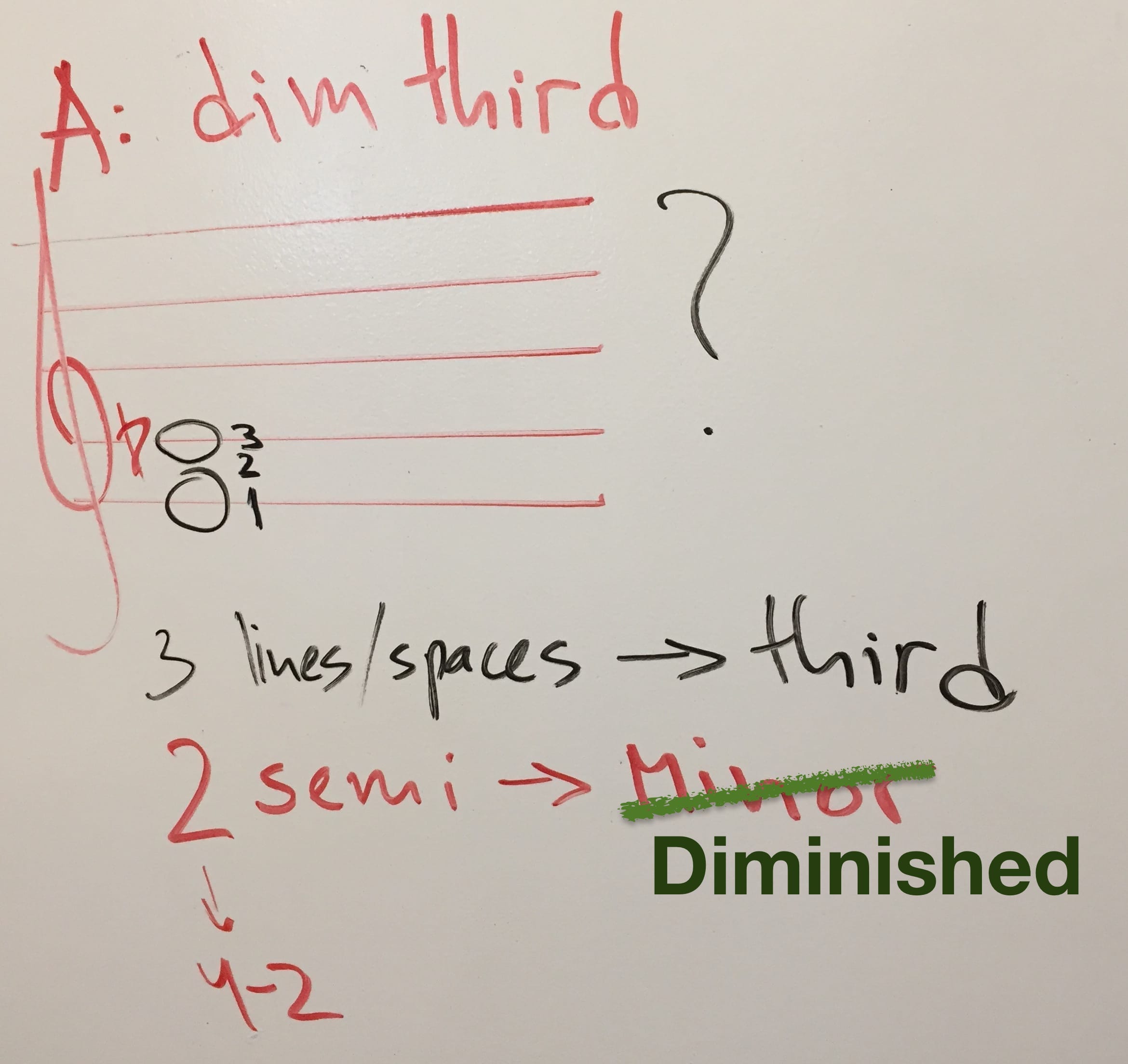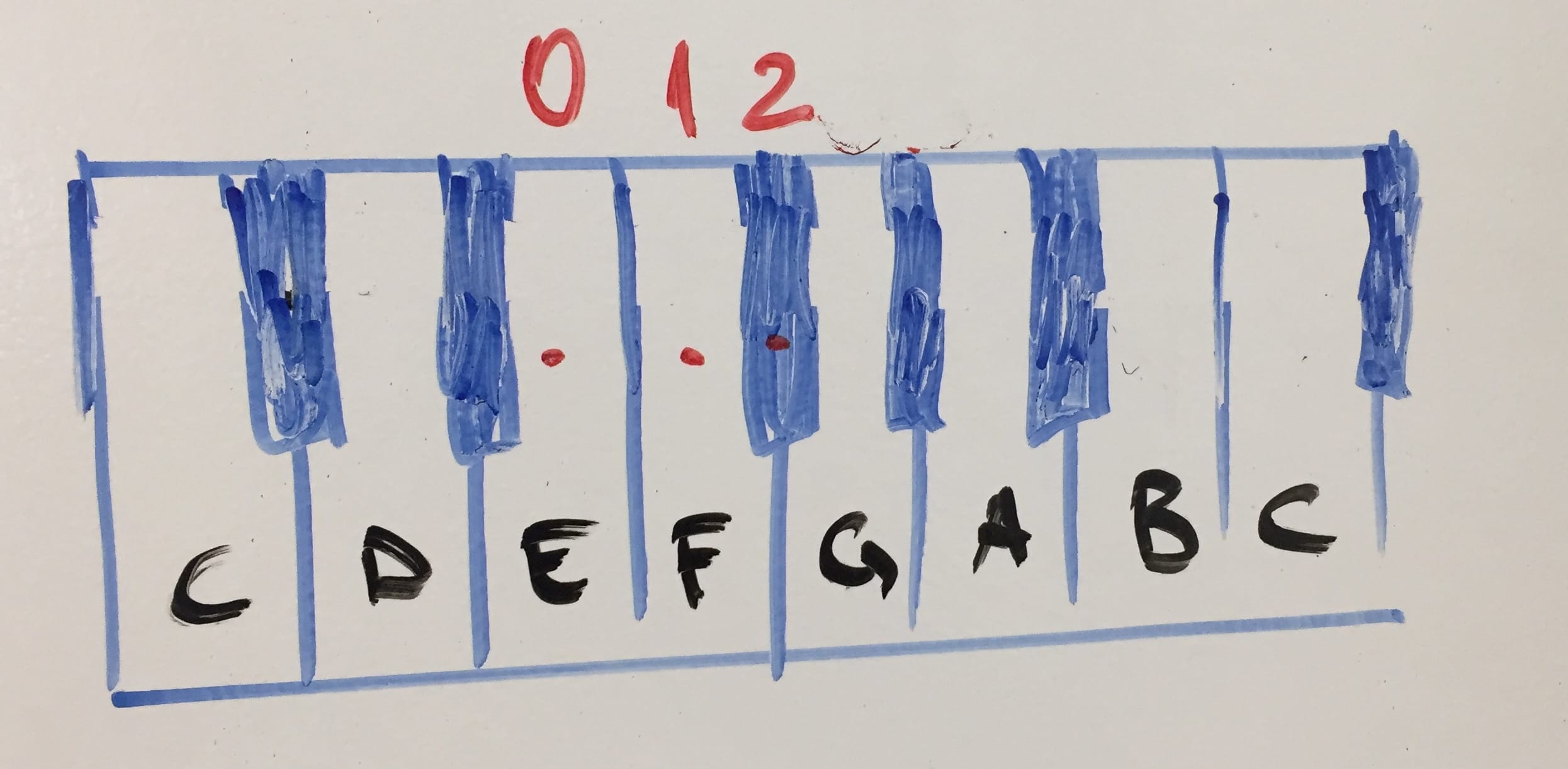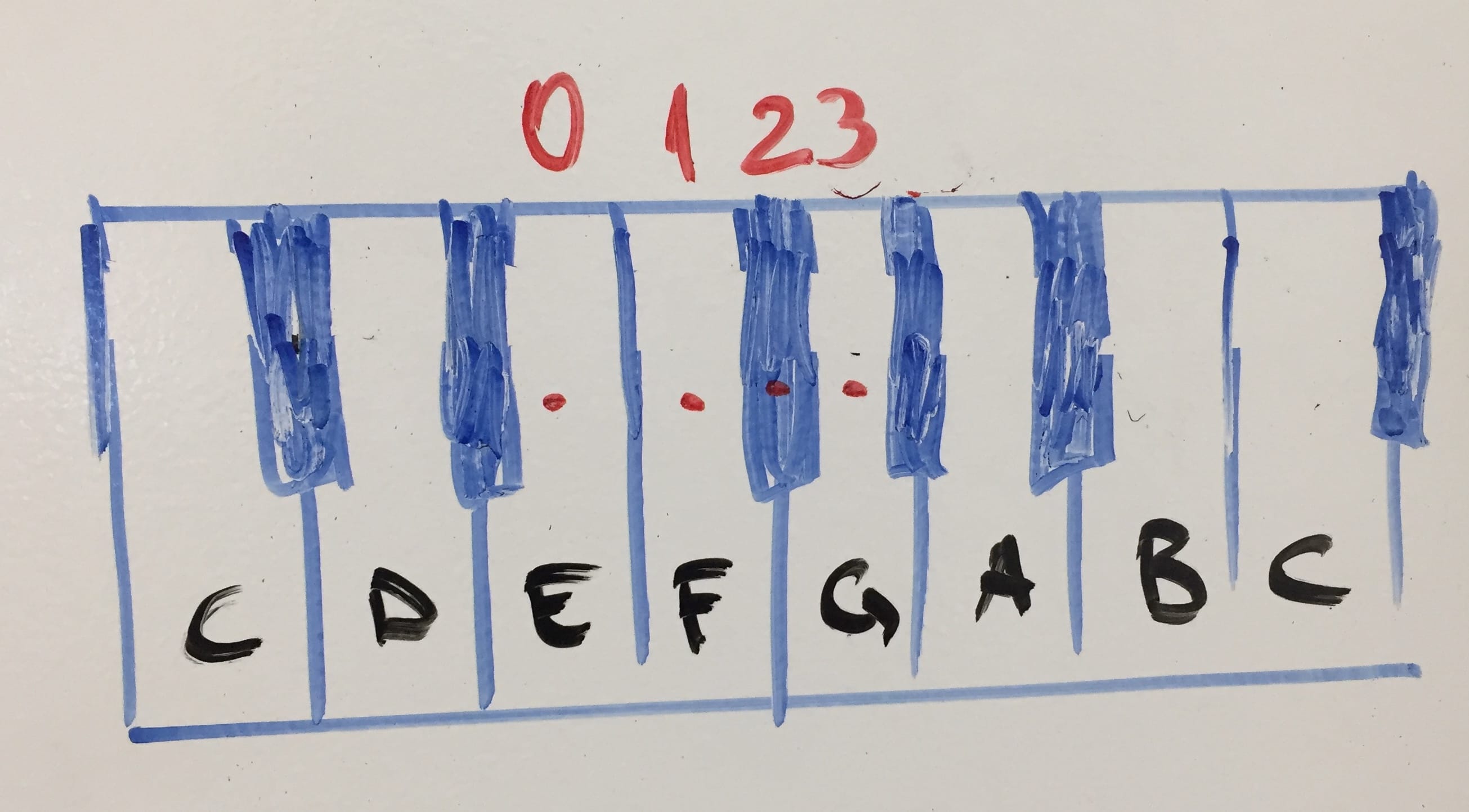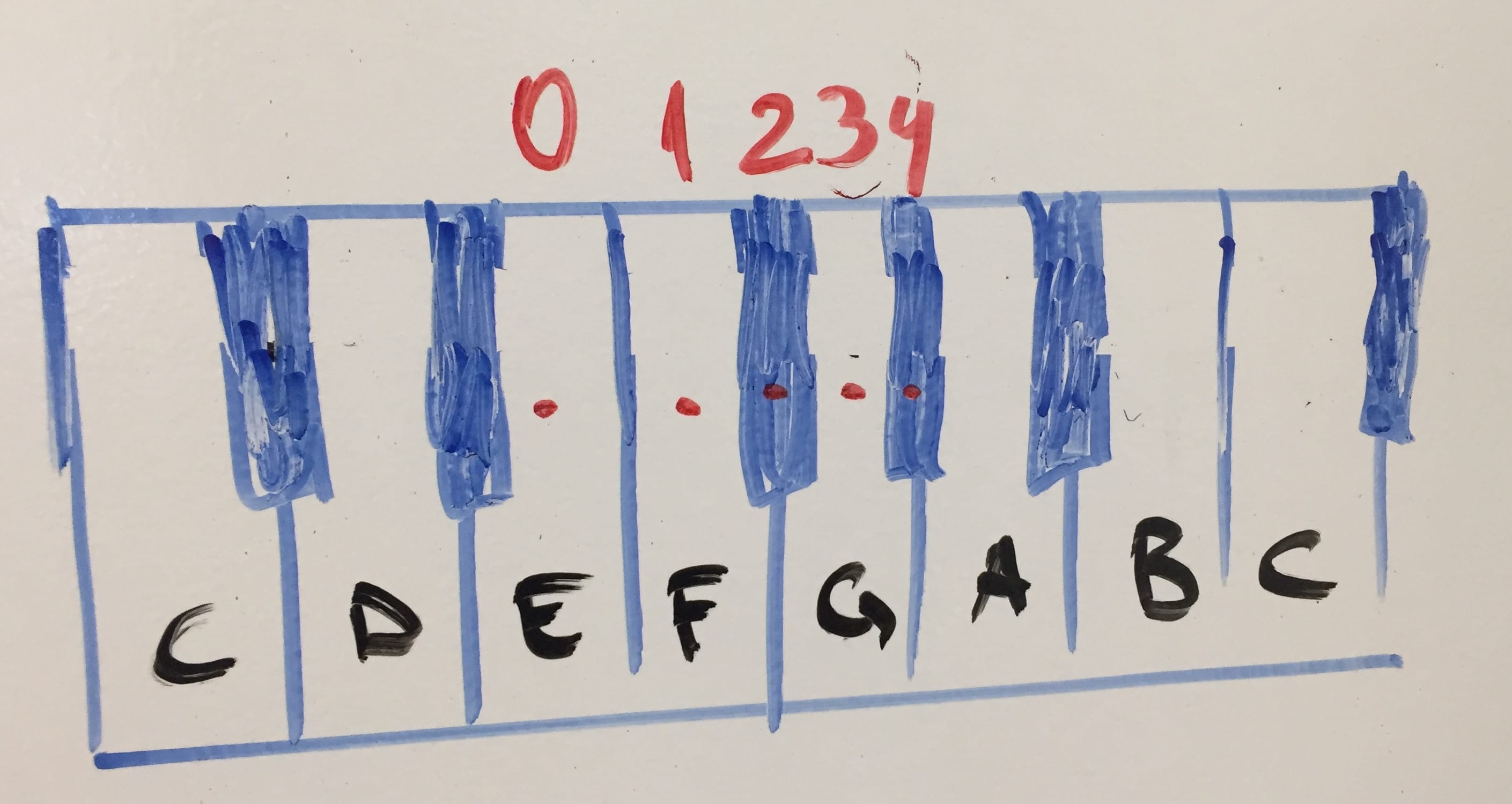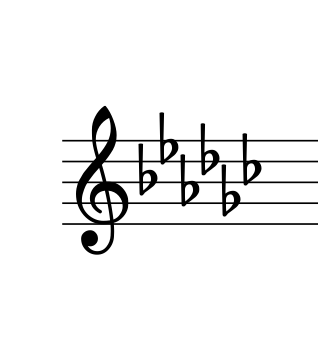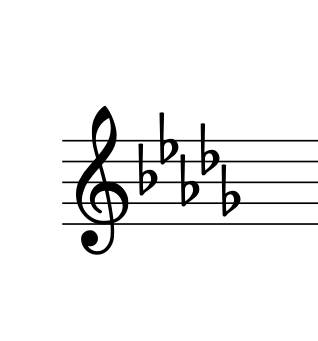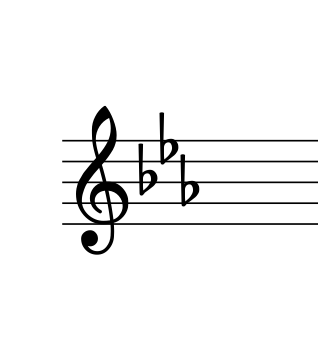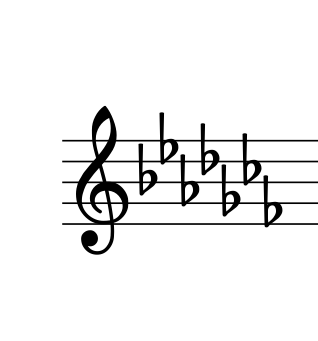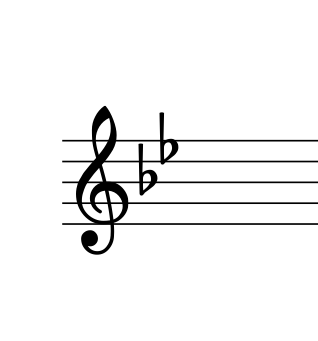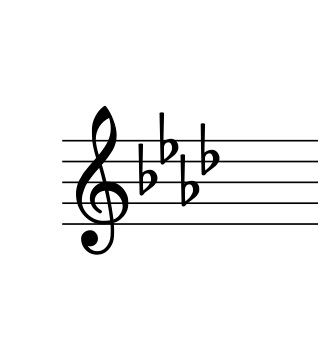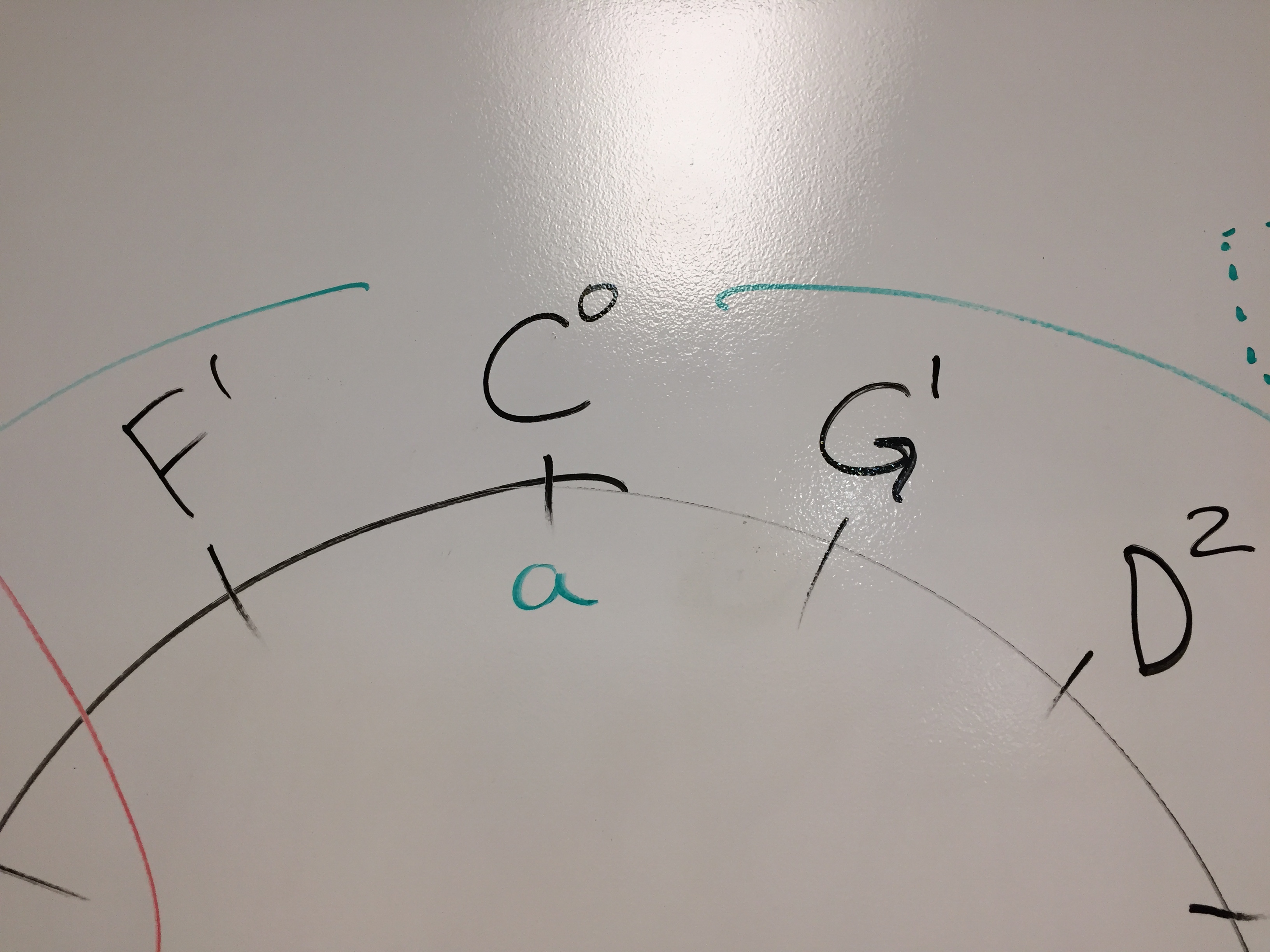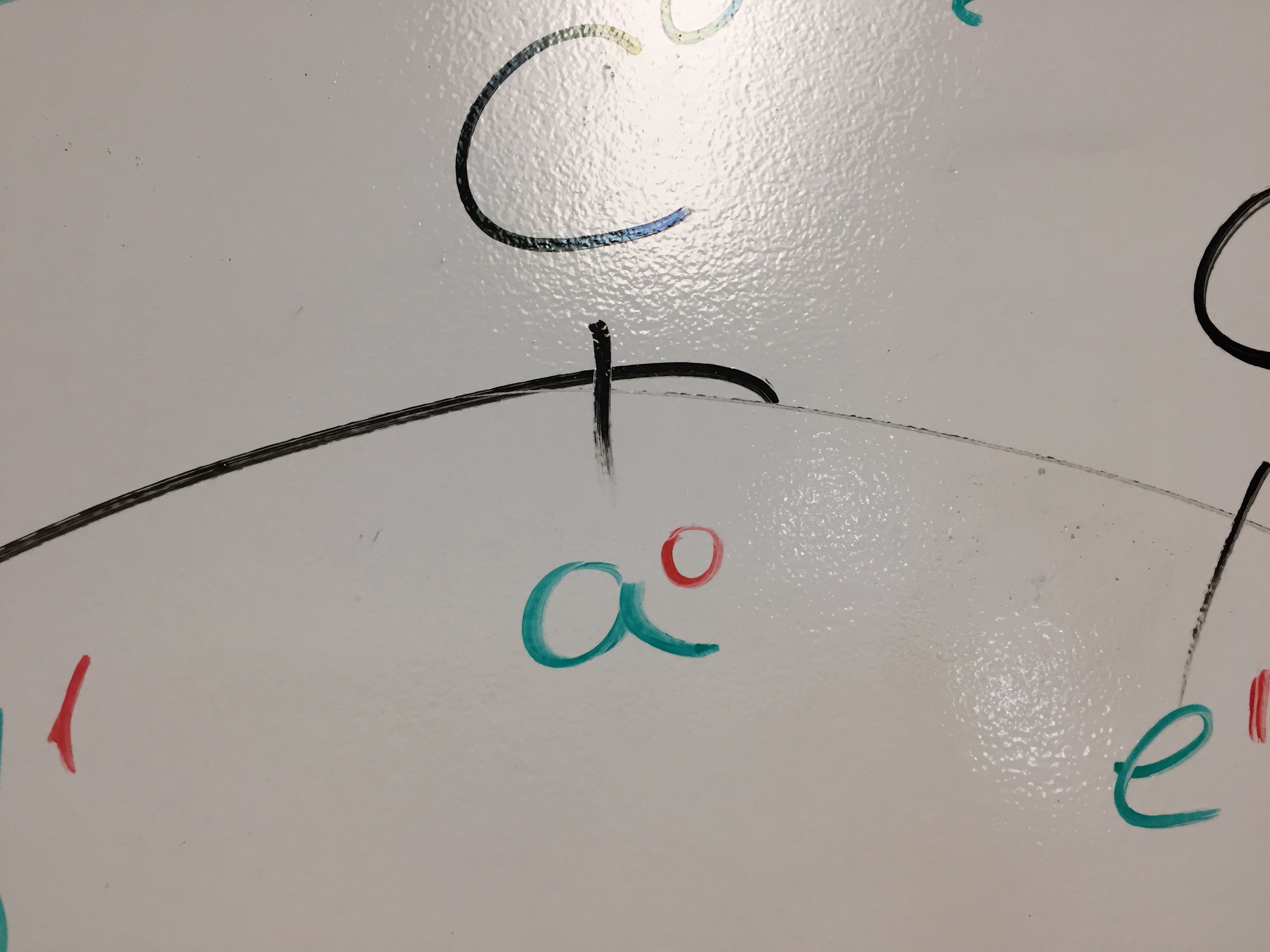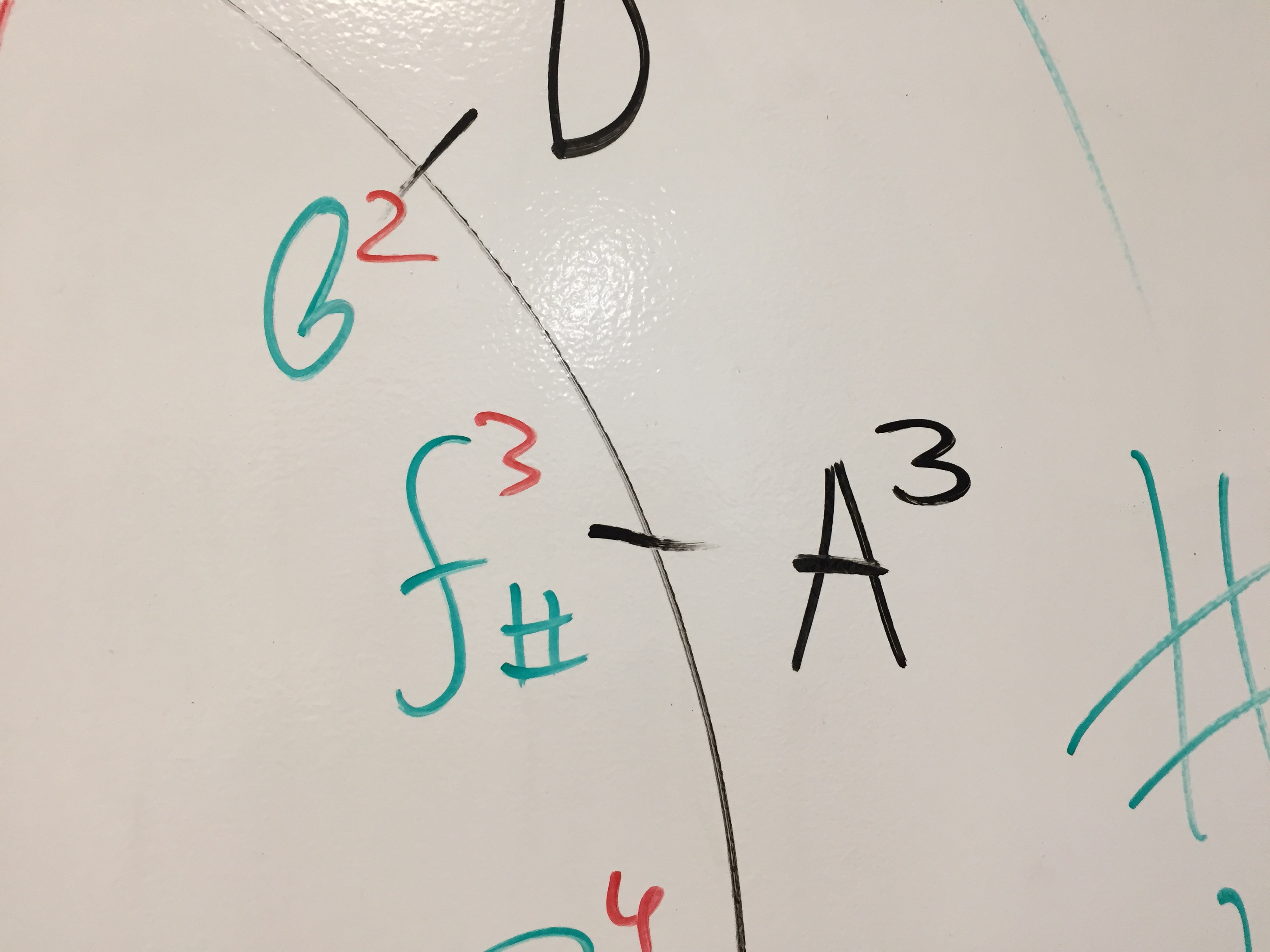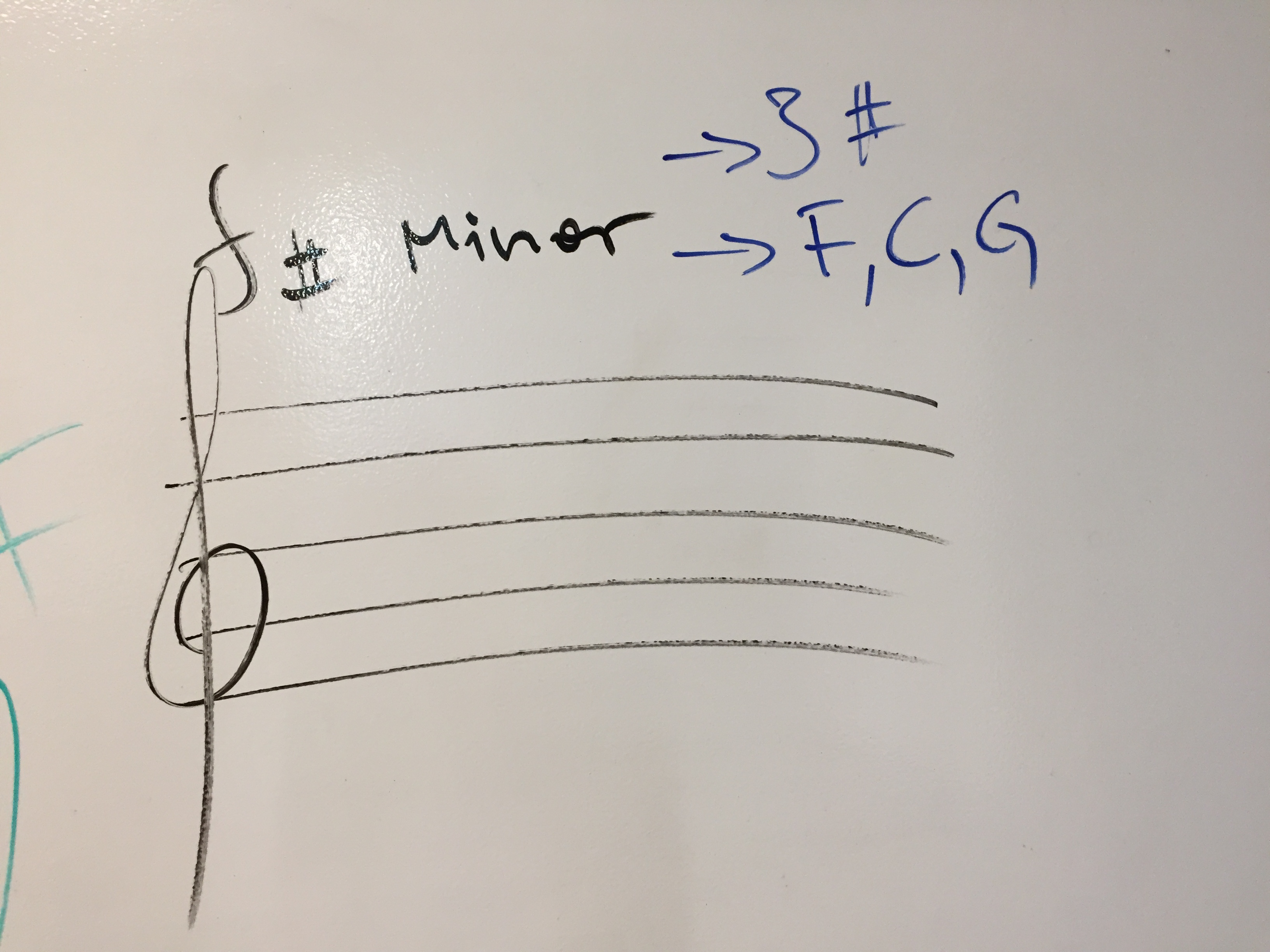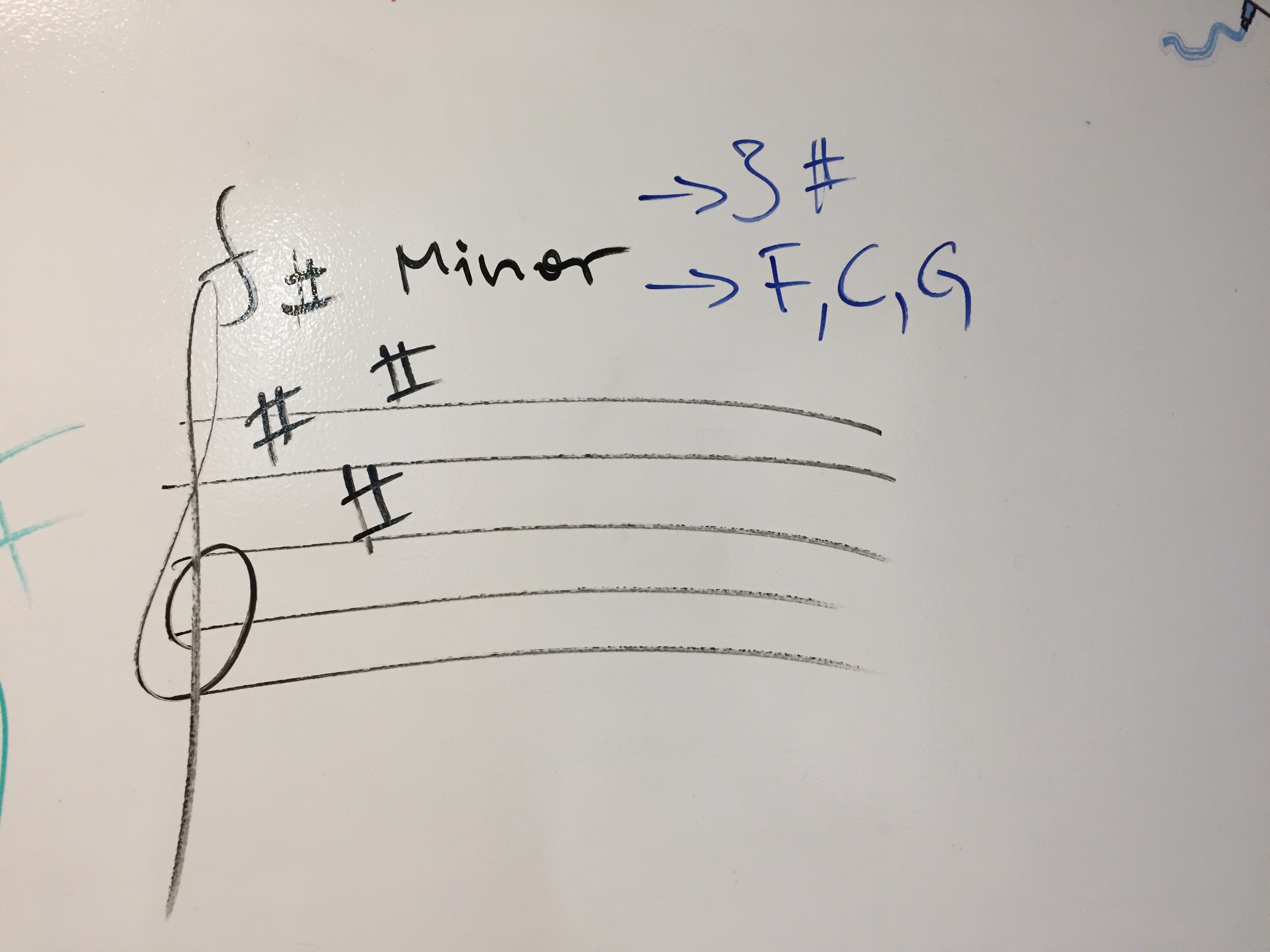Hello and welcome to this 2-part blog post on intervals. I mean intervals such as “major third” and “augmented fifth”, things like this. Extremely important building block in Music Theory. You need intervals to transpose stuff for example. Or, much more importantly, to figure out how to make chords (triads or more complicated ones).
Eventually with practice you should have these intervals memorized but to get off the ground you need some help.
(psst, do you want to learn about the Circle of fifths too?)
Tl;DR
Starting with the end in mind, here’s all you need in order to figure out any interval ever:
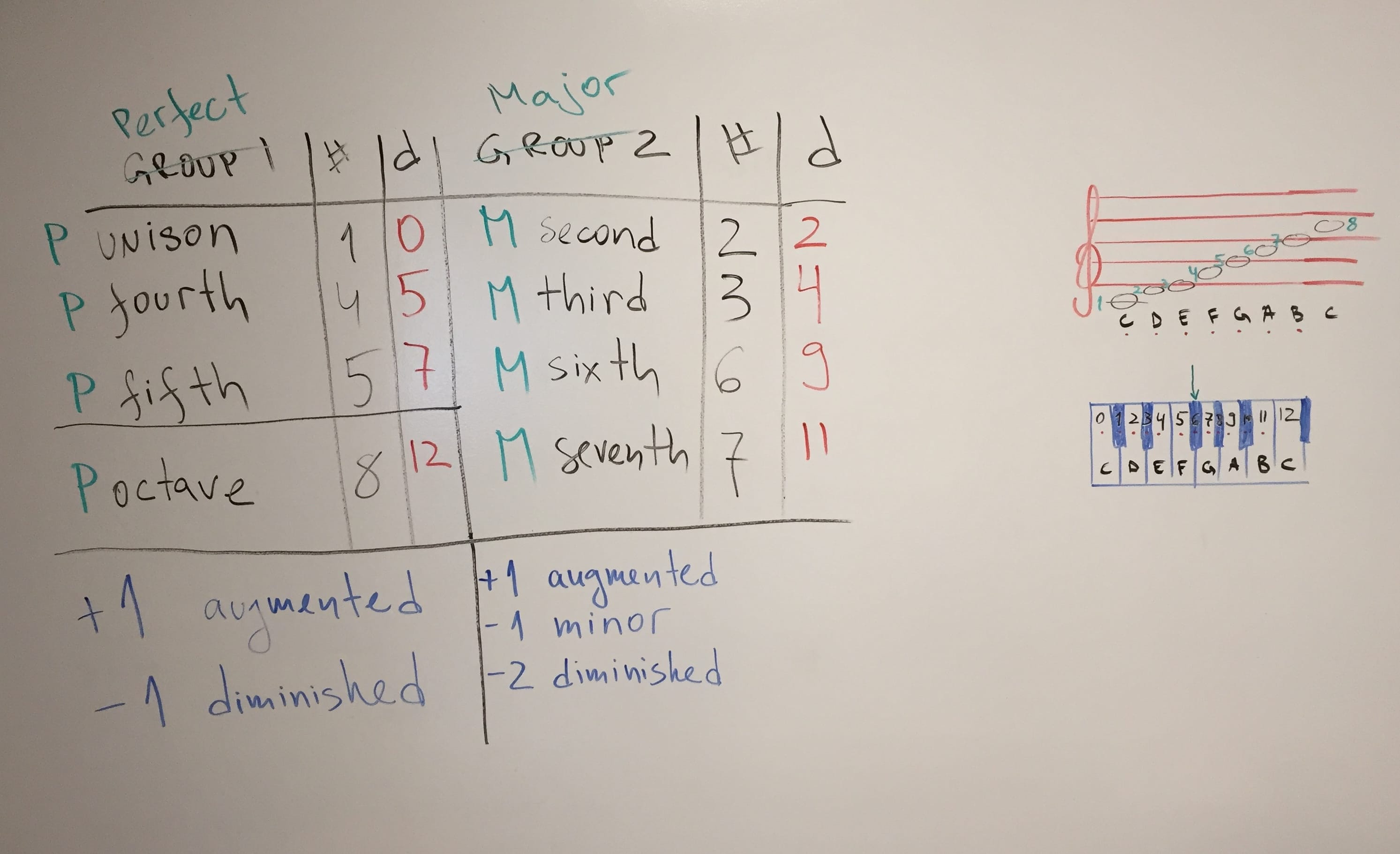
In this first post you’ll learn how to draw most of this table, in the second – how to finish and use it.
You should be able to draw this on your own so you don’t rely on referring to a piece of paper (that you lost last week, most likely) and also so that you memorize the intervals sooner. DIY FTW!
Mother’s little helpers
You’ll need some aids. The first one is the C major scale. Pancakes all the way!

From C to shiny C:
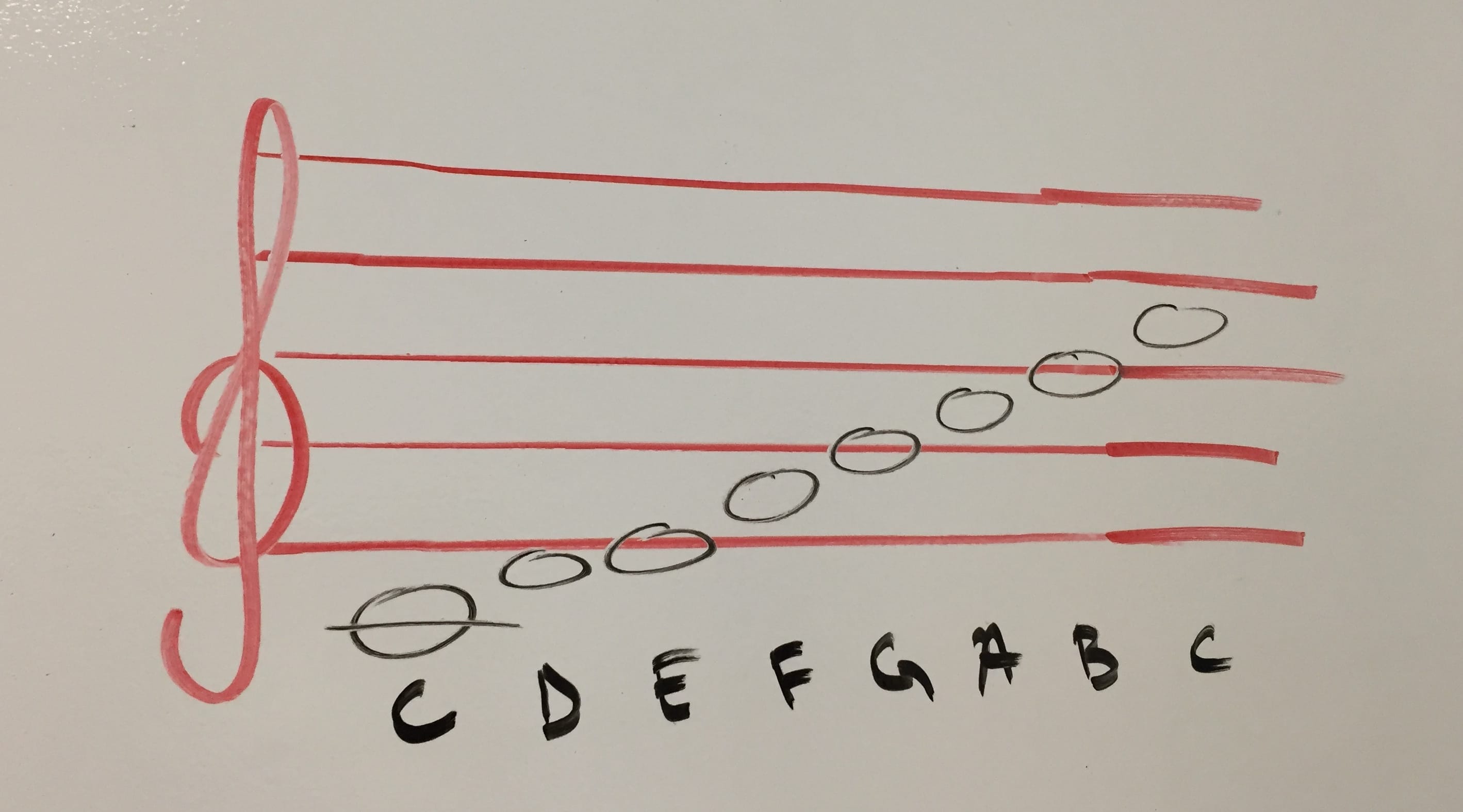
Next, you need a keyboard. You know how to draw a keyboard, right? Rectangles for the white keys, then the black keys go in groups of 2, nothing, 3, nothing, 2, nothing, 3, nothing… Finally the white key next to the group of 2 (that look like Chopsticks) is C. The white key next to the cluster of 3 (that look like a Fork) is F. Chopsticks – C, Fork – F. Fill in the rest using your mad alphabet skills.
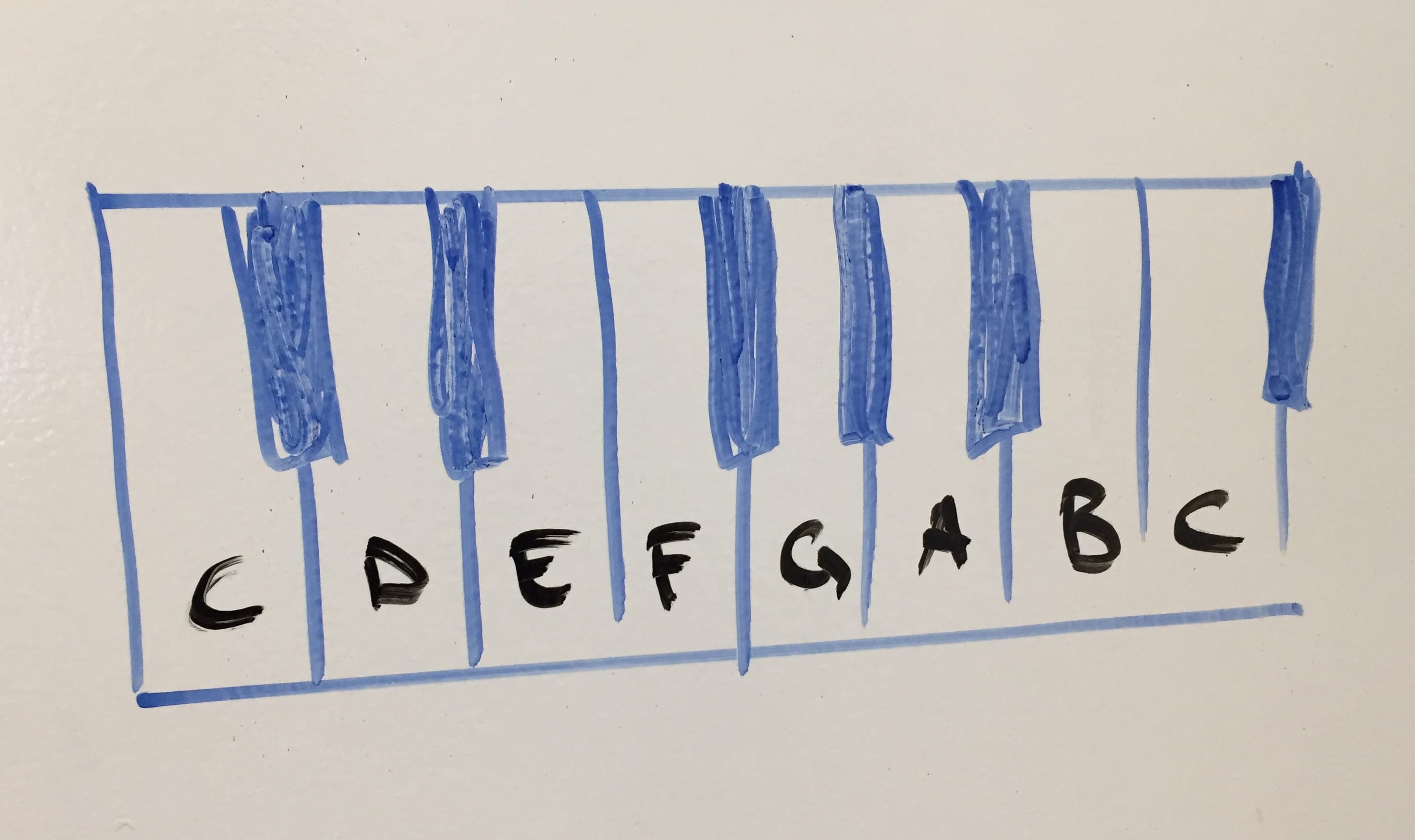
So there – these are the visual aids: a staff with C major and a keyboard:
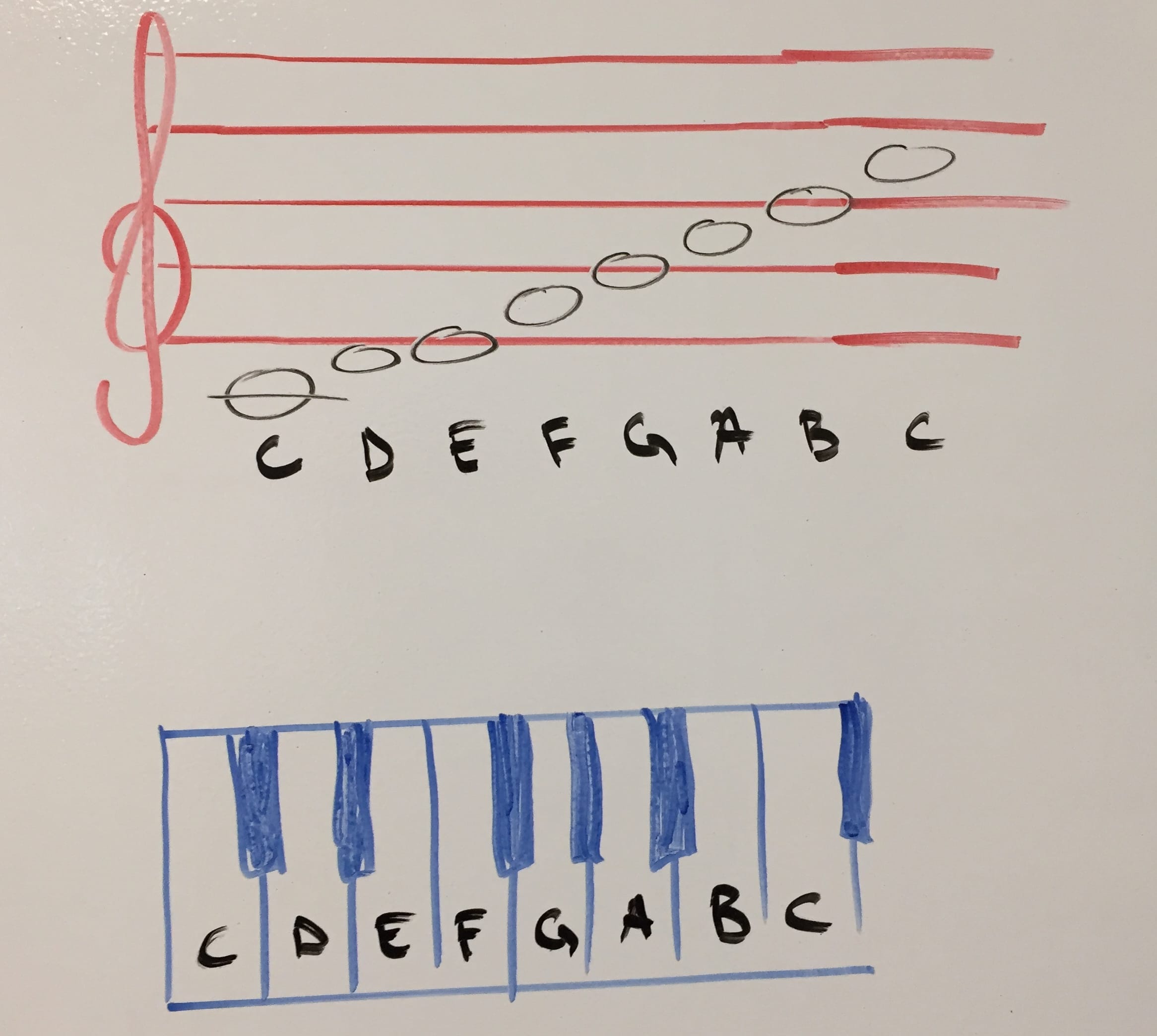
The table of intervals
Time for the table. It starts with two groups. The intervals belong to one of the two groups.
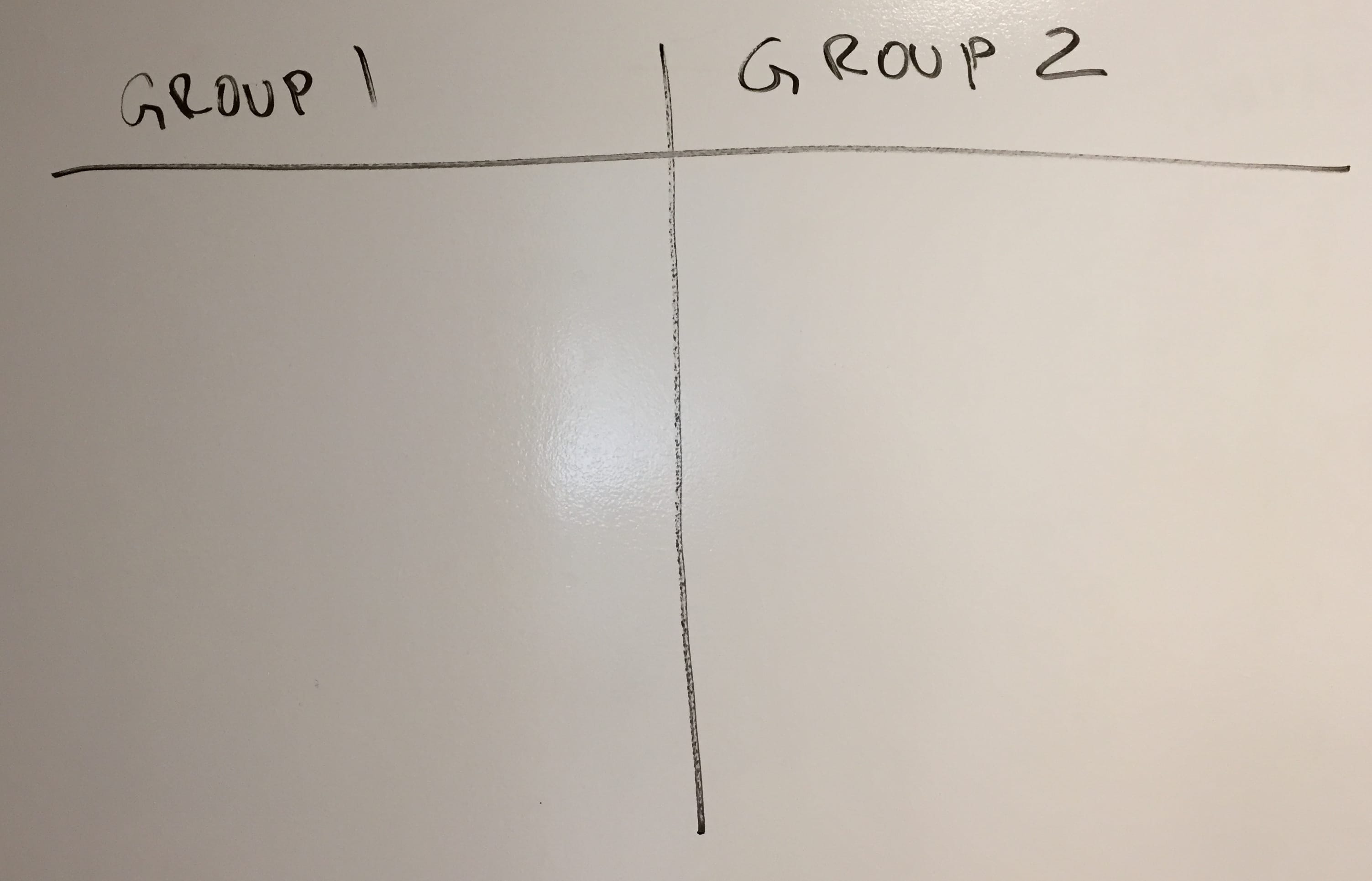
Each group gets two more columns: “#” for “number of lines and spaces on the staff” and “d” for distance in terms of semitones on the keyboard.
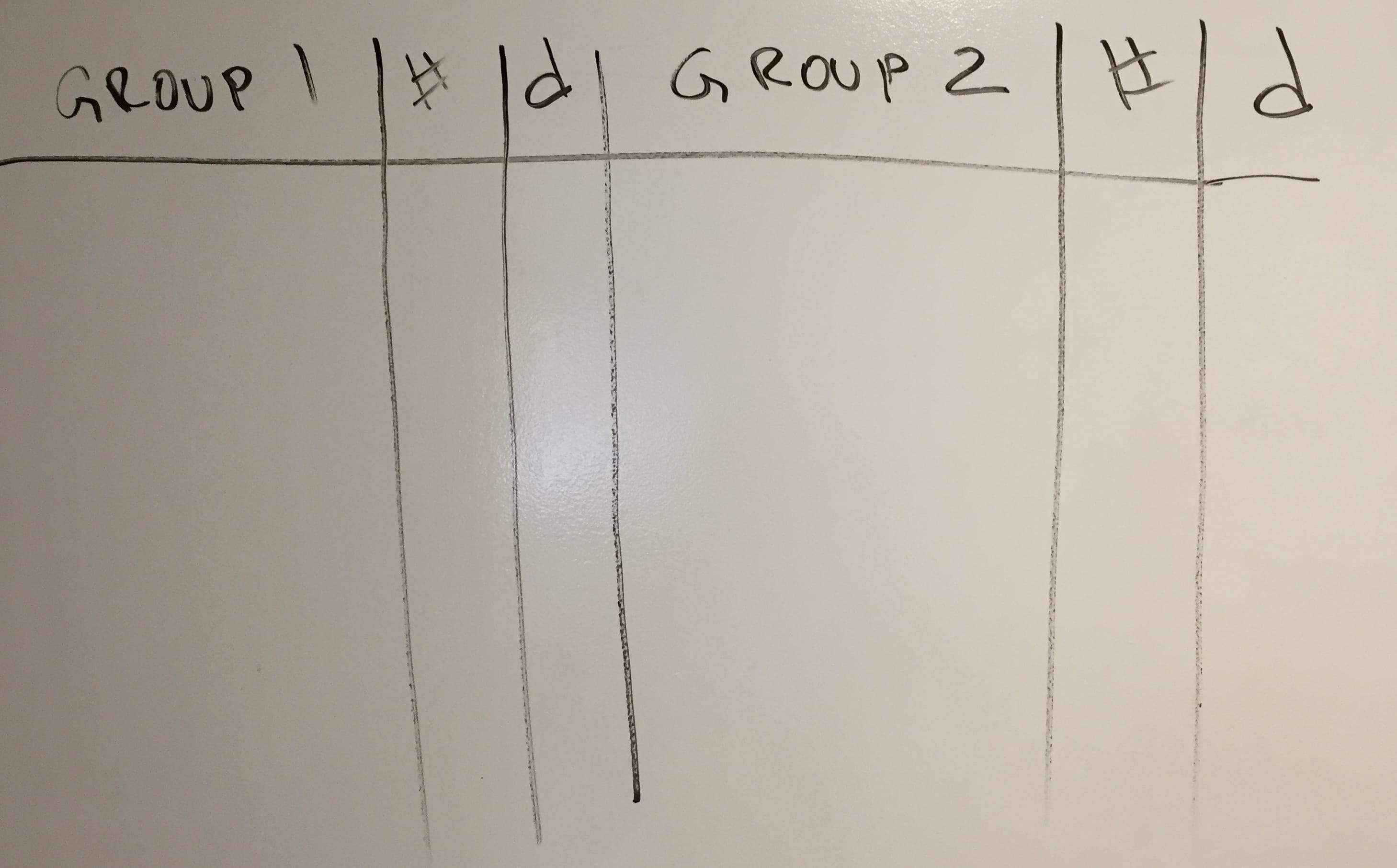
Now you need to put the numbers 1 through 8 in the # column. 1 goes first on top left.
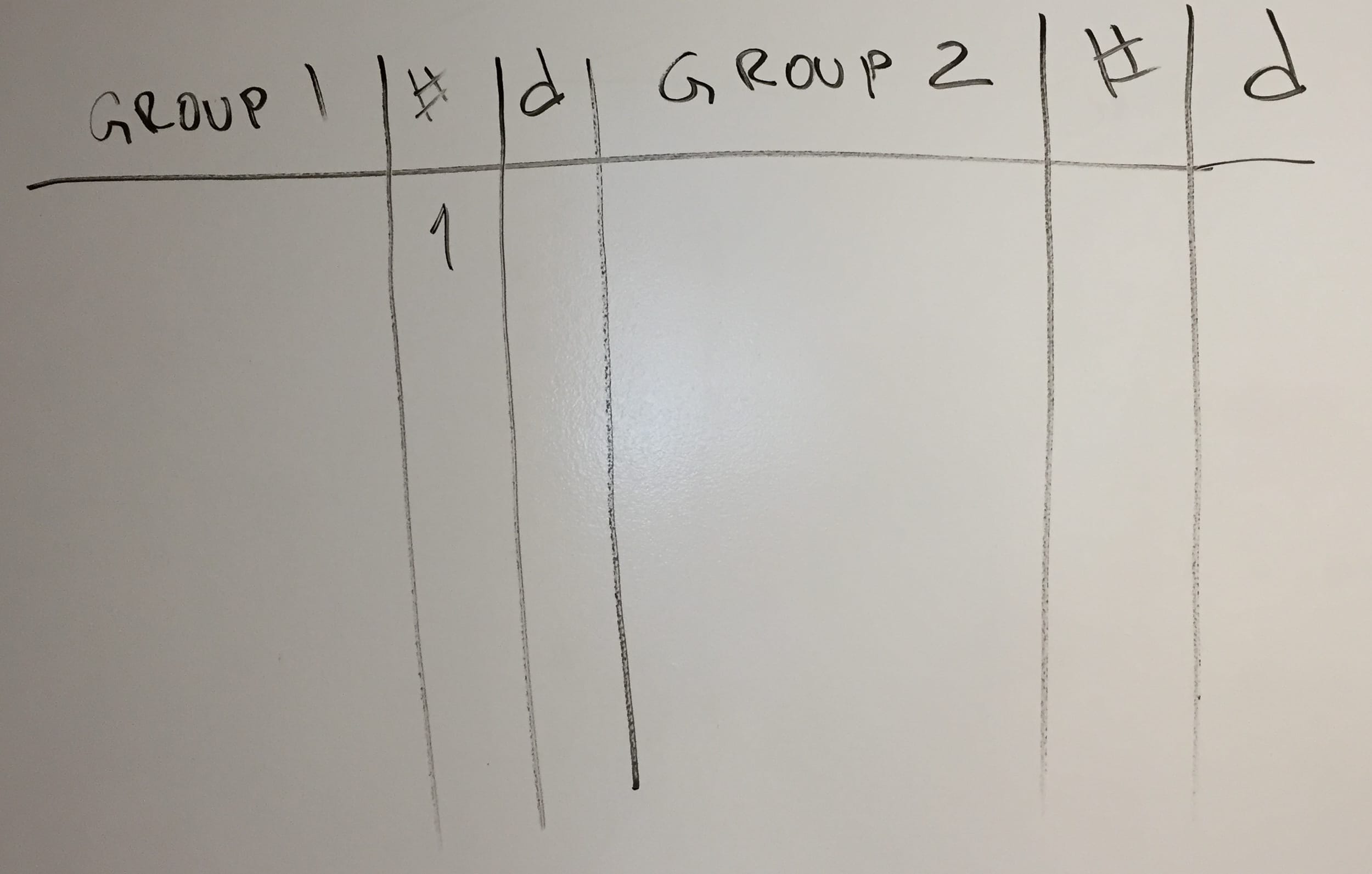
2 is top right.
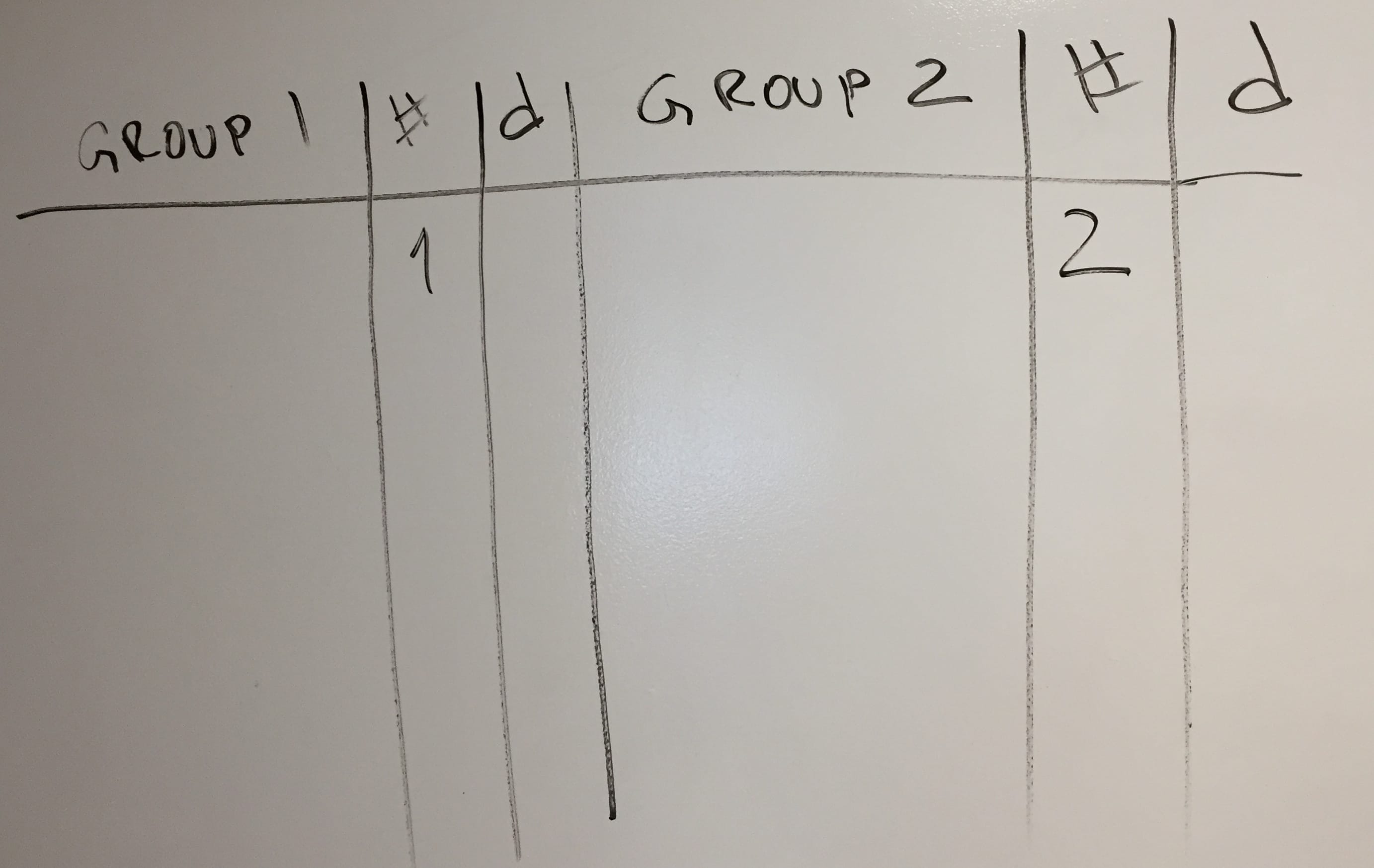
3 goes under 2.
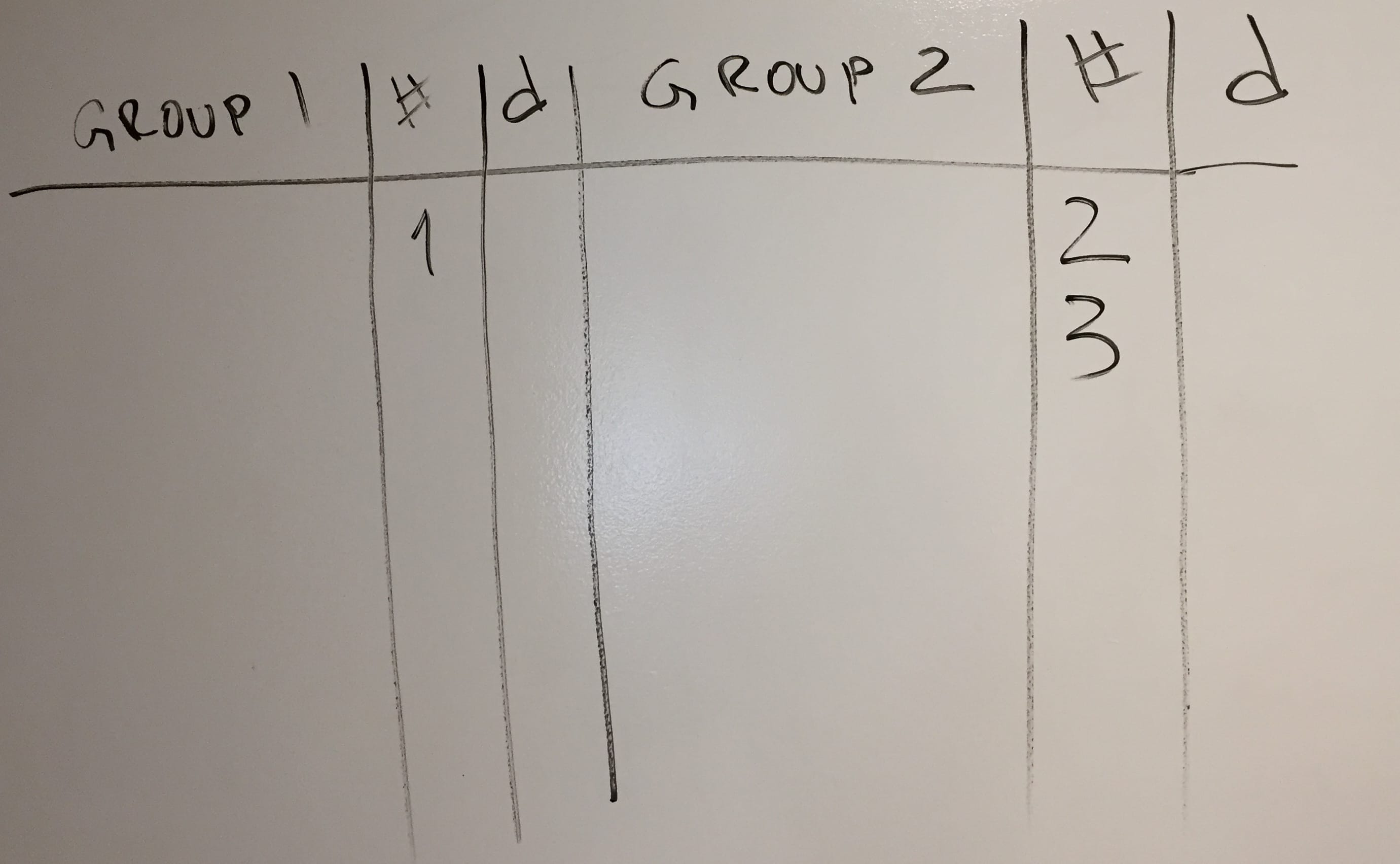
4 goes to the left of 3.
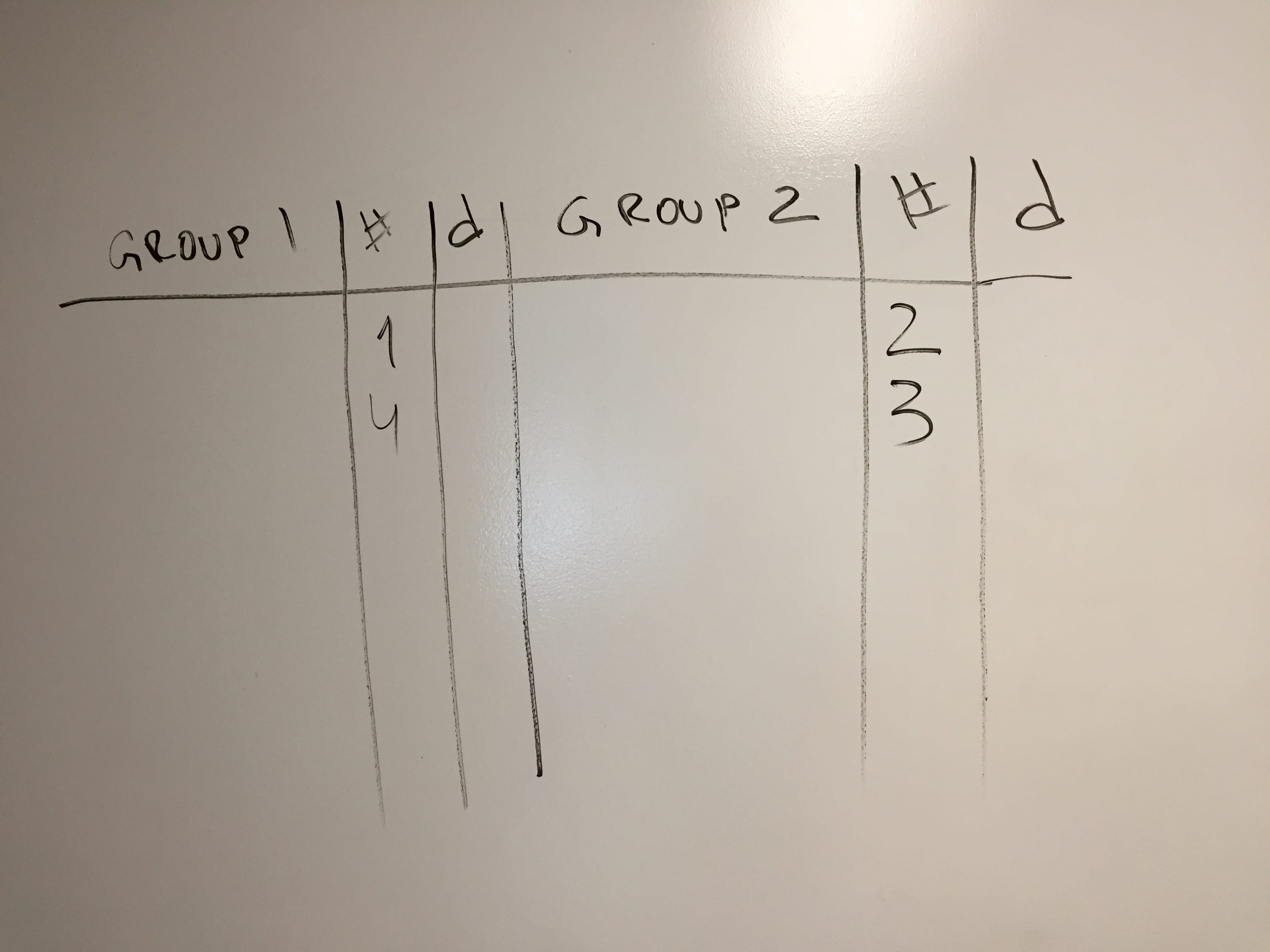
5 is under 4.
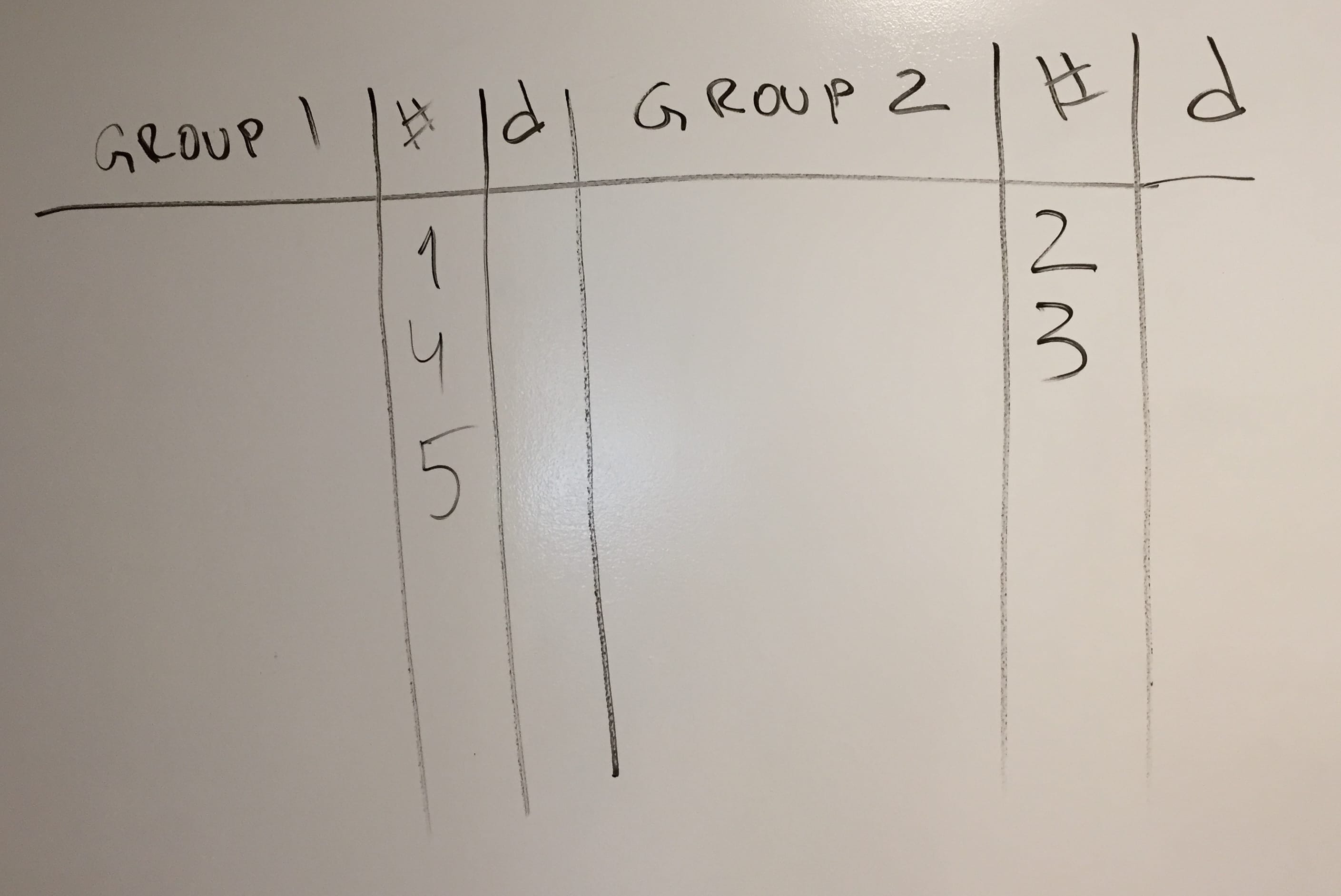
6 is to the right of 5.

7 under 6.

And finally 8 is bottom left.
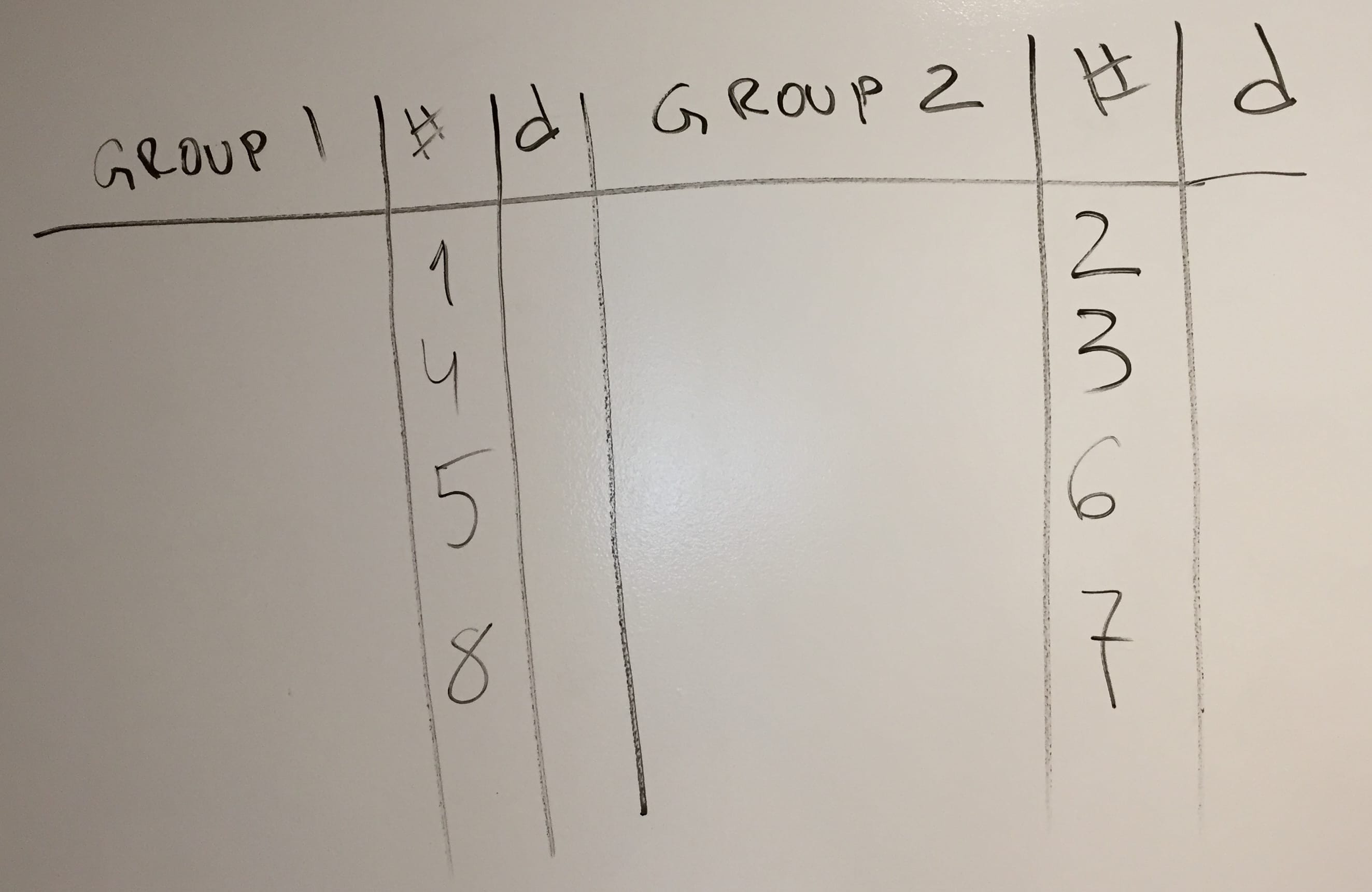
Did you see a pattern? It’s a snake!
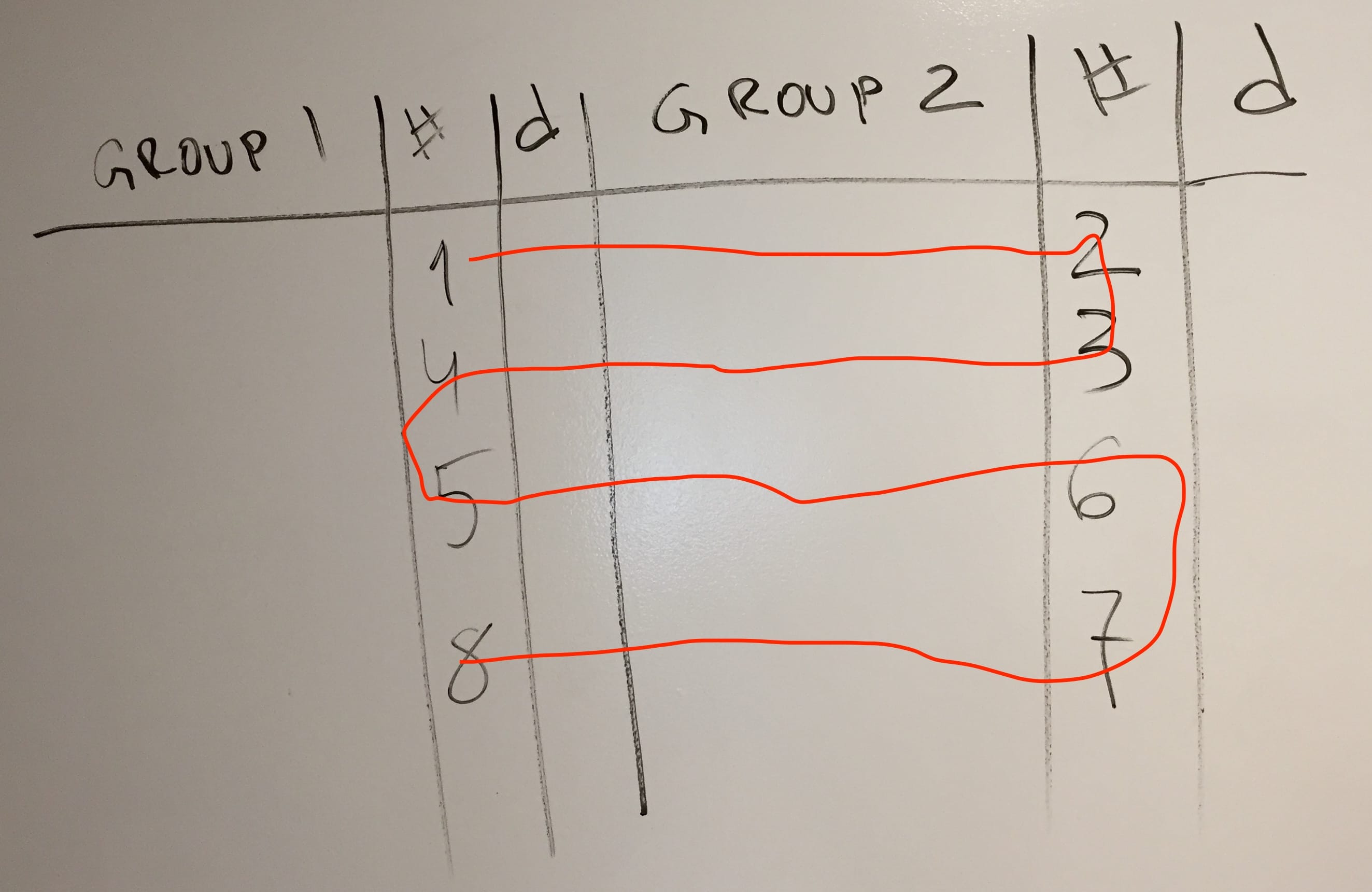
Why 8 do you ask? 8 is the number of lines and spaces between C and C. More on that later.
Let’s add some names to those numbers, starting with the oddballs: 1 is called unison and 8 is called an octave.
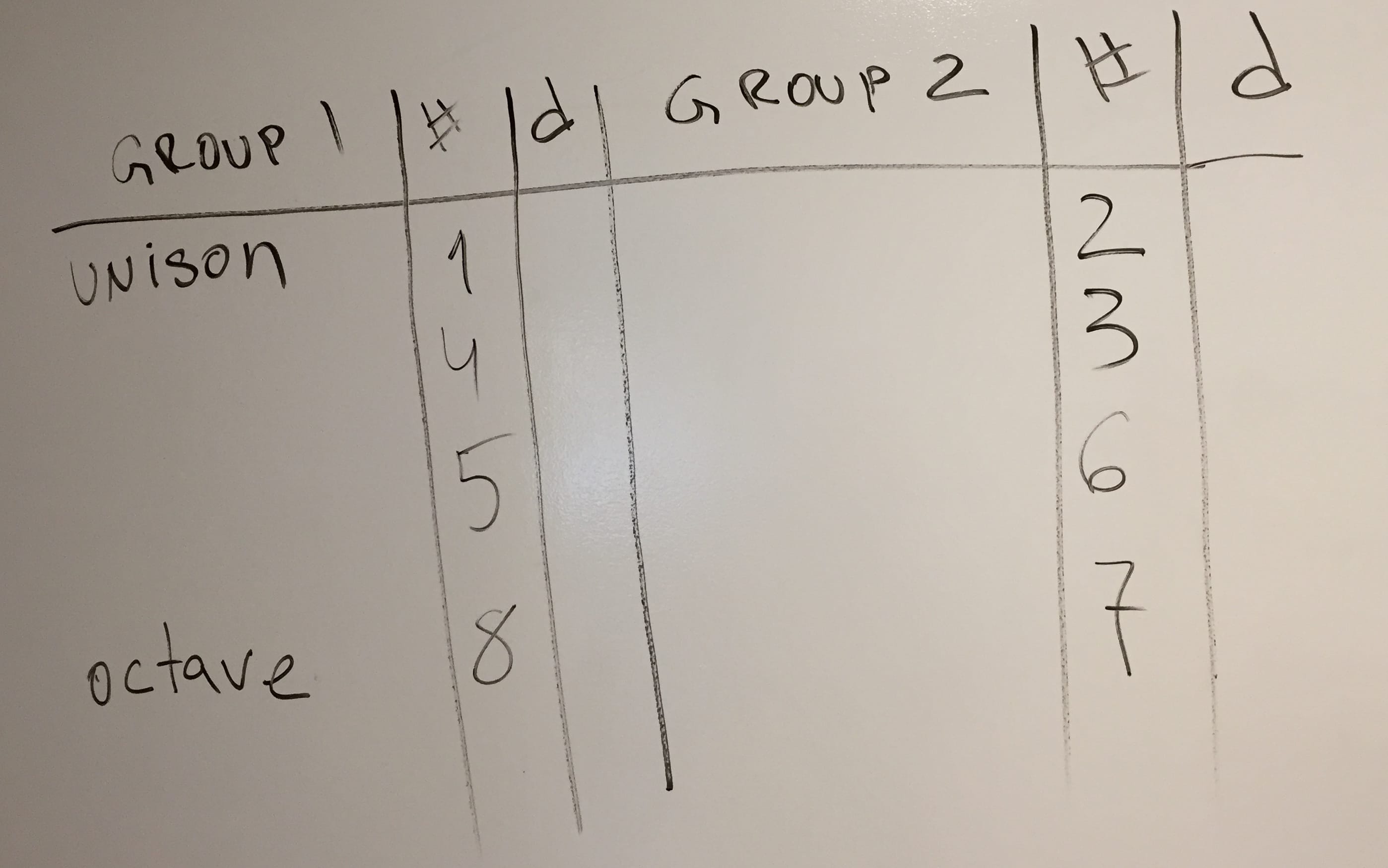
Unison means “the same sound”. So the first C and the first C are the same, the interval between them is a unison. Why 1 and not 0? Because when you count the number of lines and spaces you start with the first note. You put your finger on the first note and say “one”. As you move up, you increment. Don’t worry, you’ll see a lot more of this later.
Next, let’s fill in the rest of the interval names in the left column (group 1). They are pretty boring: fourth and fifth.
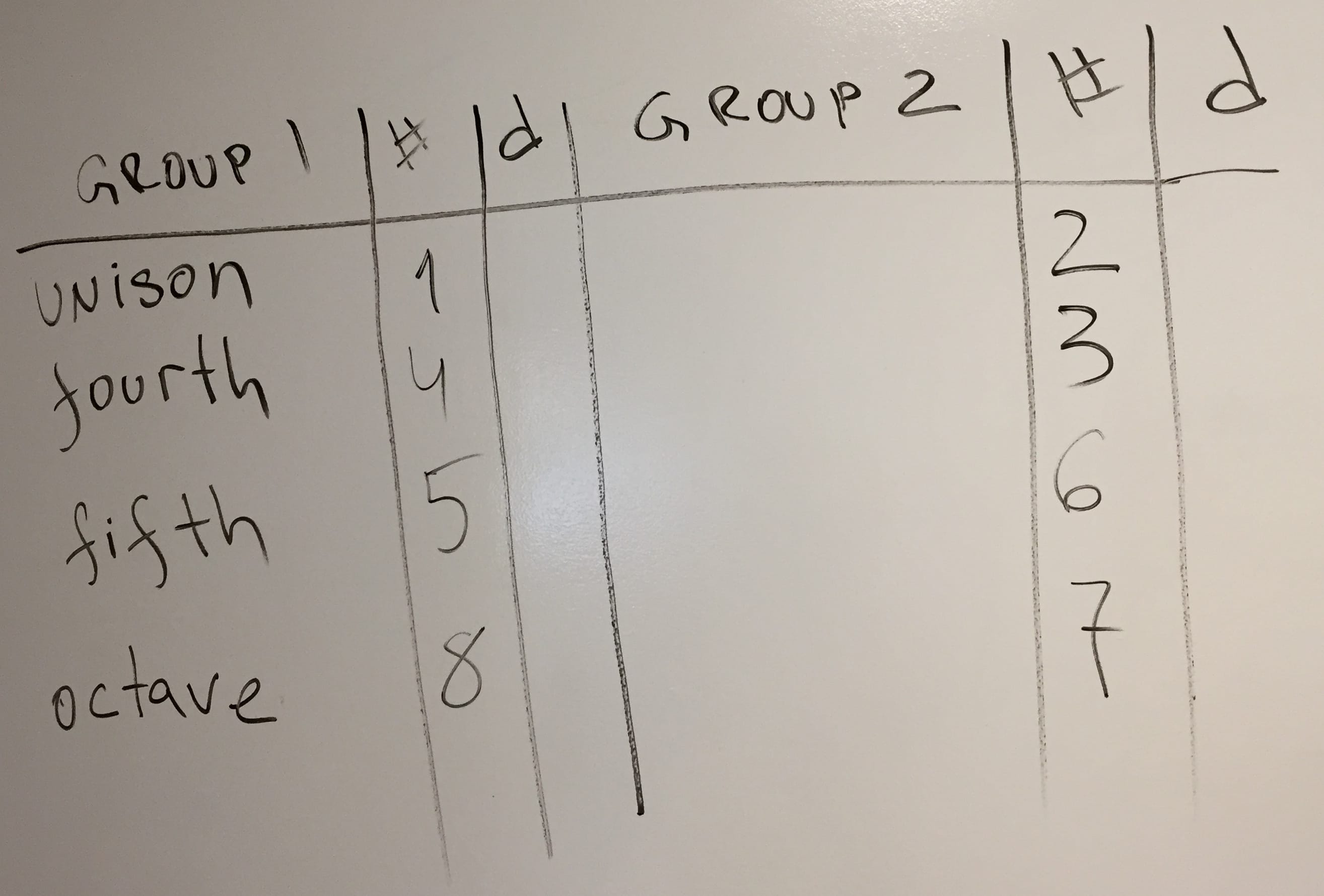
Now the right column (group 2). It’s all-too-boring too. Second, third, sixth, seventh.
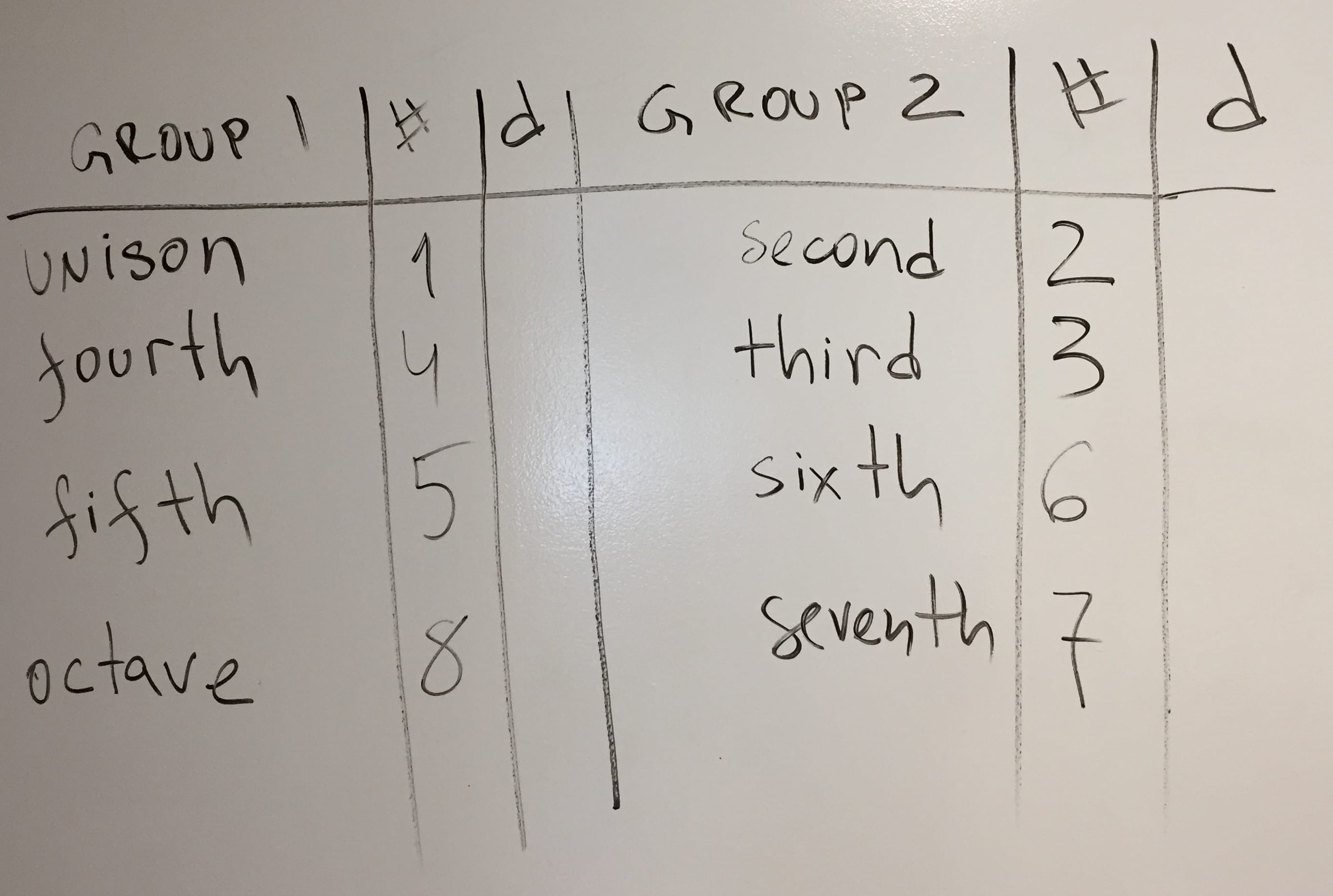
Back to the discussion above, let’s learn to count lines and spaces.
Put your finger on the first note, say “one” and as you move up you increment for each line or space. So C is 1 and it’s on a line. You move up – it’s a space. You increment 1 – it’s a 2. The note there is D.
Next one up is E. It’s 3. F – 4. And so on.

Now it’s time to populate the last column left – the one with distances in terms of semitones.
First is the unison. It’s the same C note. There are 0 semitones between the C and the same C. So put a 0.
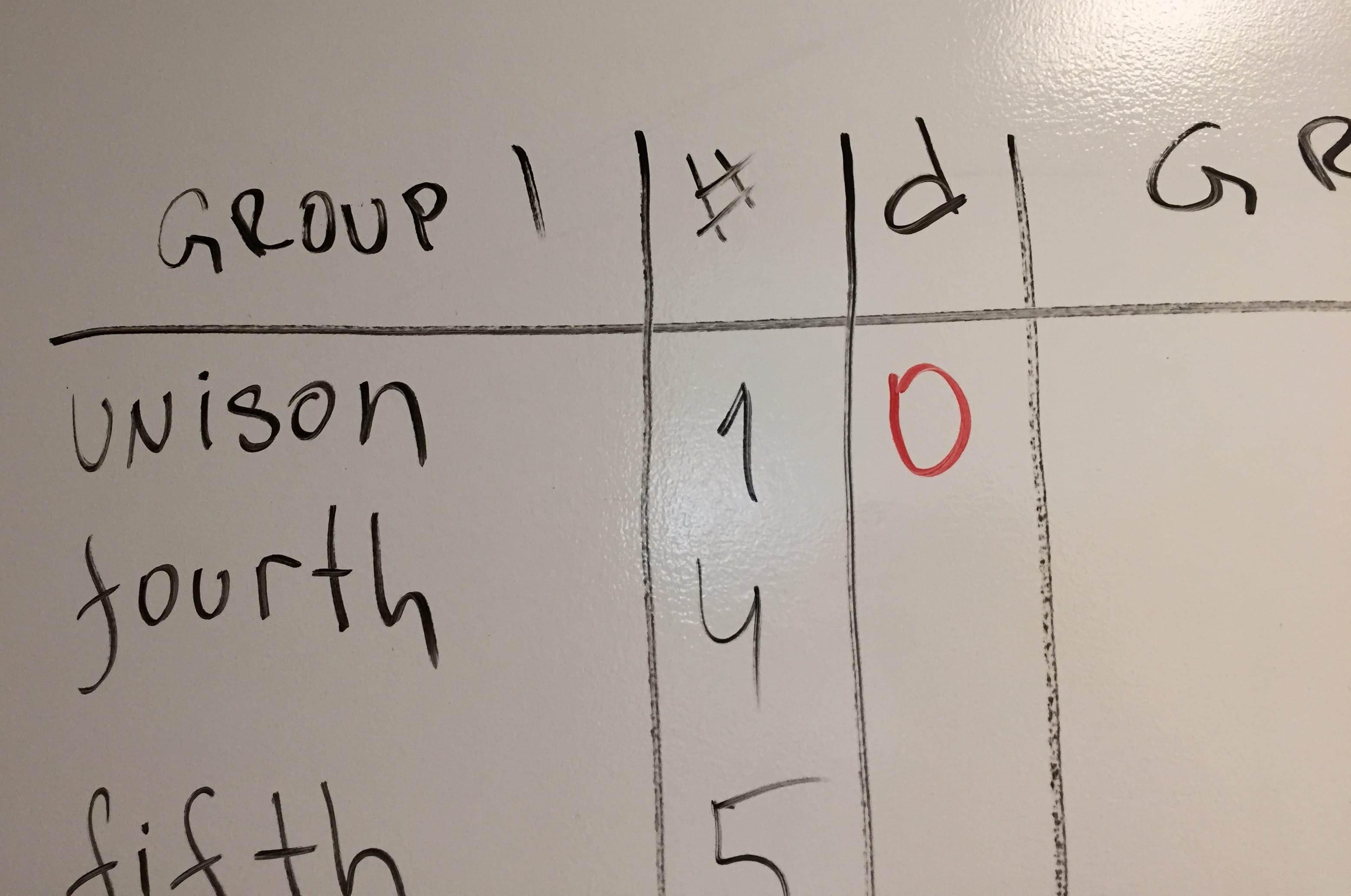
Next comes the second interval called “second” (wow!).
The number of lines and spaces between C and D is 2, we already established this and put in the # column.

Now what about the distance in semitones? From C you go to C♯ which is one semitone, they you go to D which is another semitone. Two in total.

So since there are two semitones between C and D, you put 2 in the table.
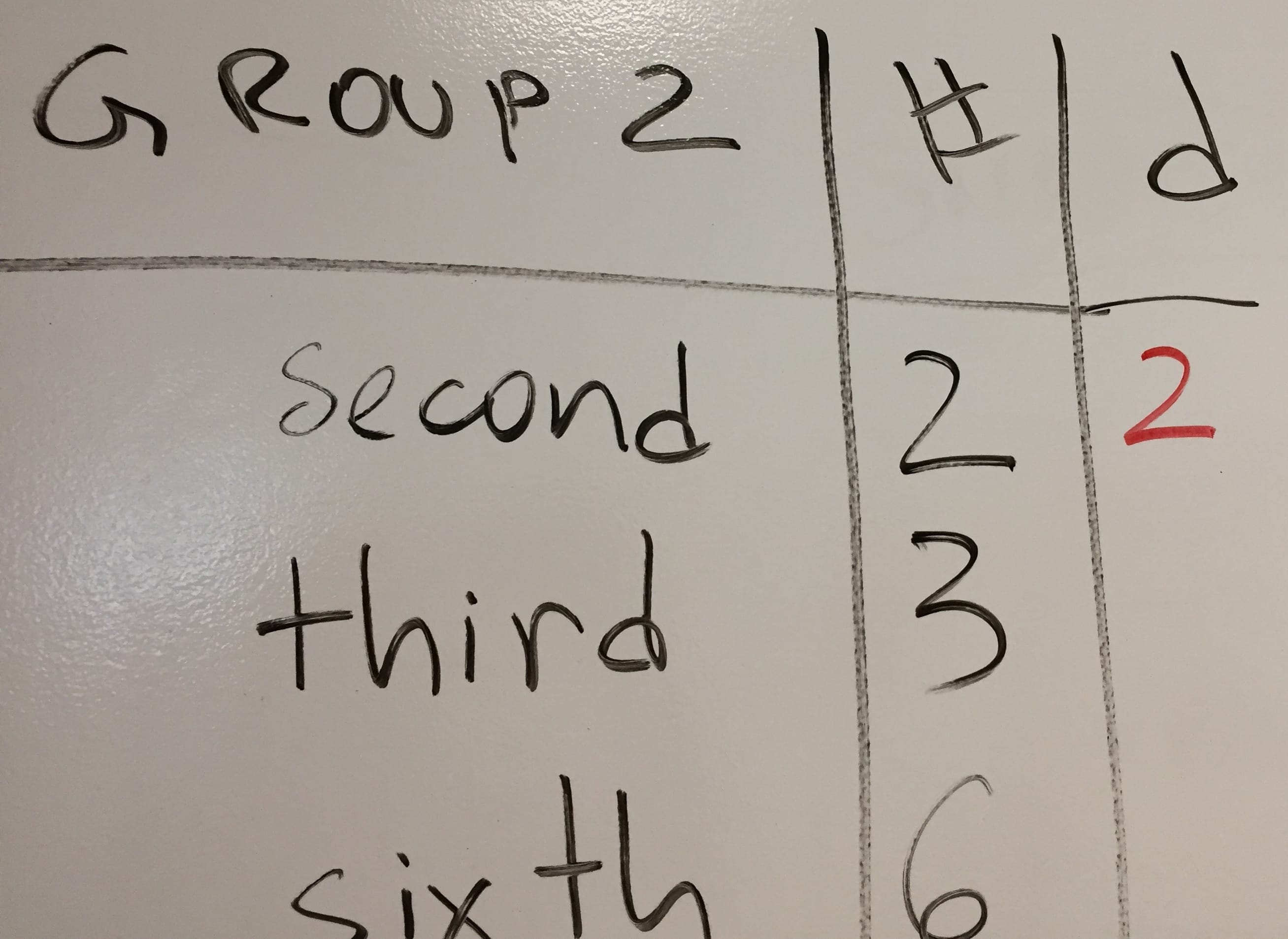
Next, the third interval. Between C and E. (BTW, we use C major to figure out the table because it’s the easiest, but these intervals then apply to any scale or starting point.)
There are 3 lines/spaces when you start from C and count C = 1, D = 2, E = 3.
And there are 4 semitones between C and E (C♯, D, D♯, E).
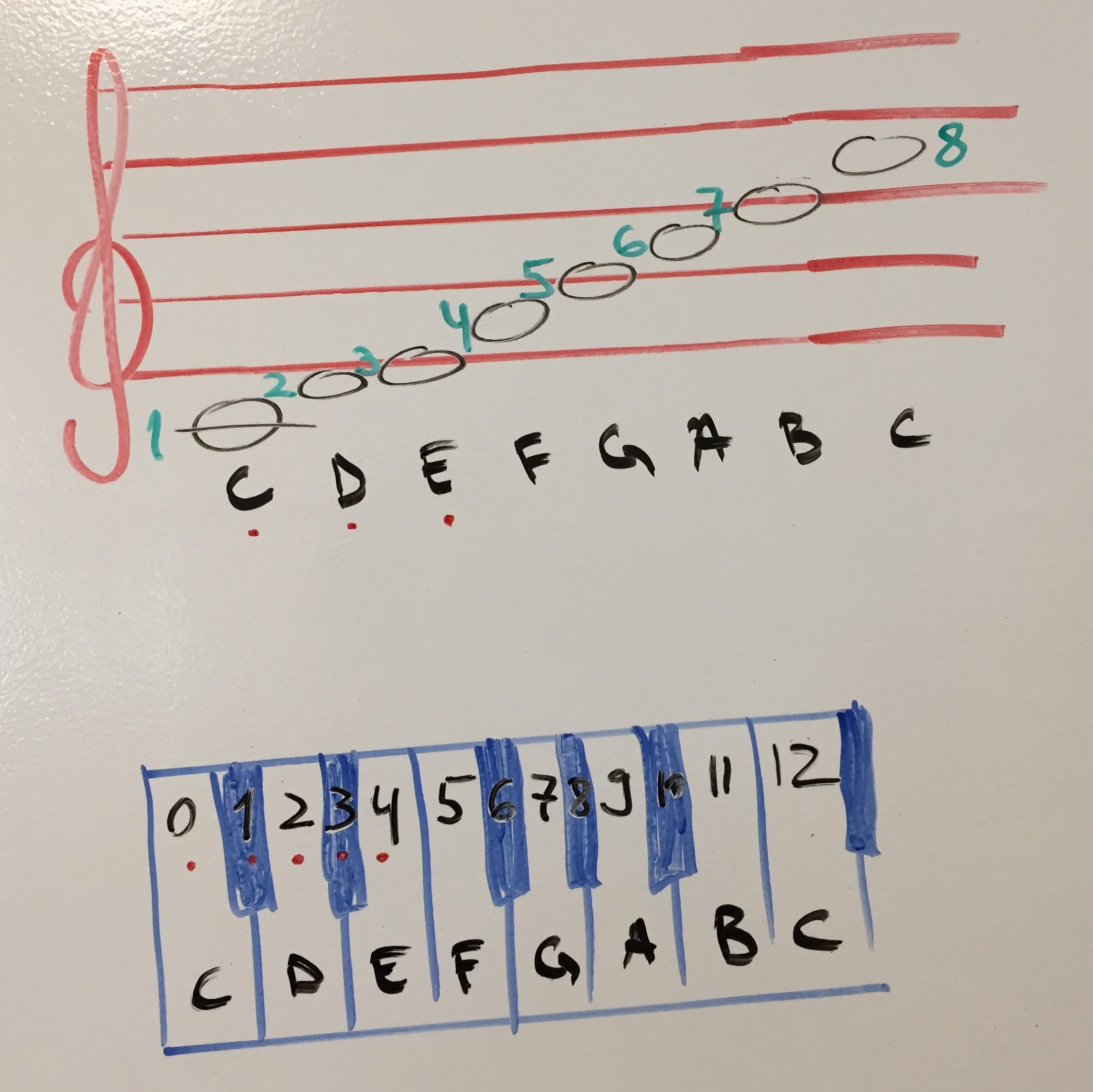
The semitone distance from C to E is 4 and that’s the number that goes in the table.
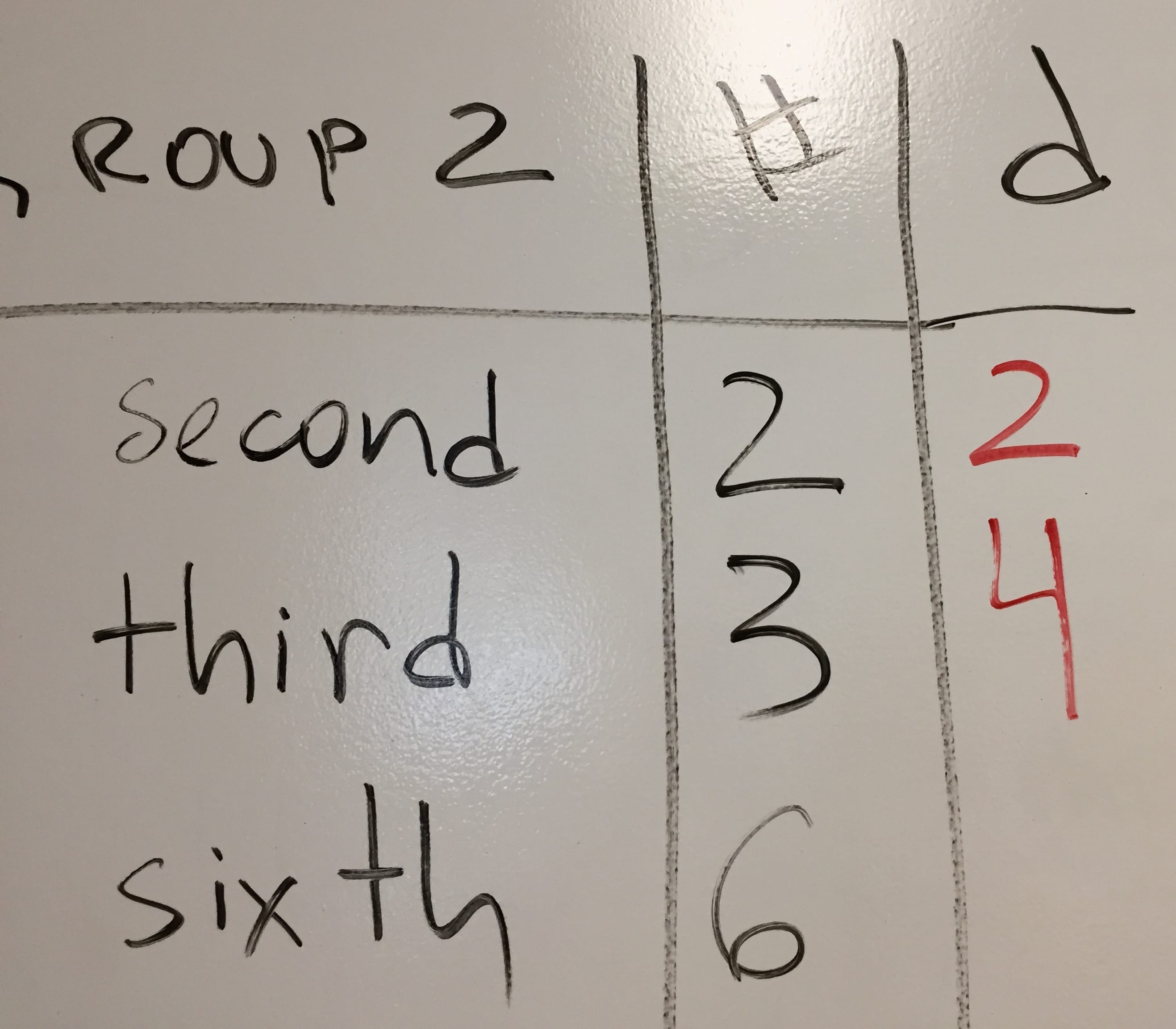
Next number if 5. Why? Look at the keyboard above and count the semitones between C and F.
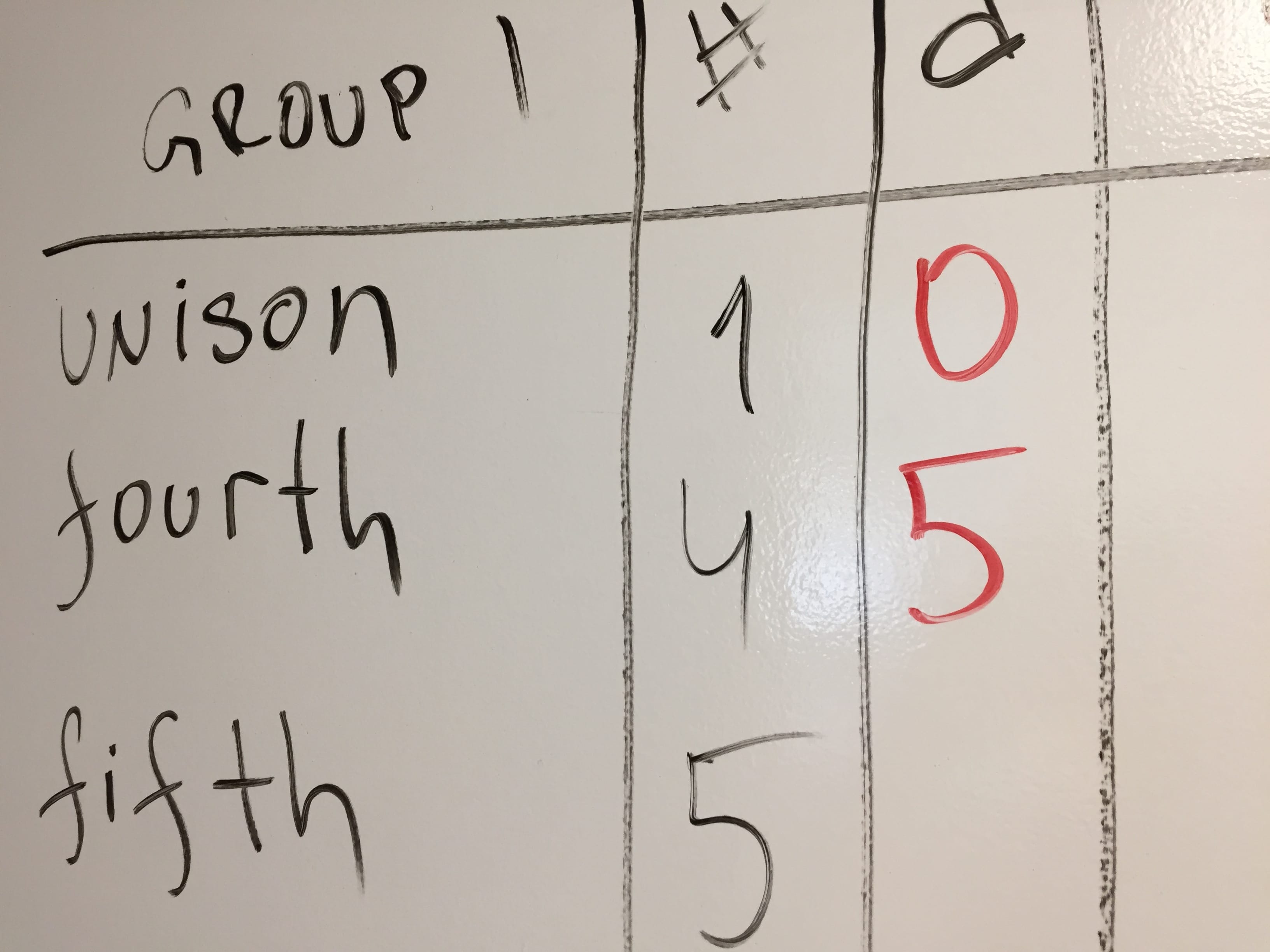
Next number is 7. Why? There are C♯, D, D♯, E, F, F♯, G (7 in total) semitones between C and G.
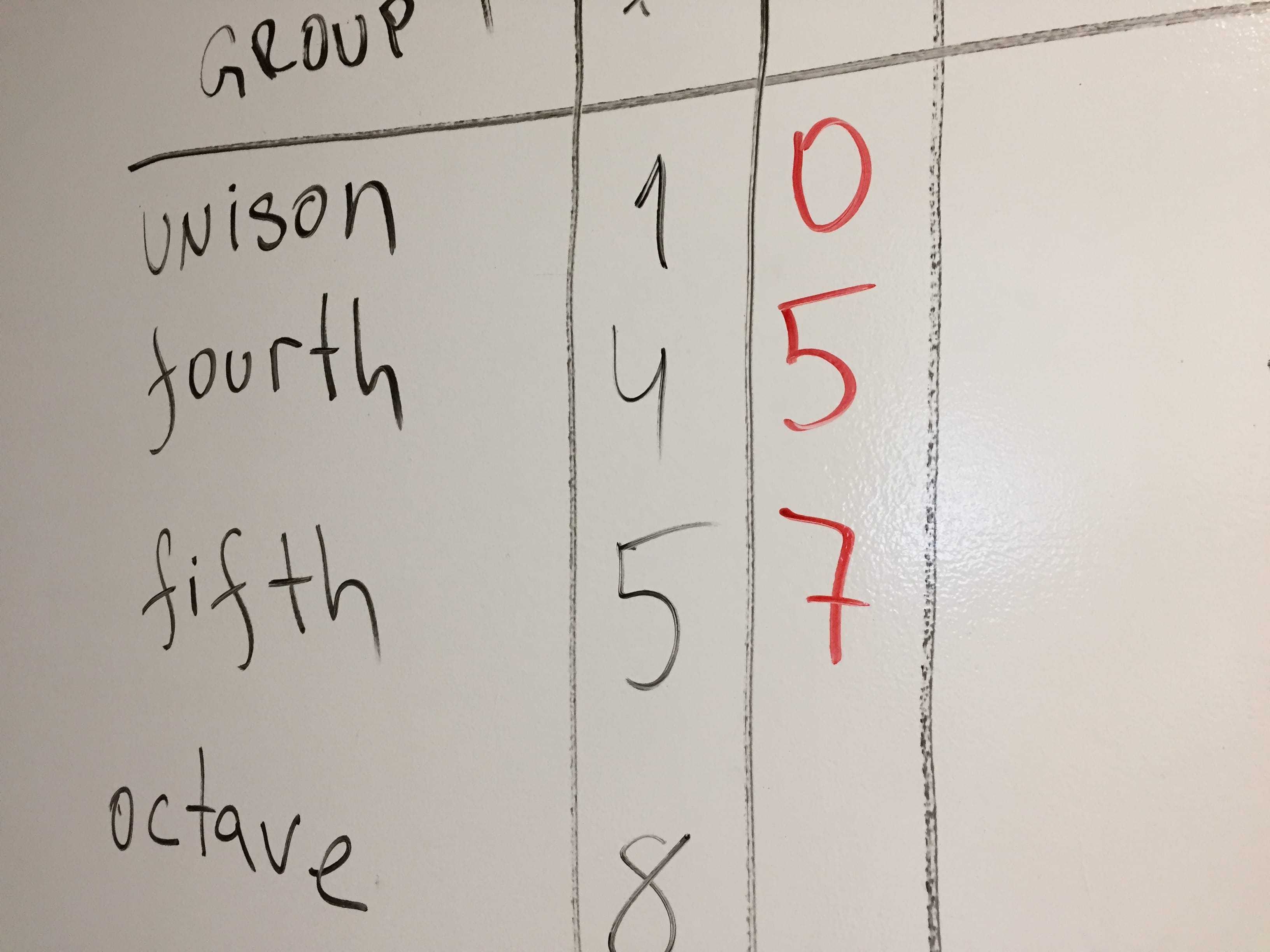
The distance from C to A is 9 semitones as you can see keyboard picture above.
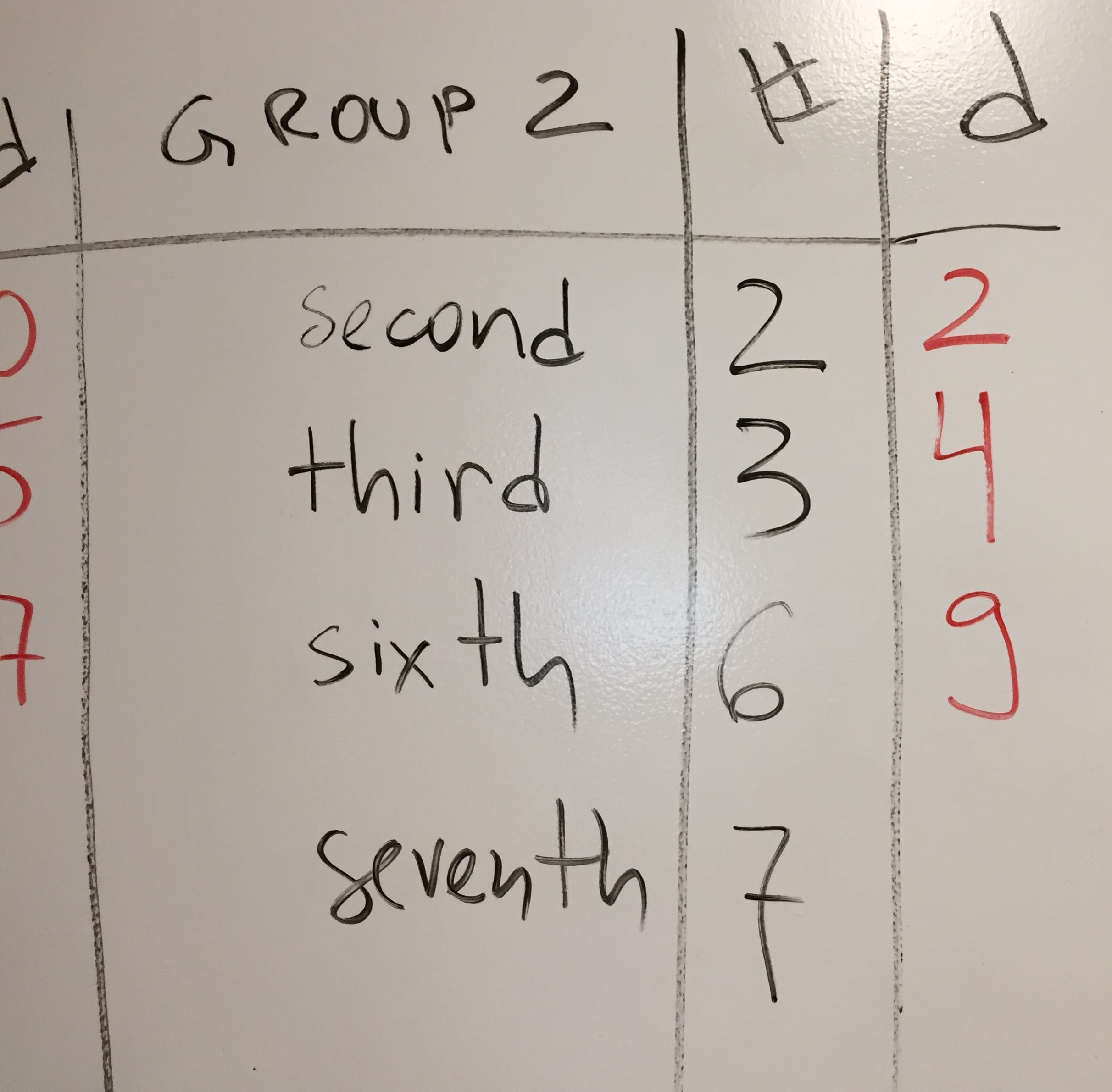
To wrap it up – C to B is 11 semitones and C to C is 12.
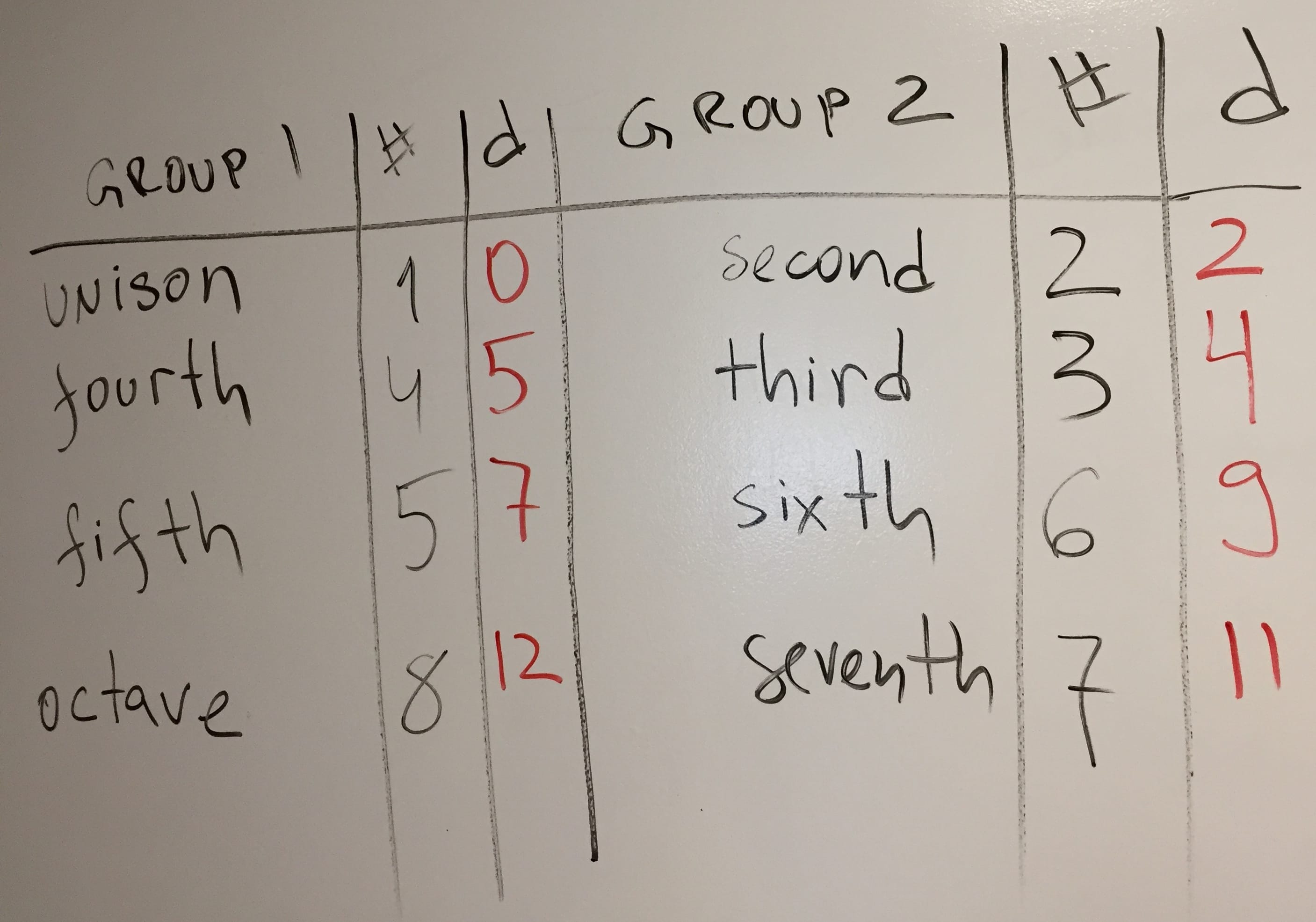
“Group 1” and “group 2” aren’t particularly cool names. We need something better. Let’s put a P in the left group.
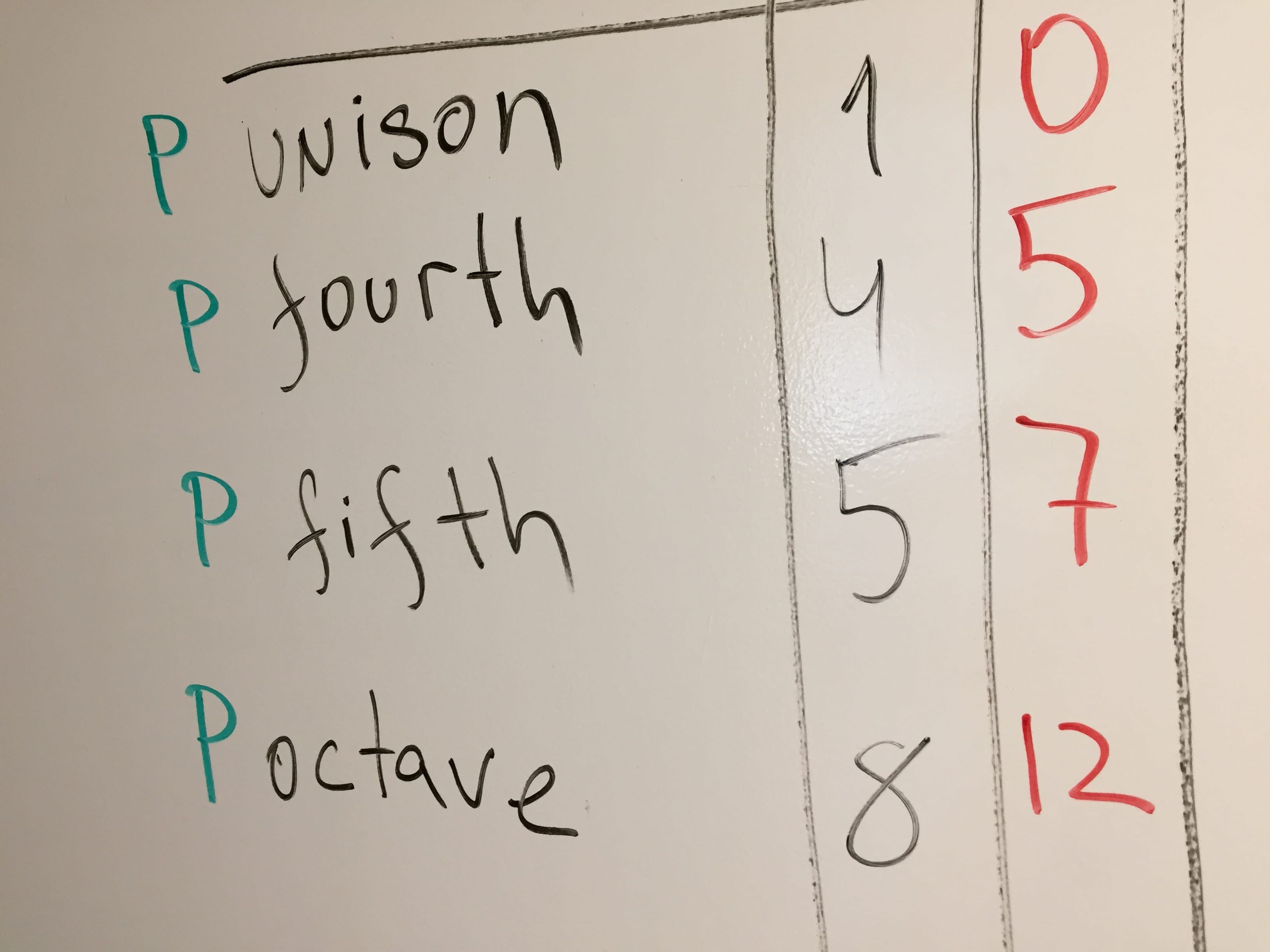
P stands for “perfect”. Let’s call the whole group the perfect group.
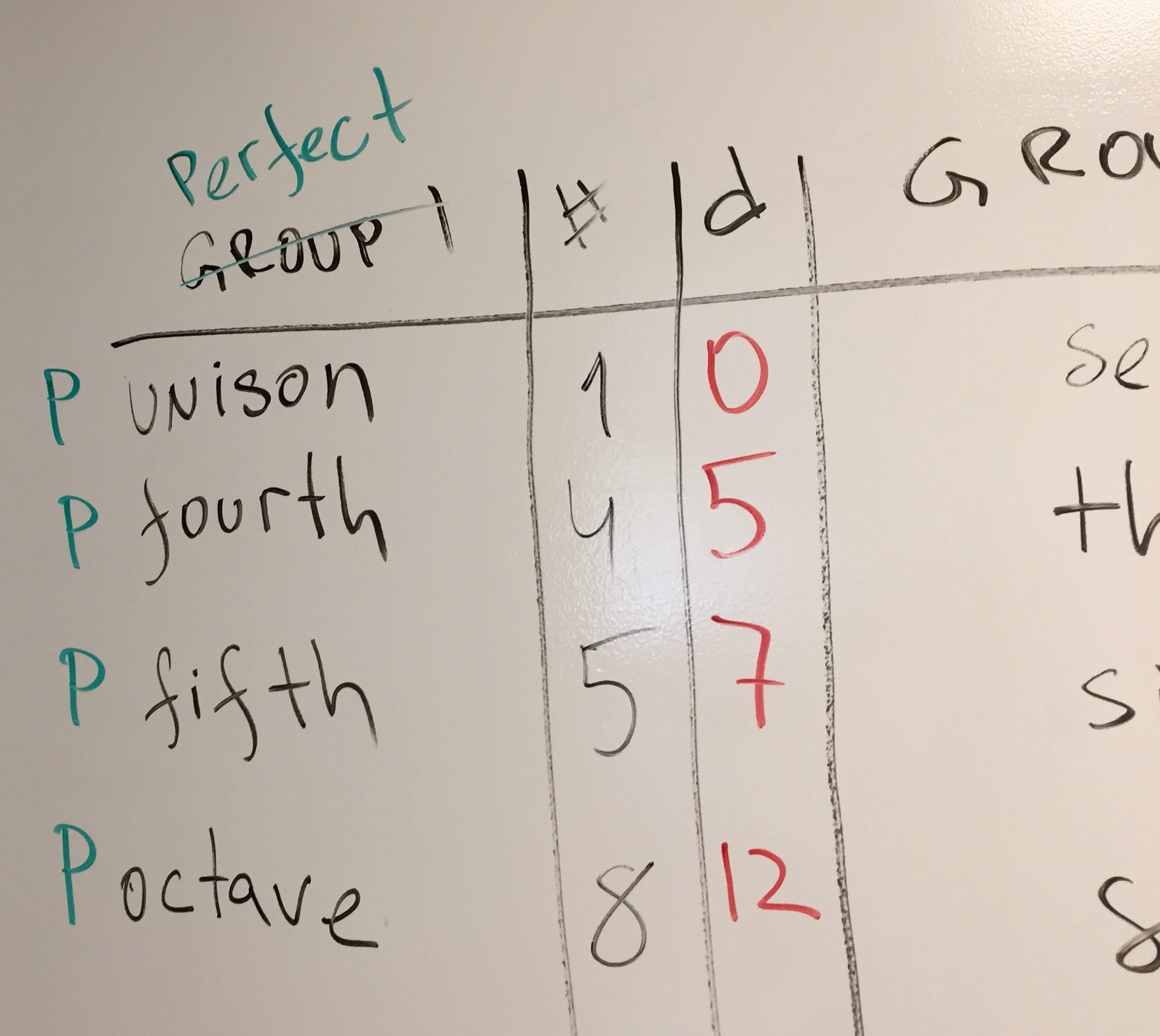
The second group is called the Major group.
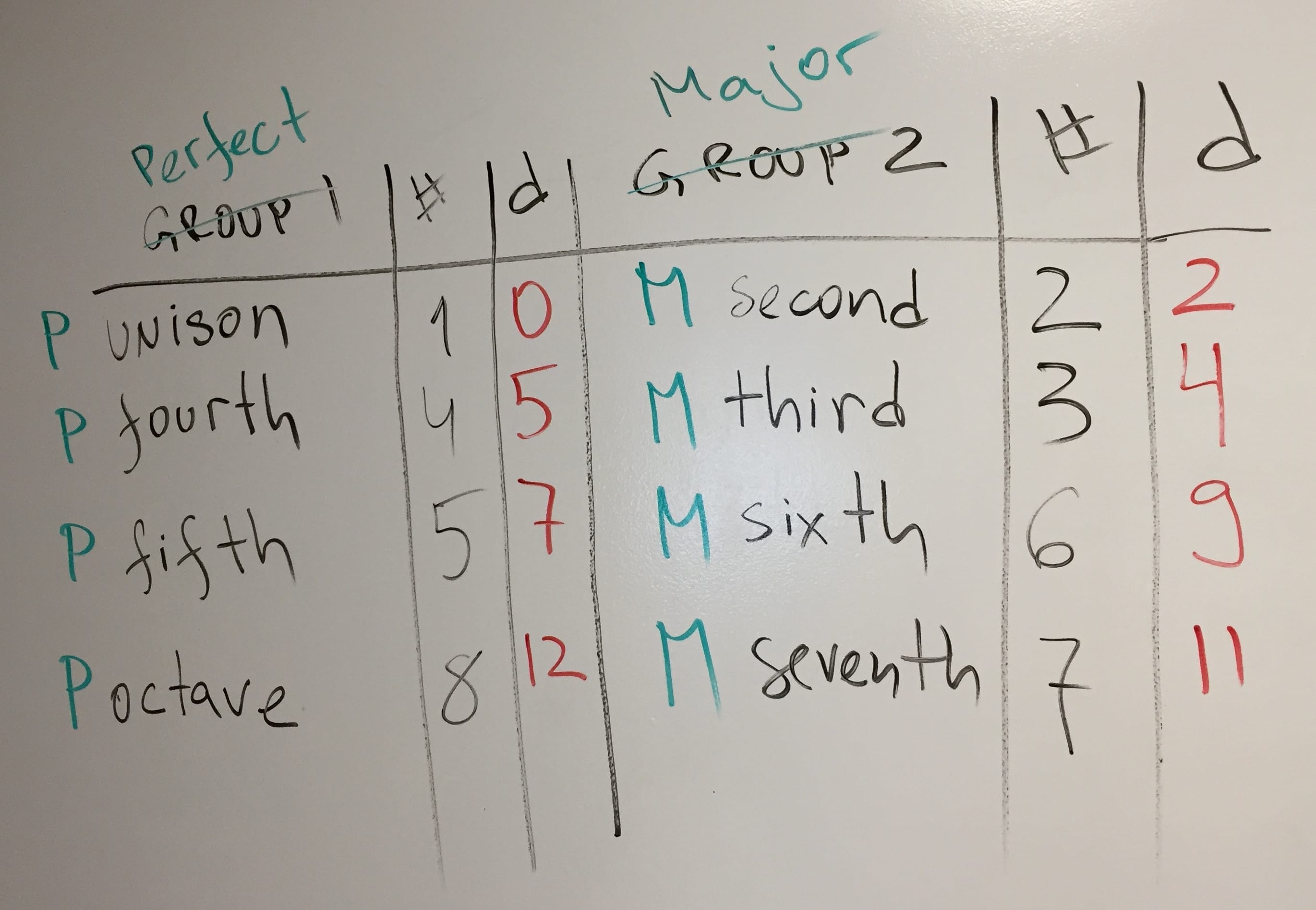
Now let’s stop here for now and see how to use what we have so fat in the next post.
Adios!
Aside: Why the name Perfect? Cool story.
Imagine a string. Pluck it. Now another string that’s exactly half as long the first. Pluck. The twice-as-short string makes a very similar sound only higher (an octave above). If you play the two together, they sound good even to the pre-historic human. Perfect actually. (Today we call it Perfect 8th.)
Now the unison is two strings of the same length vibrating. They sound the same and they sound good together. Boo-boo the Conqueror of the Cave as well as Bach both will agree they sound perfect together. (Only Bach would say the two sounds are in a perfect unison.)
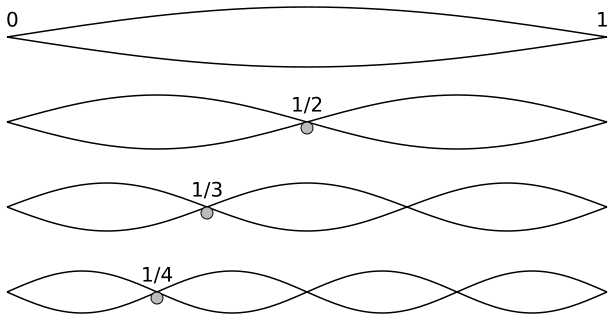
If you shorten the second string to be 1/3 of the length of the first, the two still sound good together. A perfect 5th. Ask all heavy metal and punk guitar players – this interval is just perfect for most songs. When you play C and G together with a distorted guitar it sounds awesome. C and G#? Not so much.
If you shorten the string by a 1/4 and you play both they still sound good, albeit borderline. Pushing the limit of what your ear would call perfect. This is the perfect forth. Anything else is not so perfect. Therefore it needs a different name – let’s go with Major.
Guitar harmonics
Octave, fifth and fourth (the perfect) also happen to coincide (well, no coincidence really) with where the harmonics of a guitar string are easiest to produce. Harmonics is when you hold your finger but not press on the string above 12th, 7th and 5th fret. 12th fret (the octave) is the easiest and perfectiest, the 5th fret is borderline (the perfect fourth interval).
12th fret of the guitar is exactly the middle of the string, so no surprise.
Pentatonic? ‘nother cool story.
Pentatonic scale is 5 (penta) notes before you reach an octave. For the longest time in human history it was the only scale before our ears became sophisticated enough to find a few more notes musical. All Chinese music, all Scottish, all blues, all everything for a long while just used a pentatonic.
Example, common in blues guitar – A C D E G. 5. You know what’s cool? You make up this scale only using perfect 5th intervals.
C to G. G to D, D to A, A to E.
Think about this.
